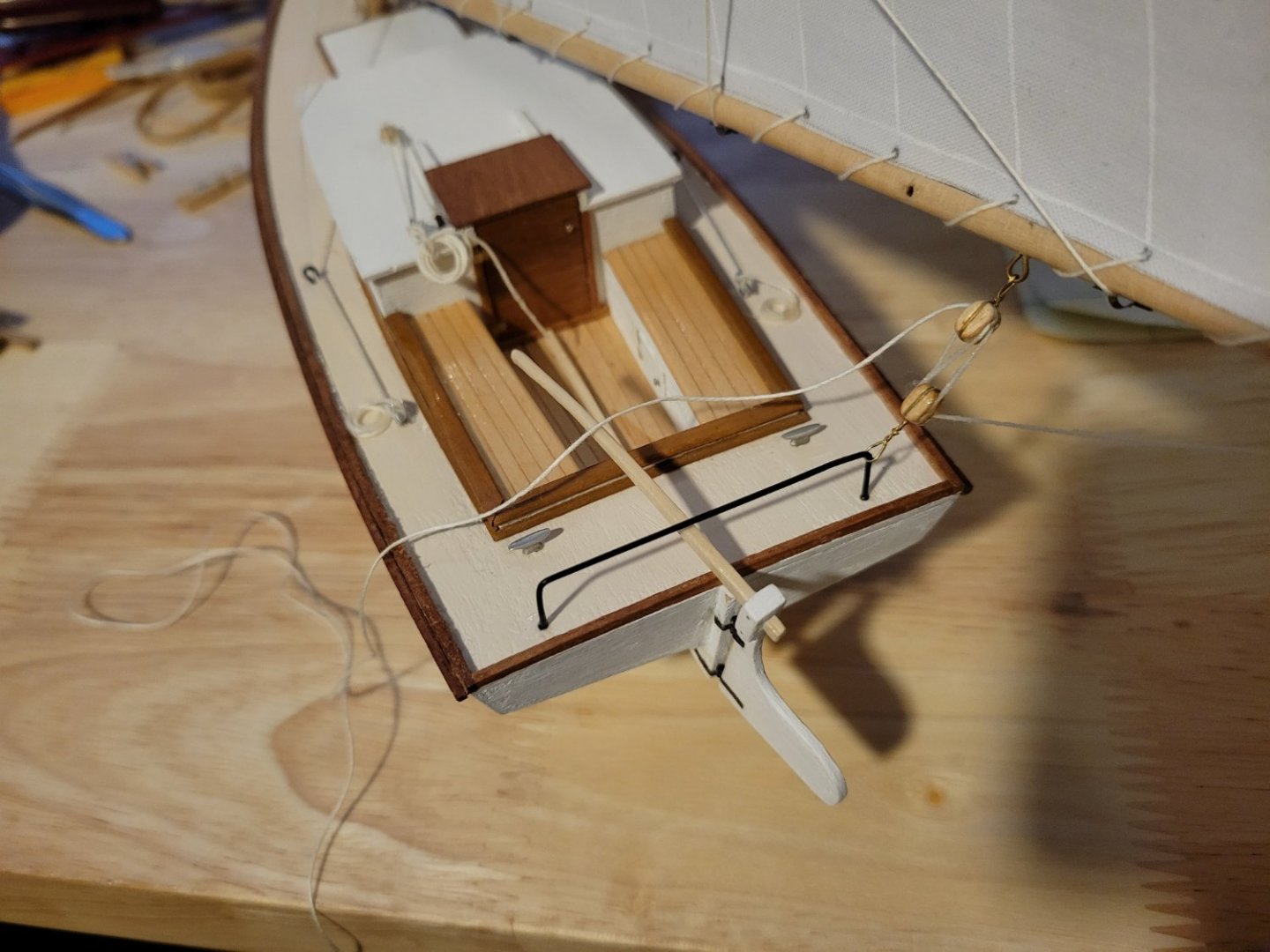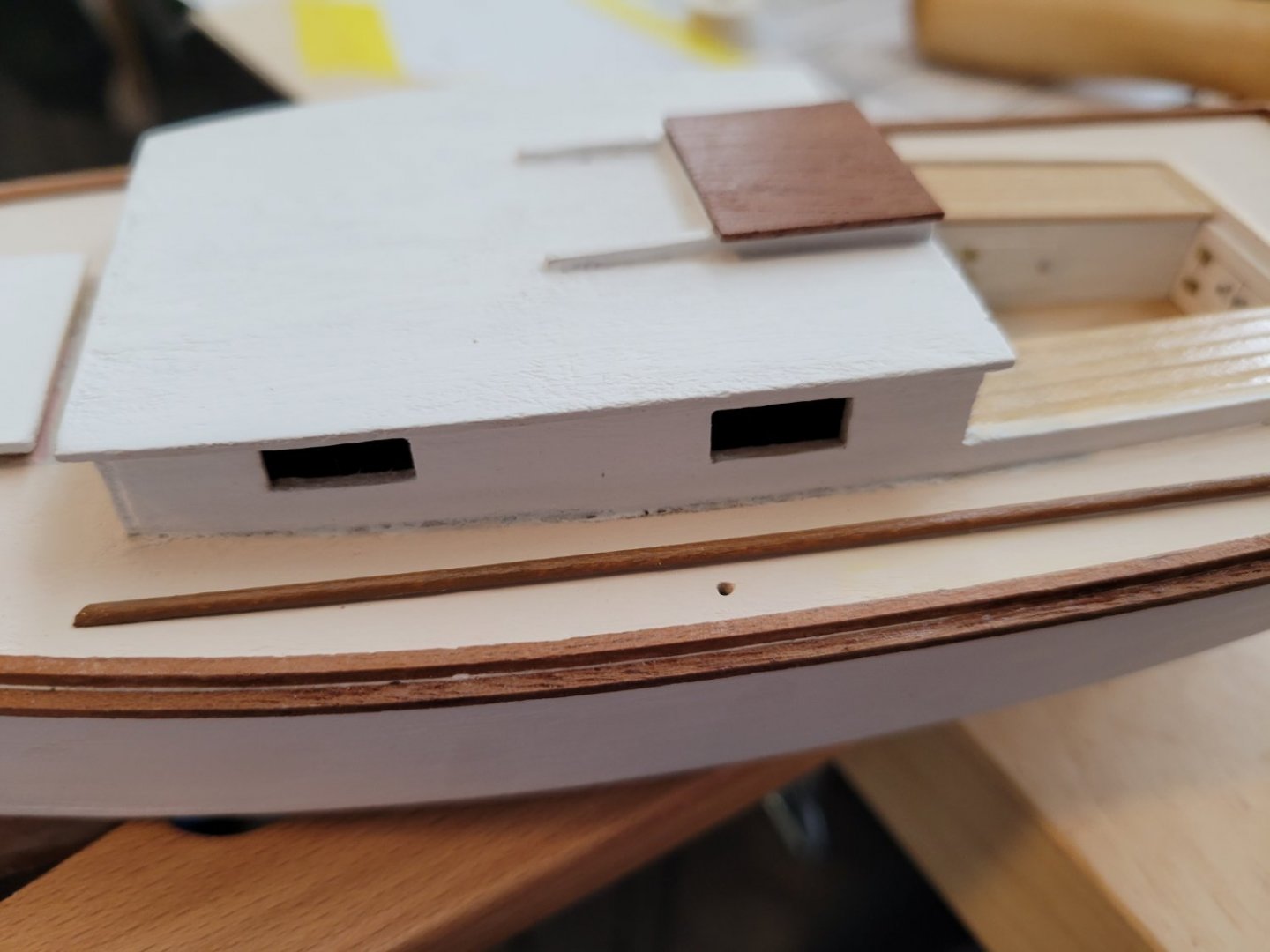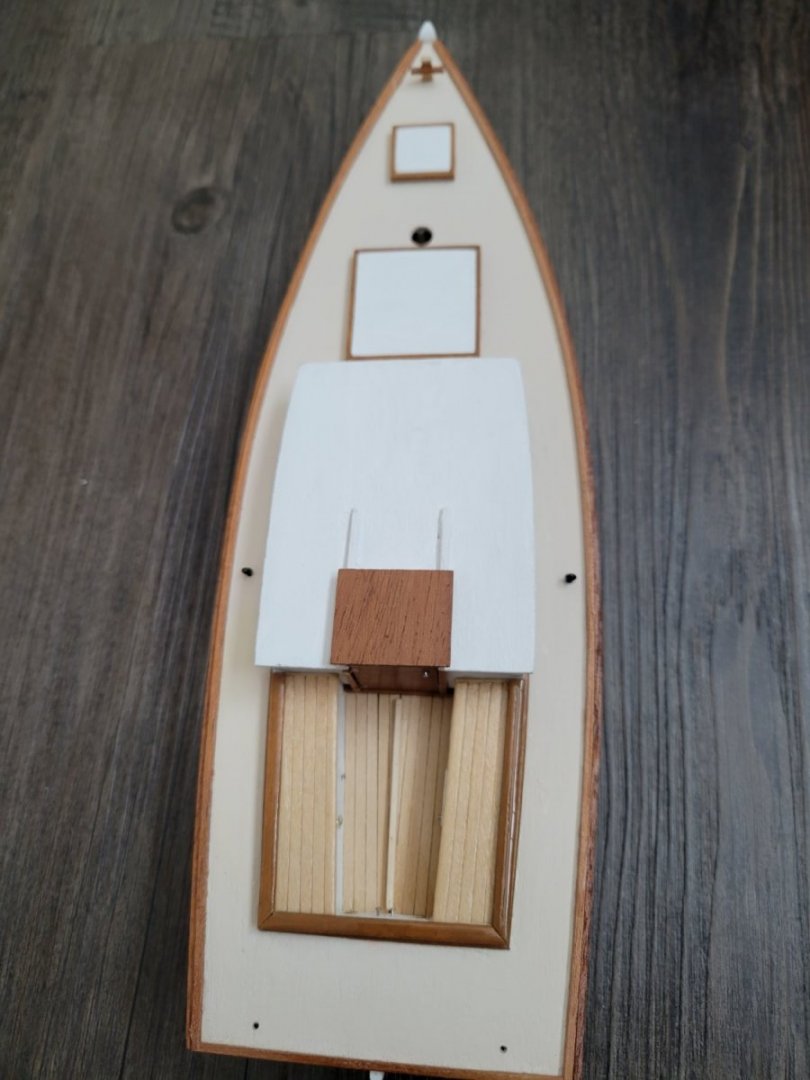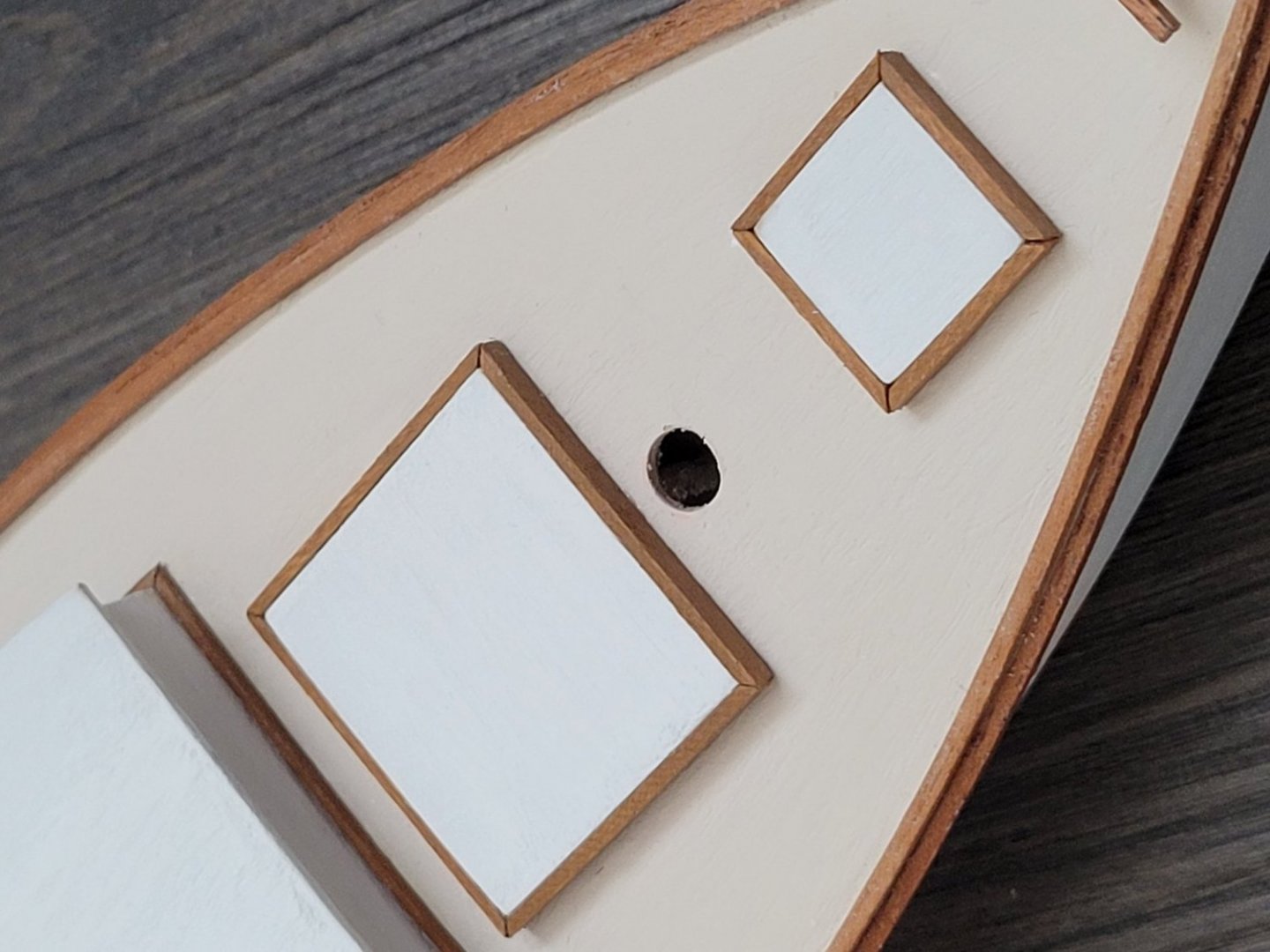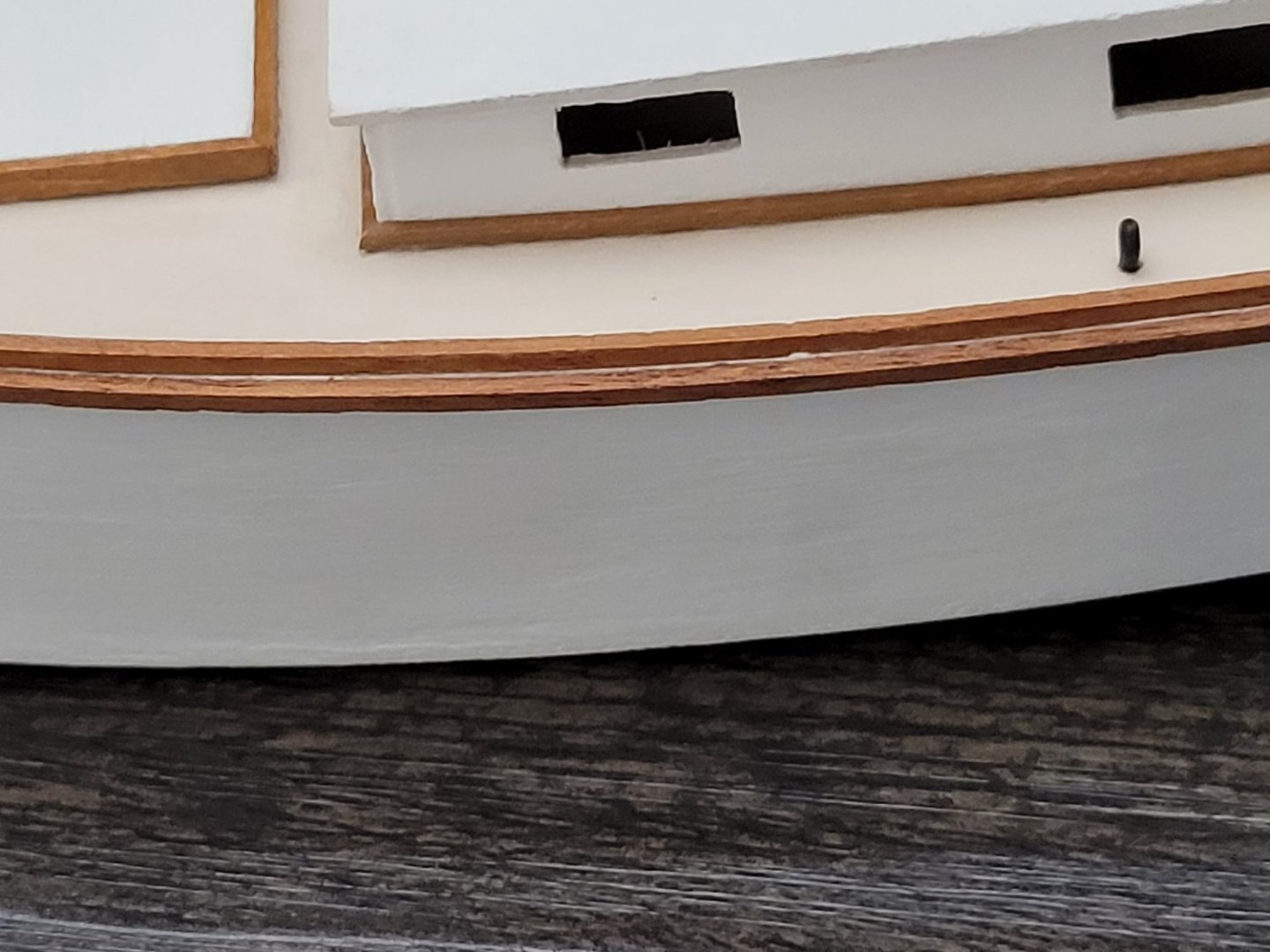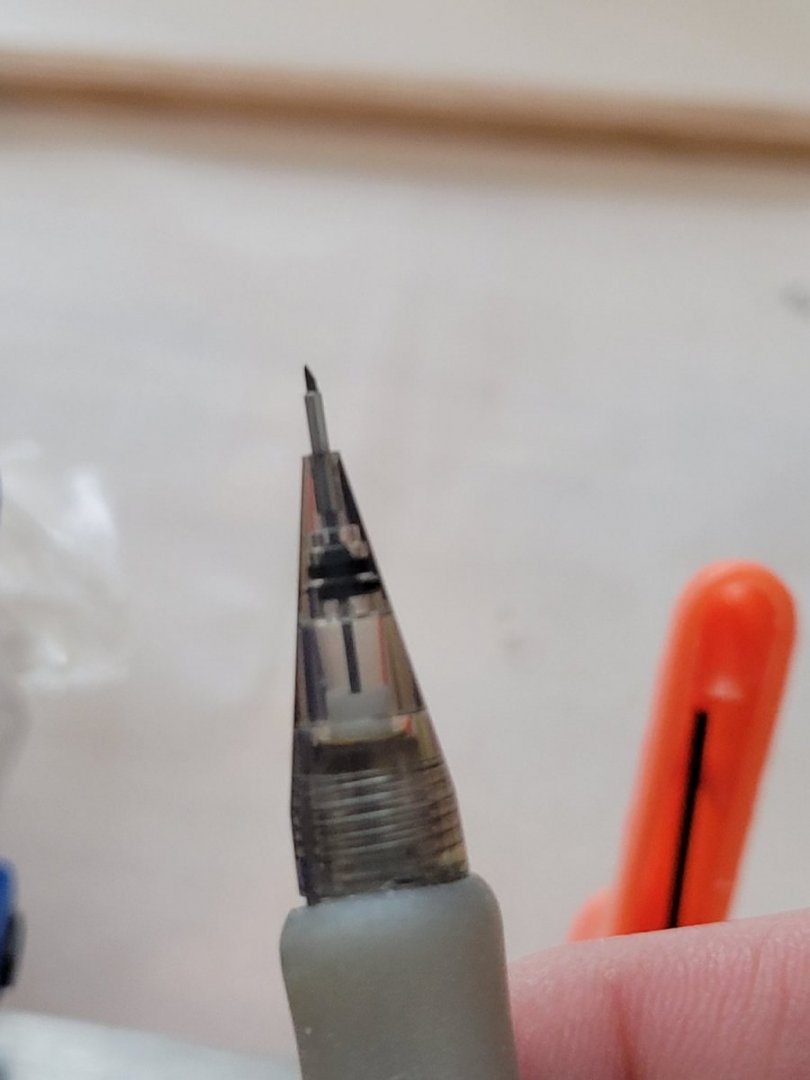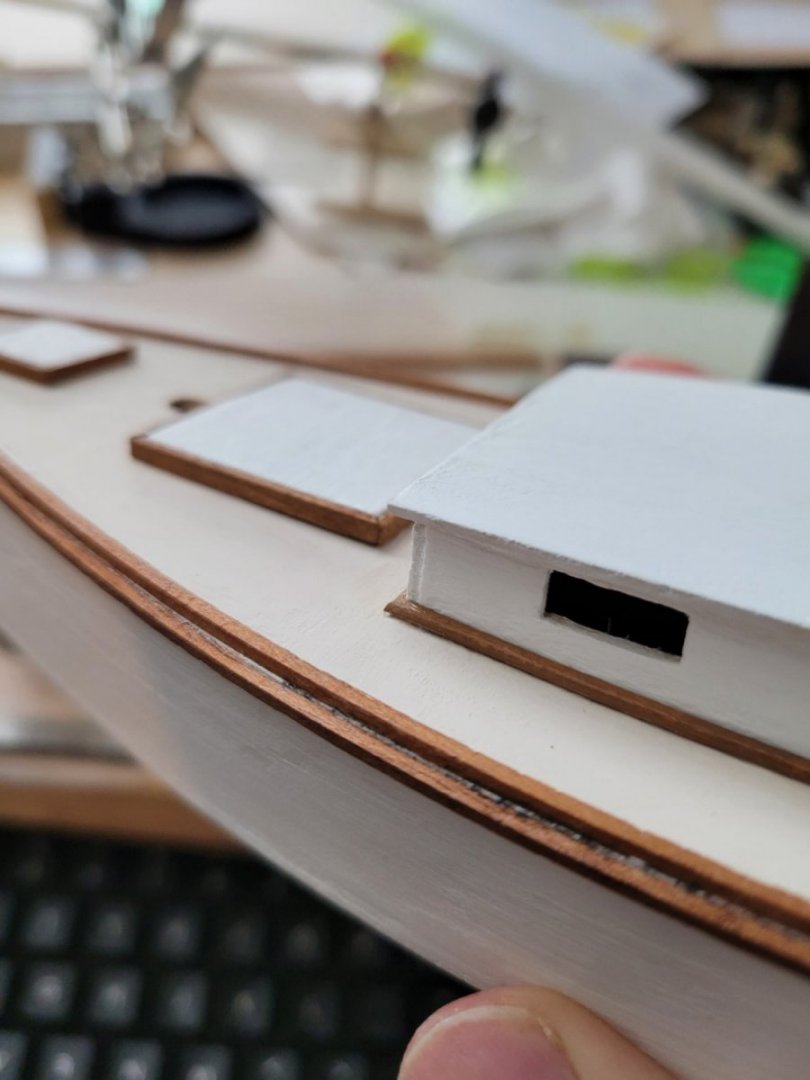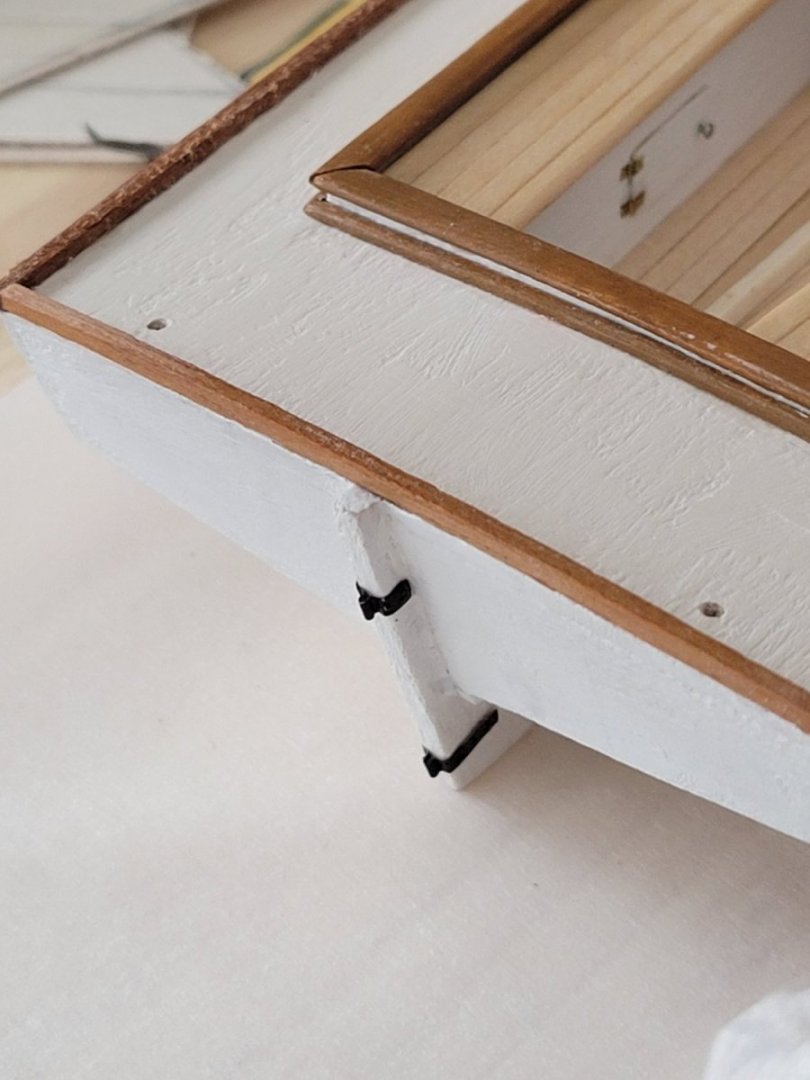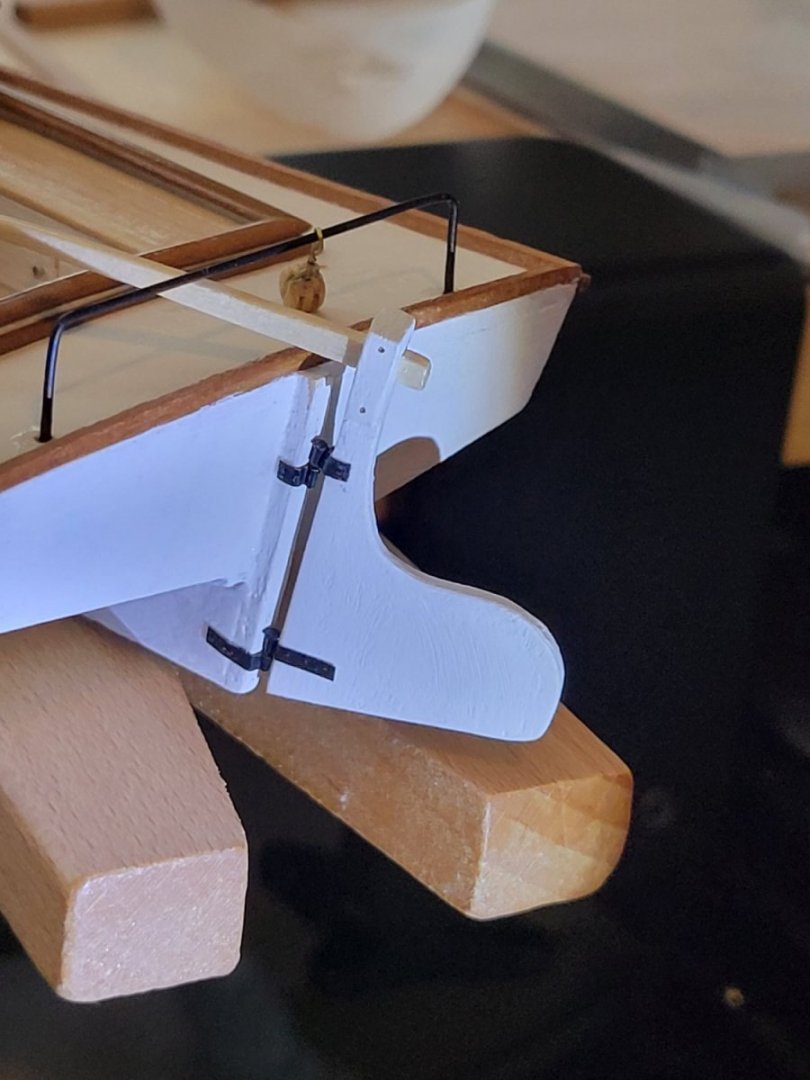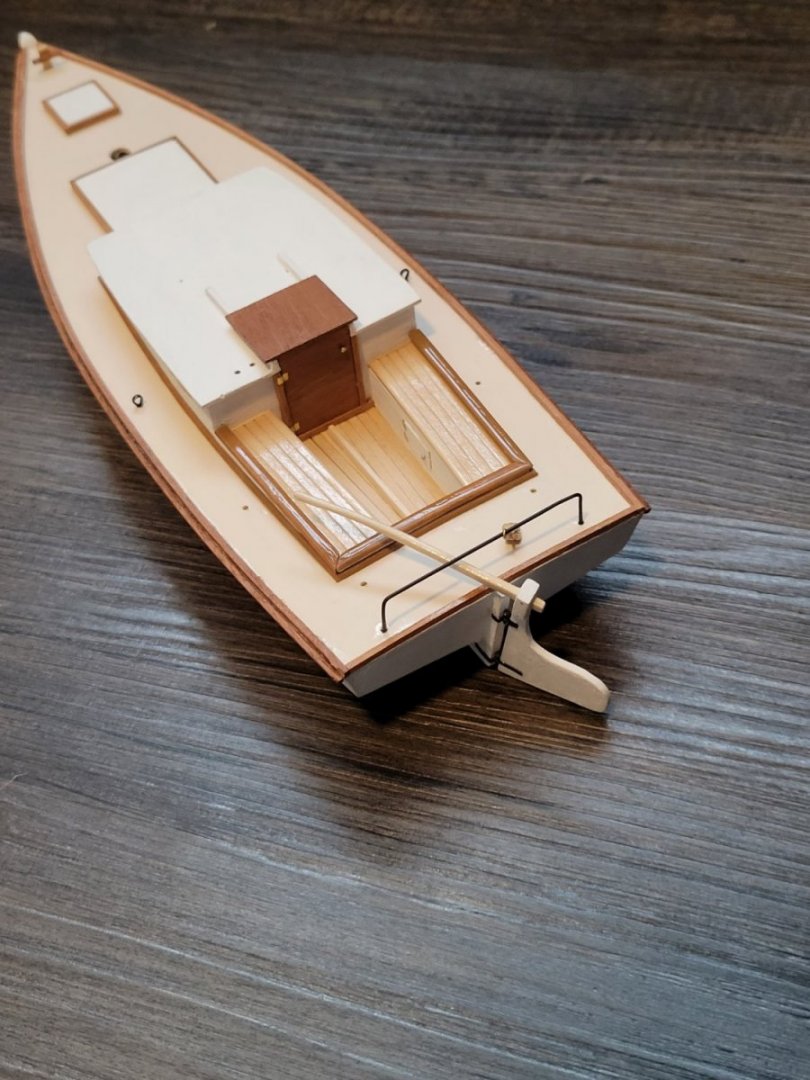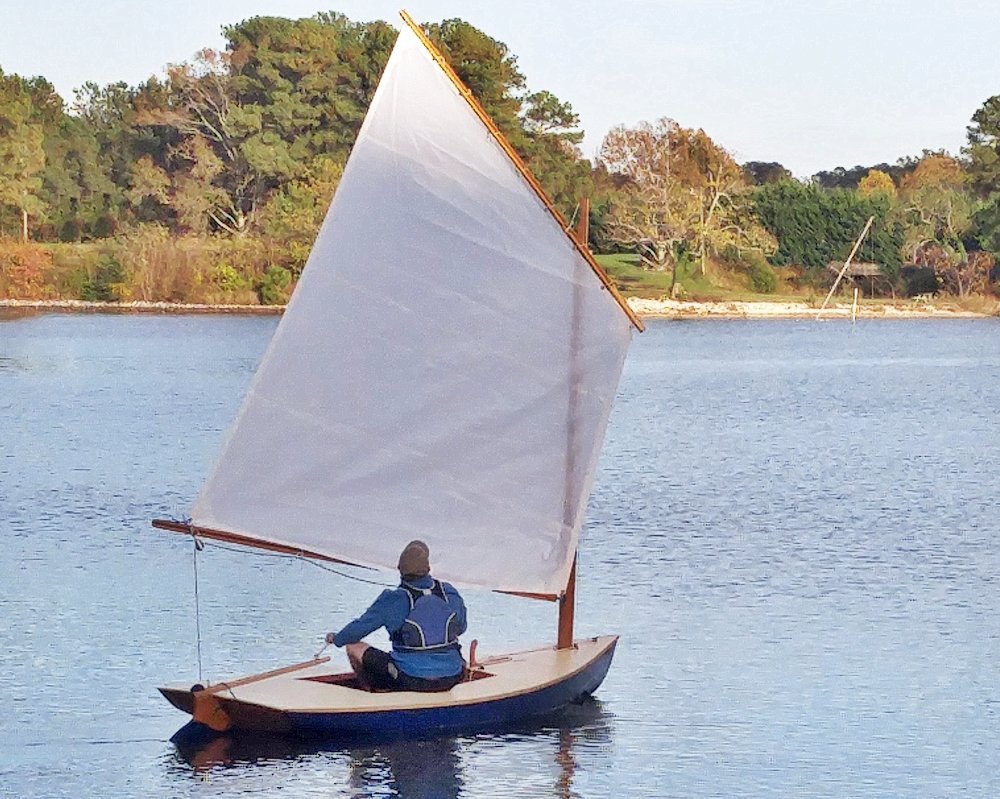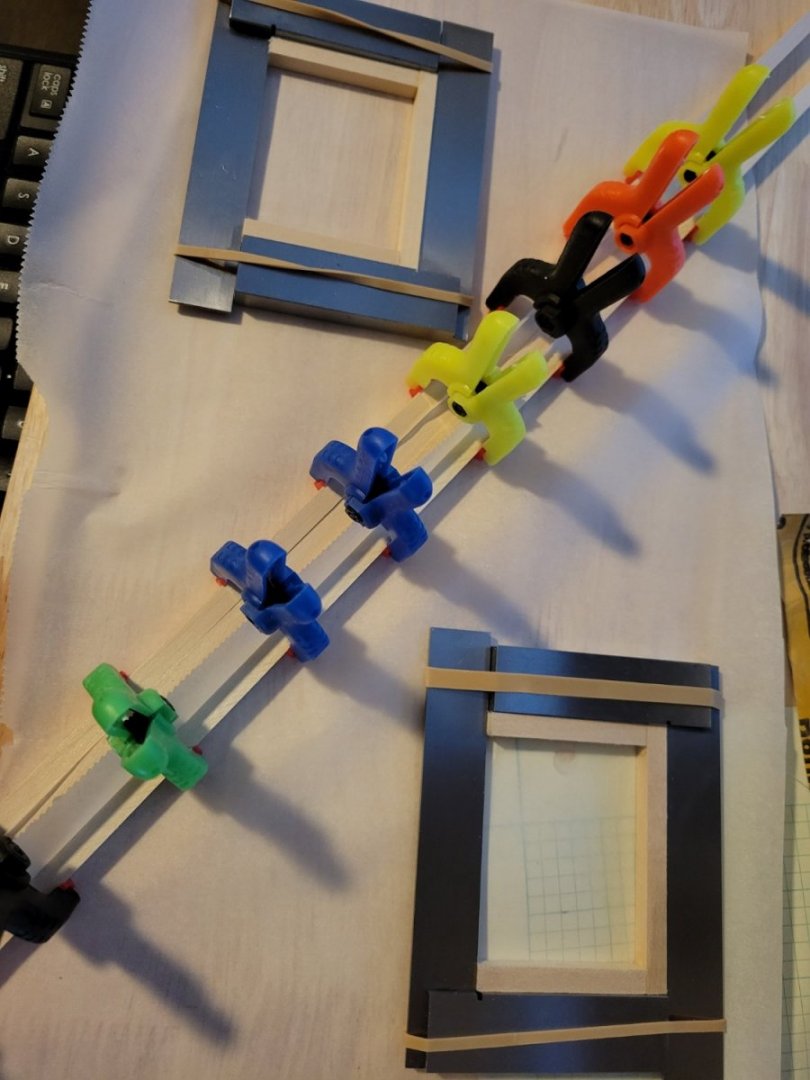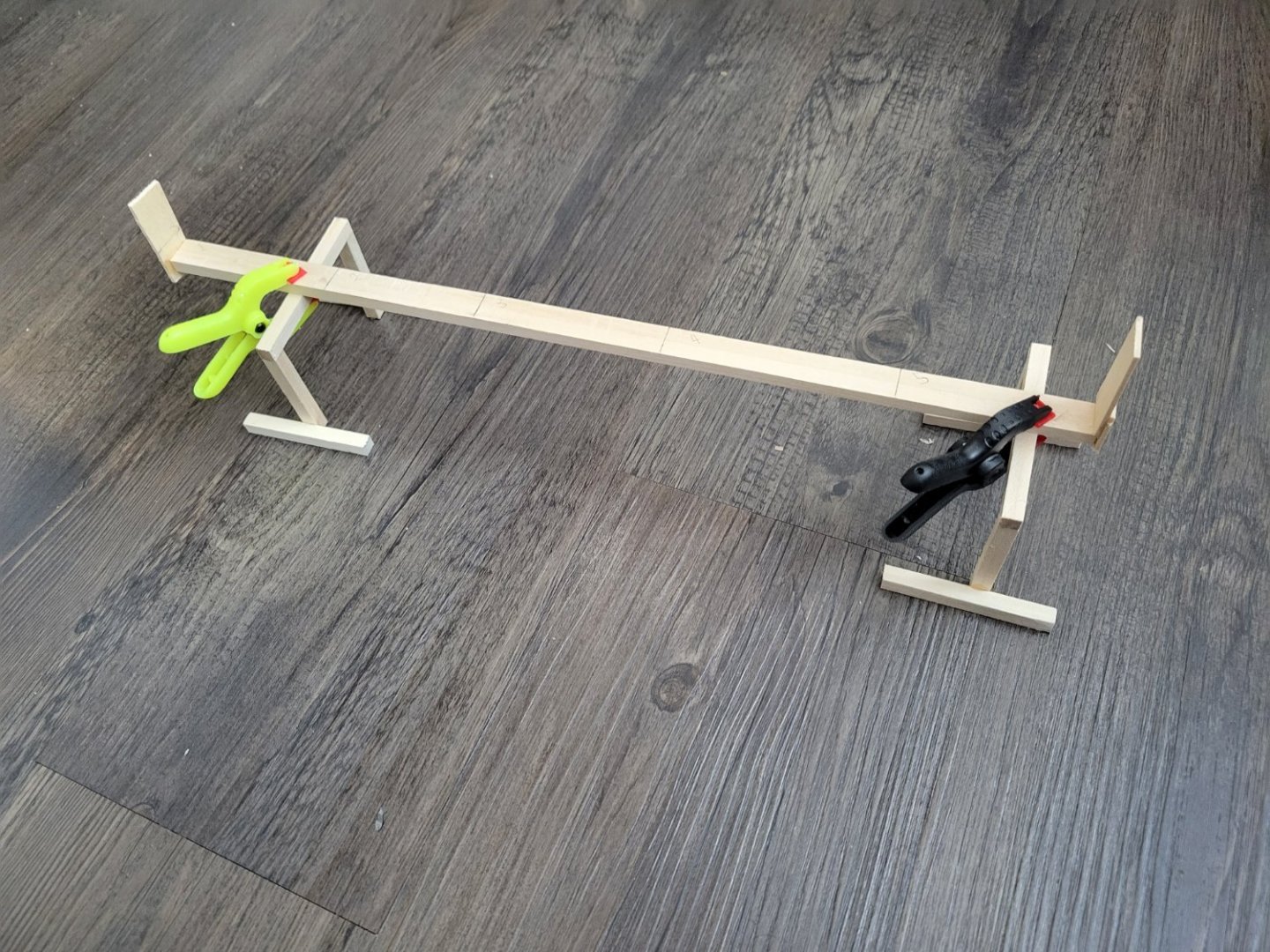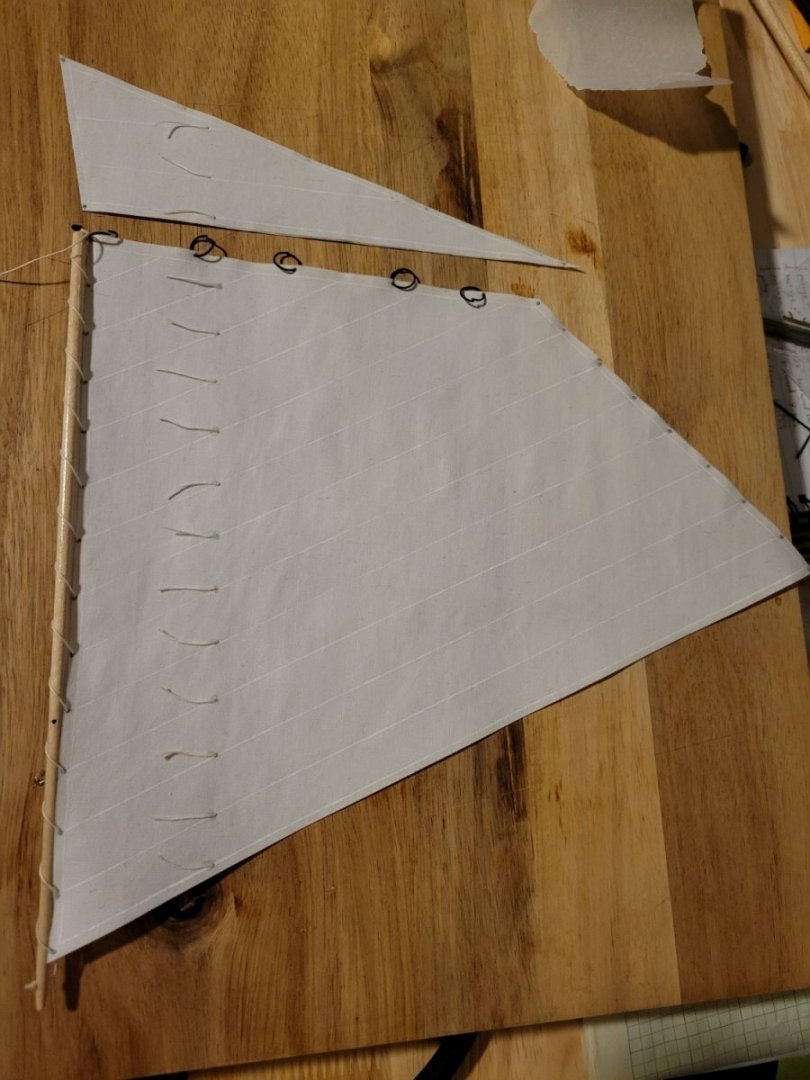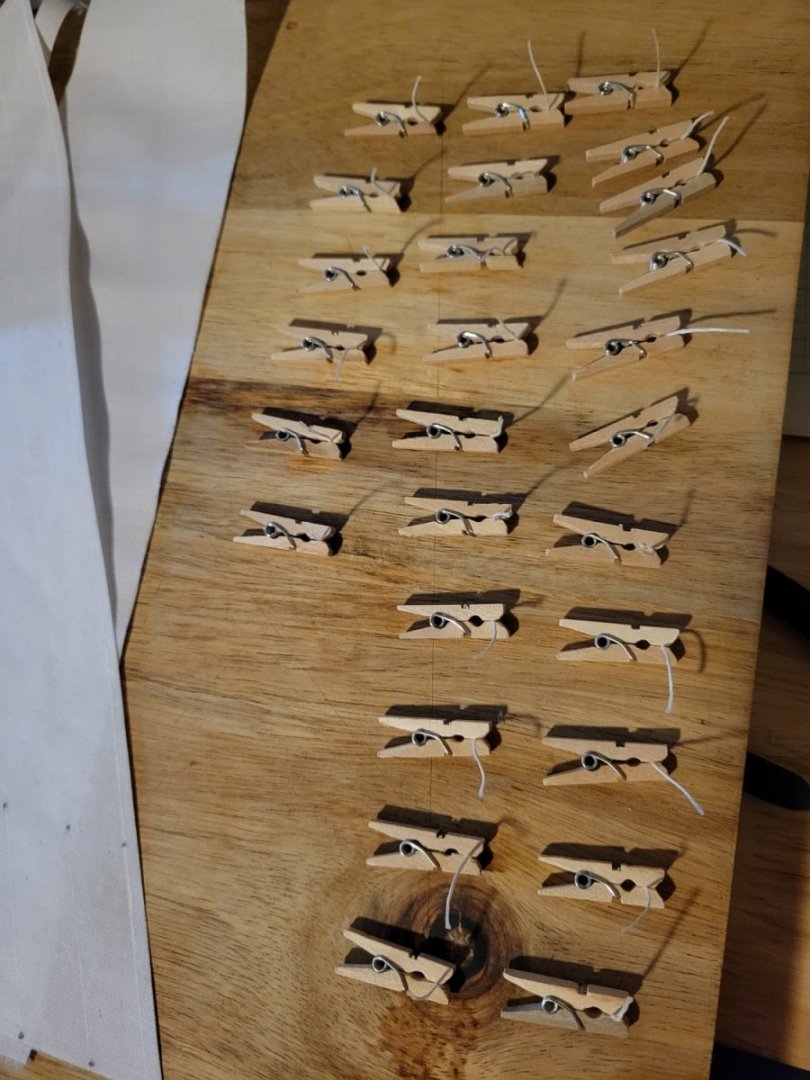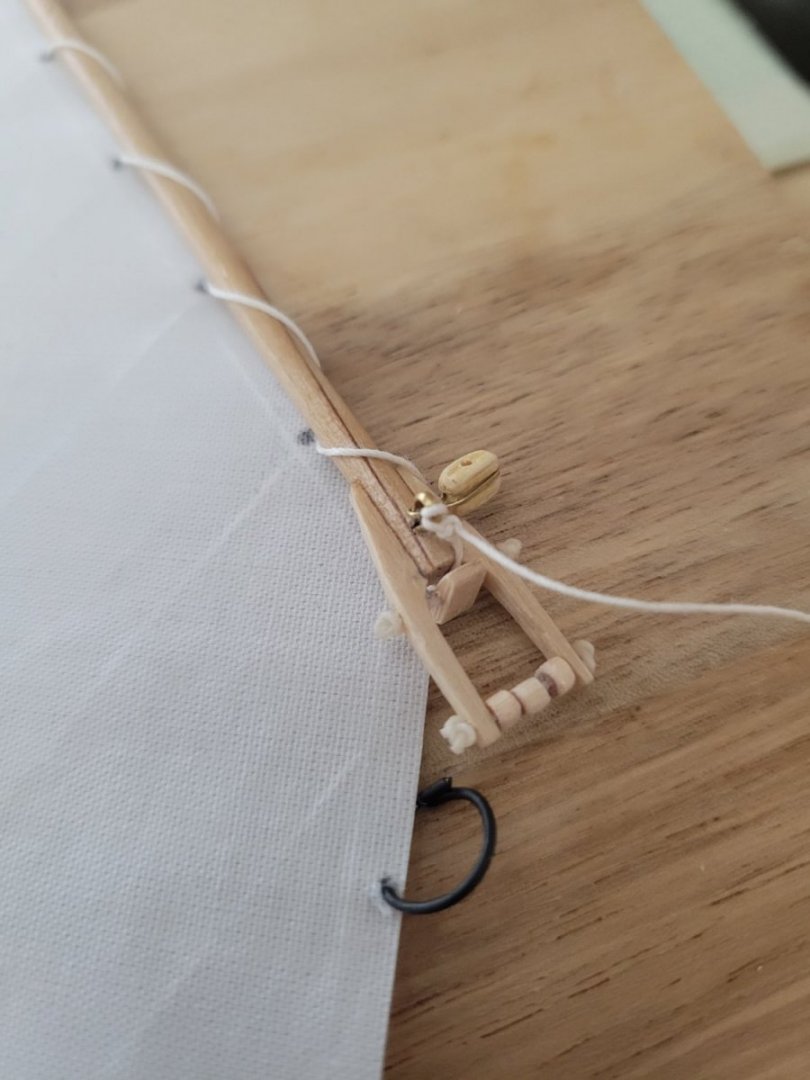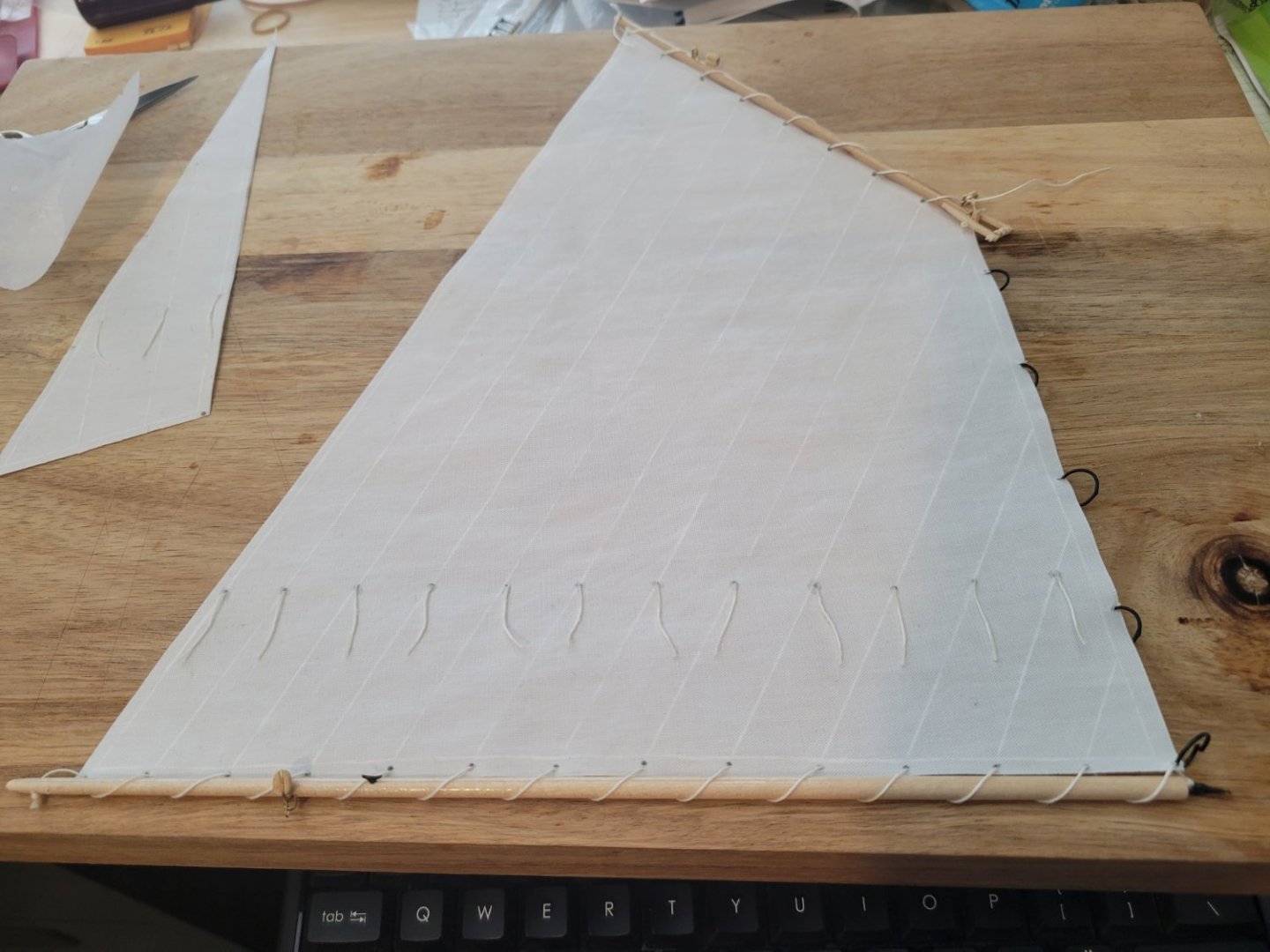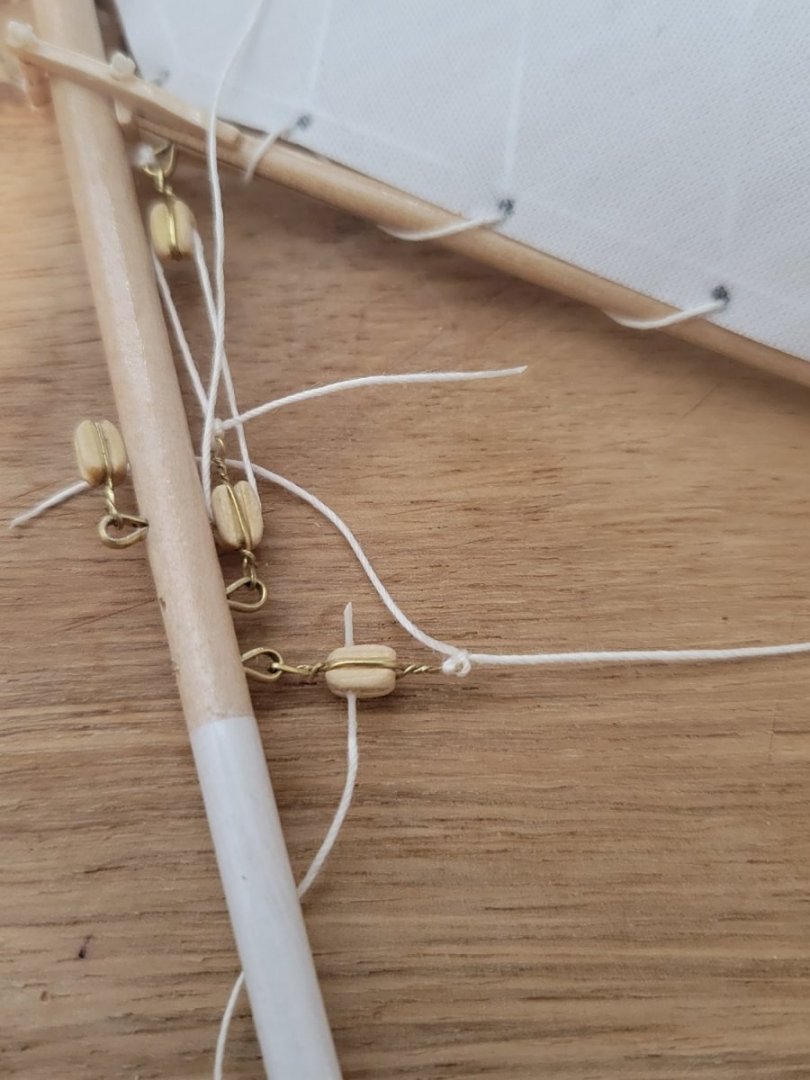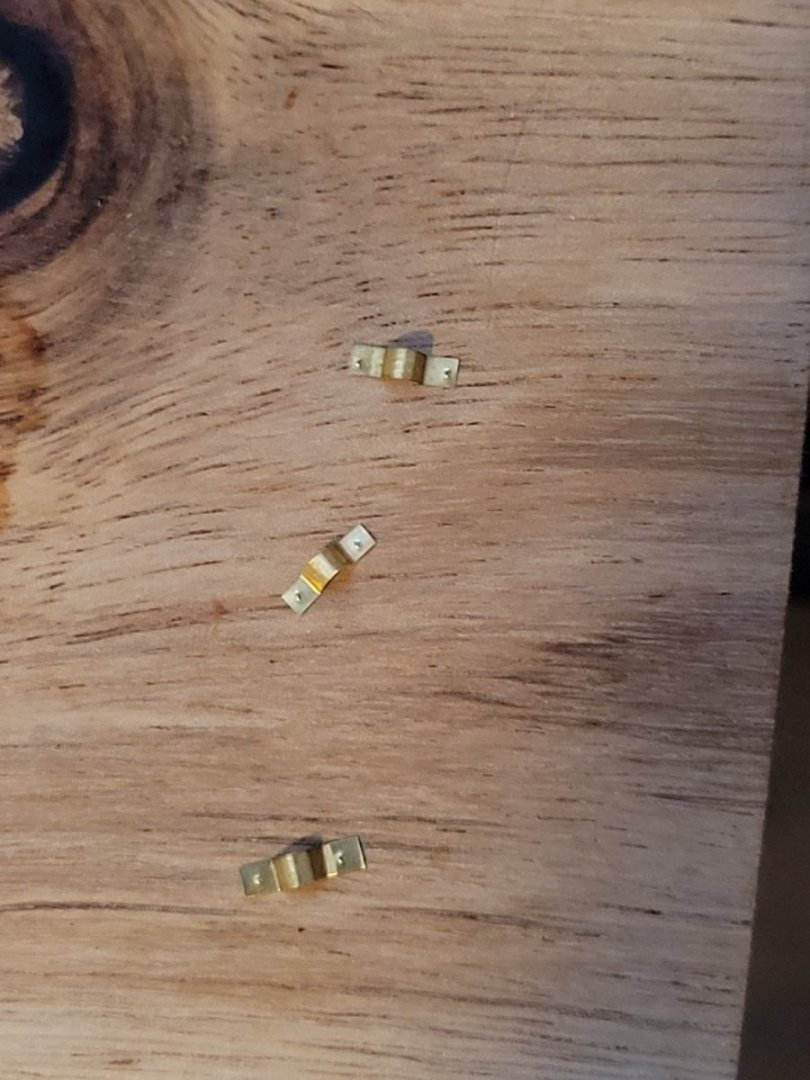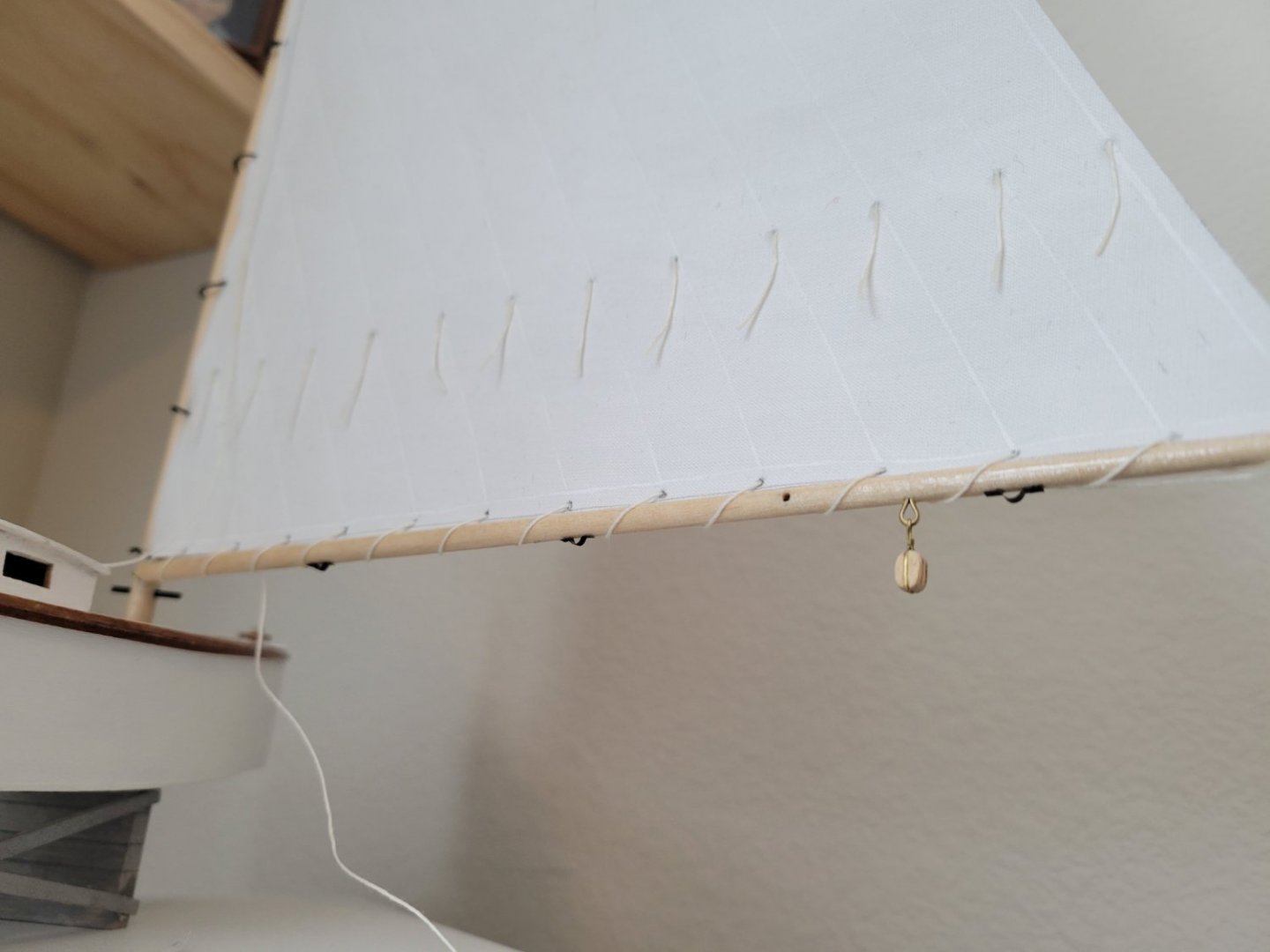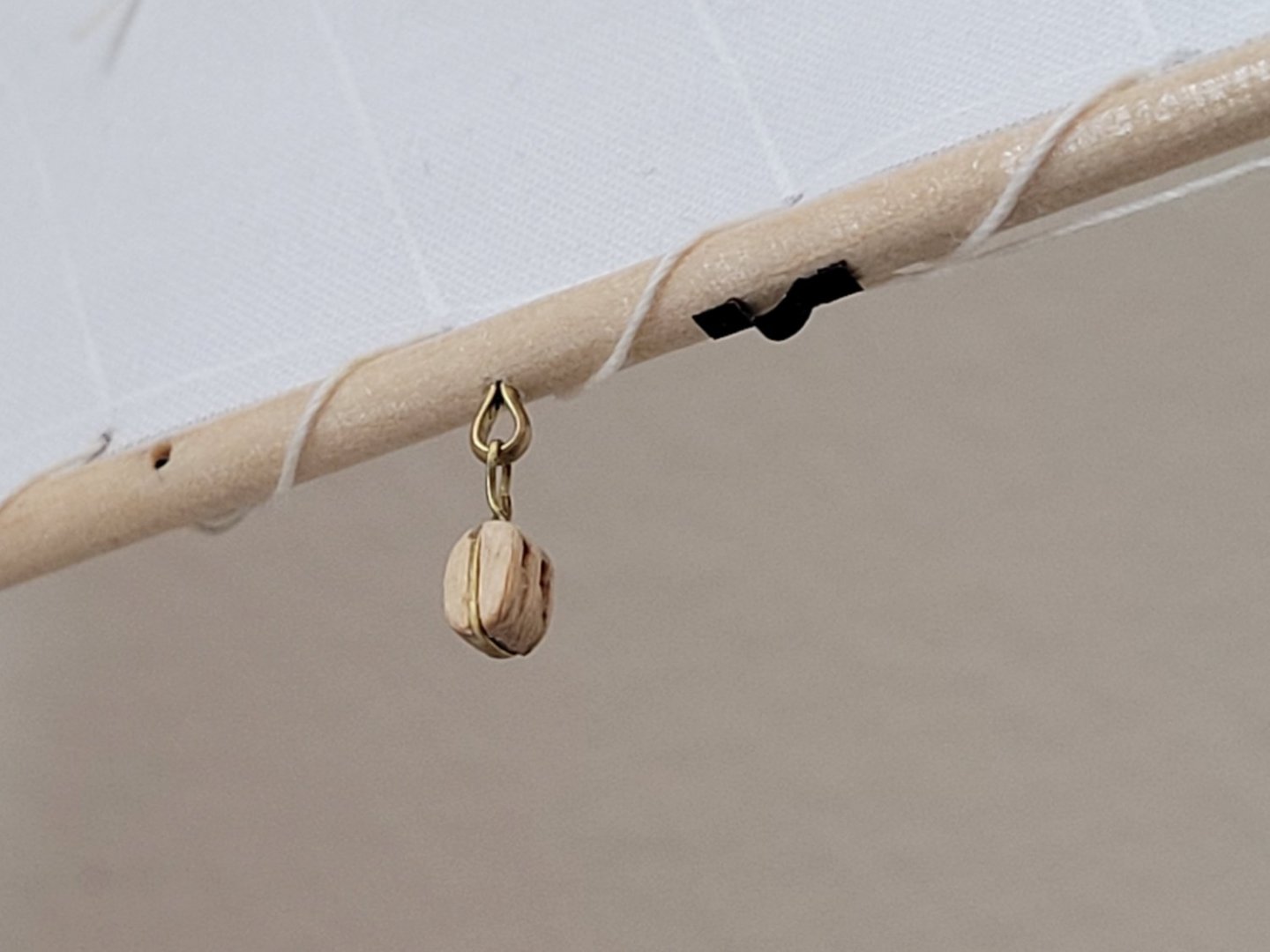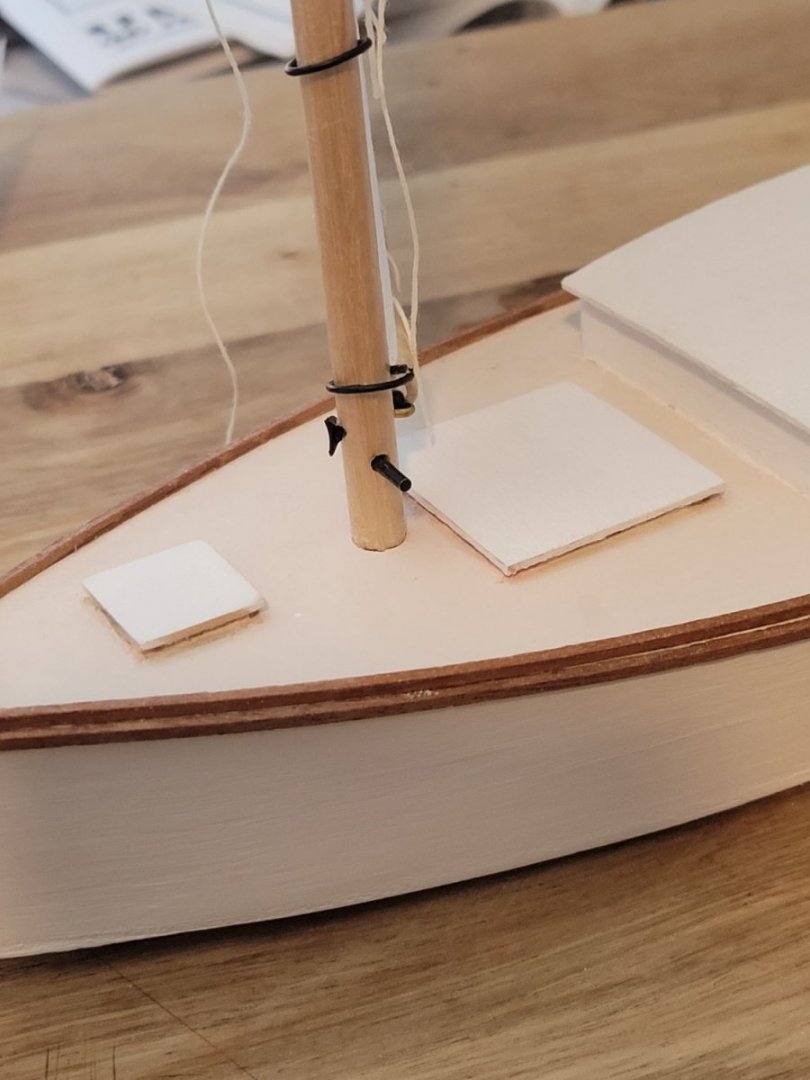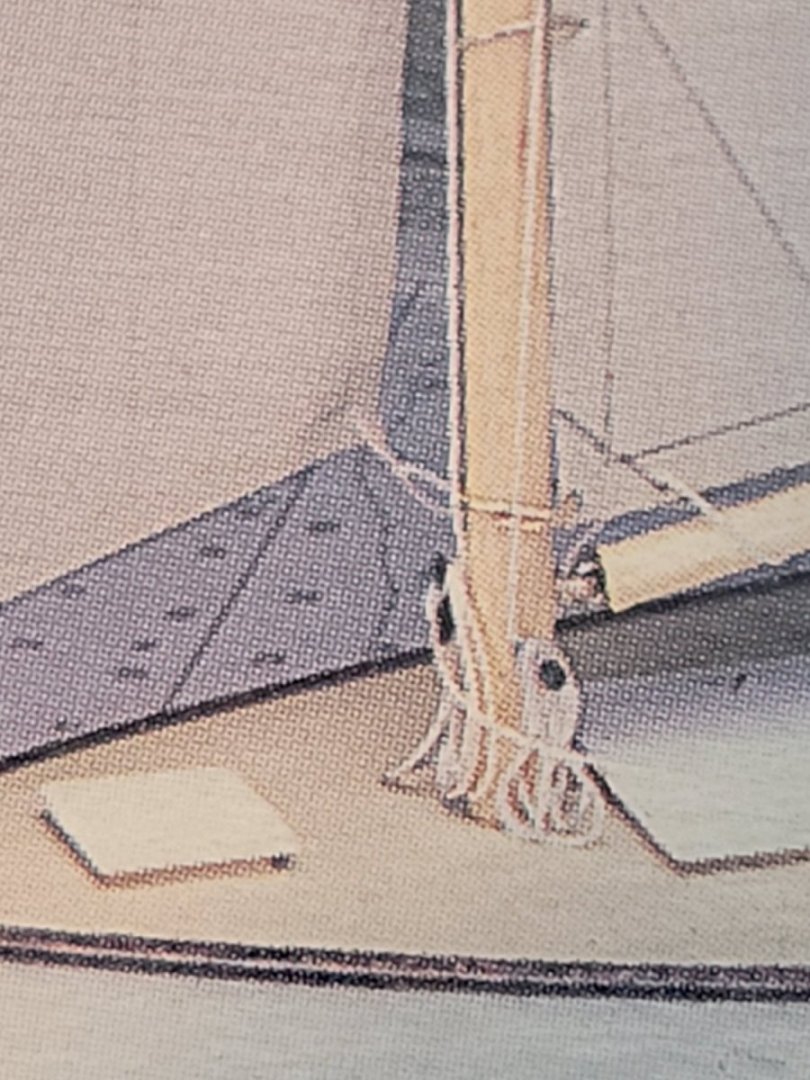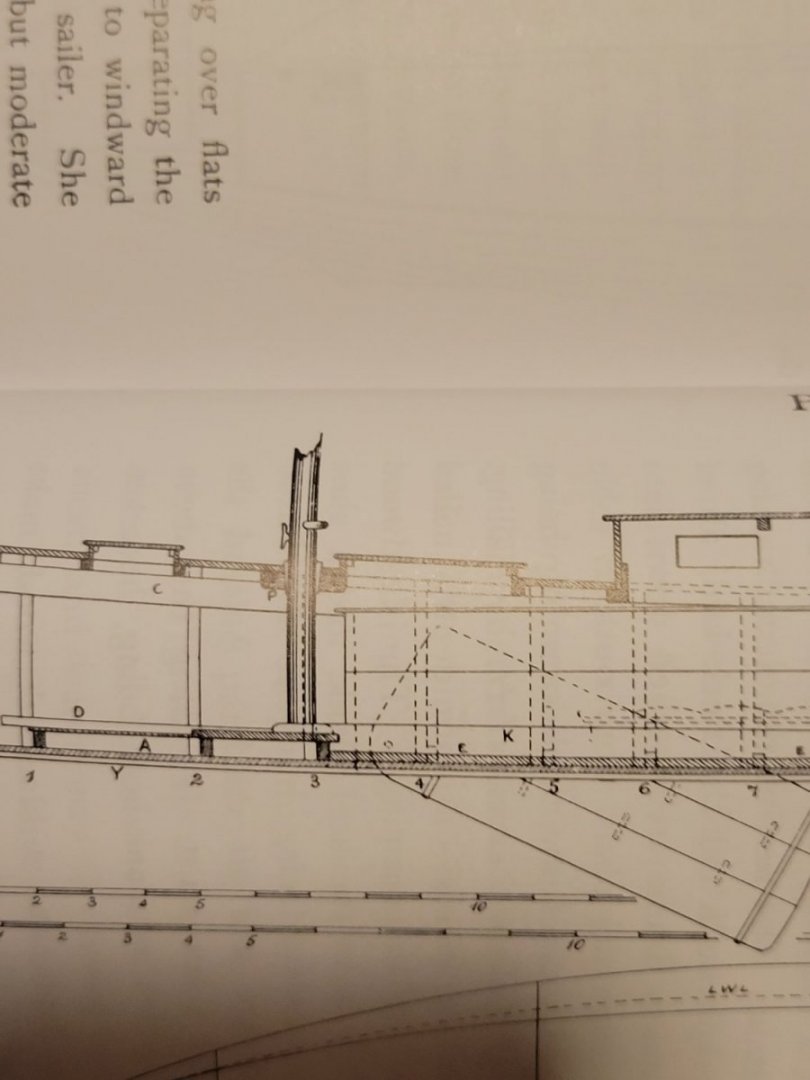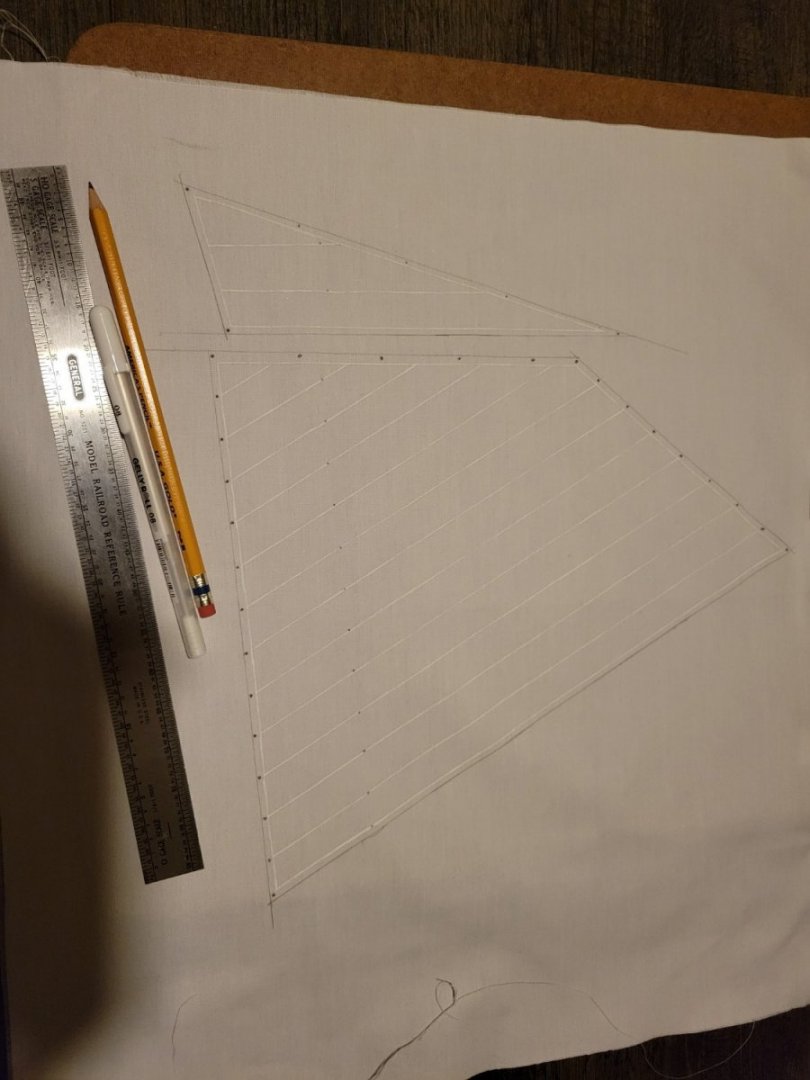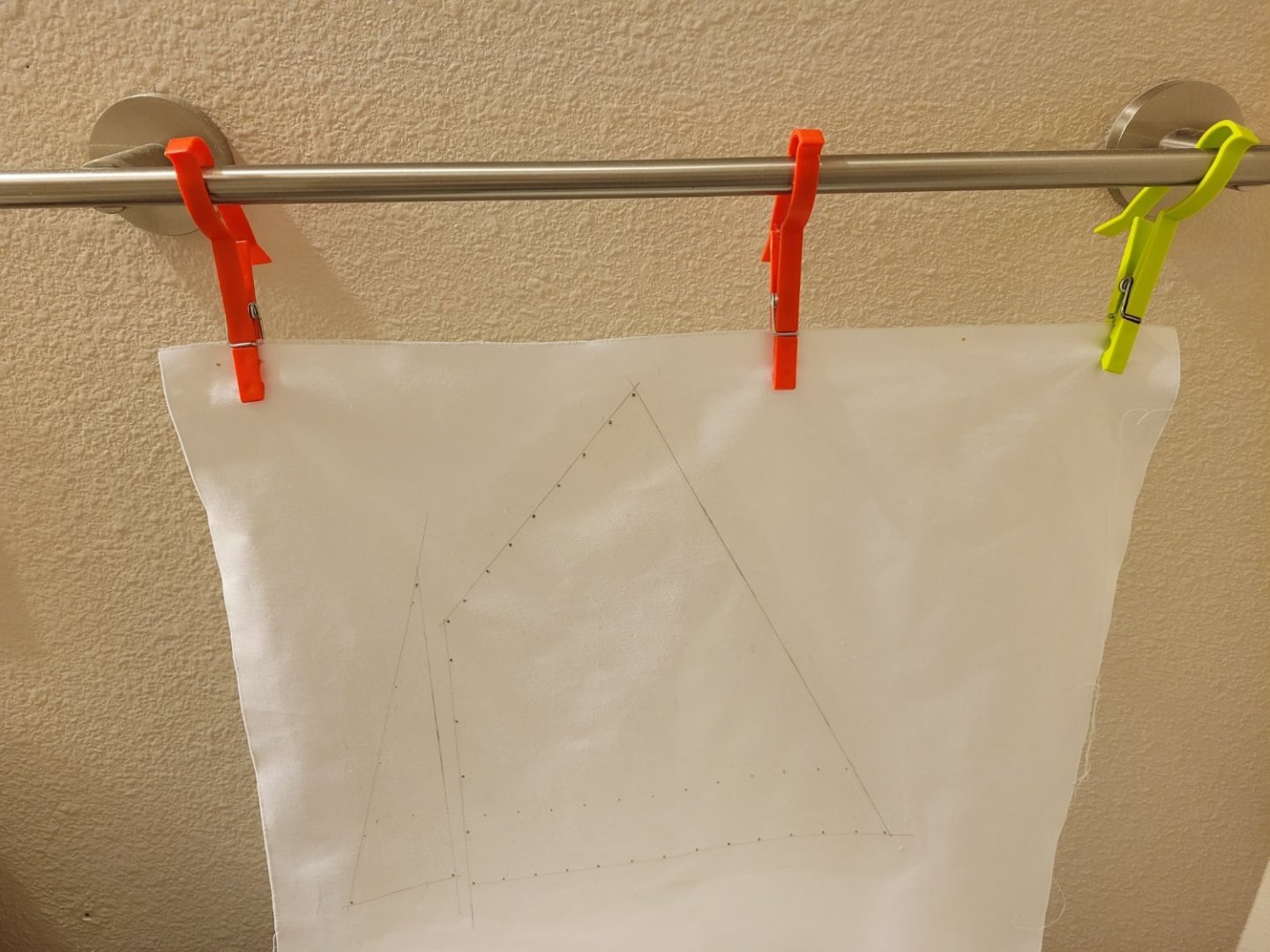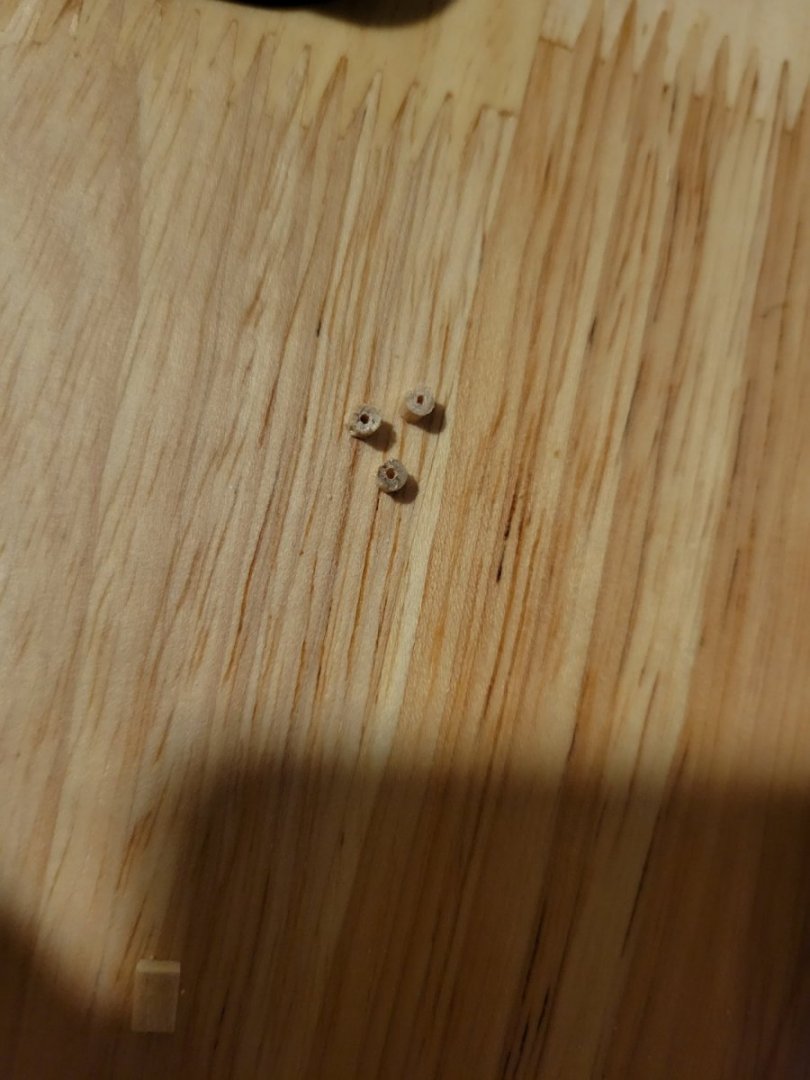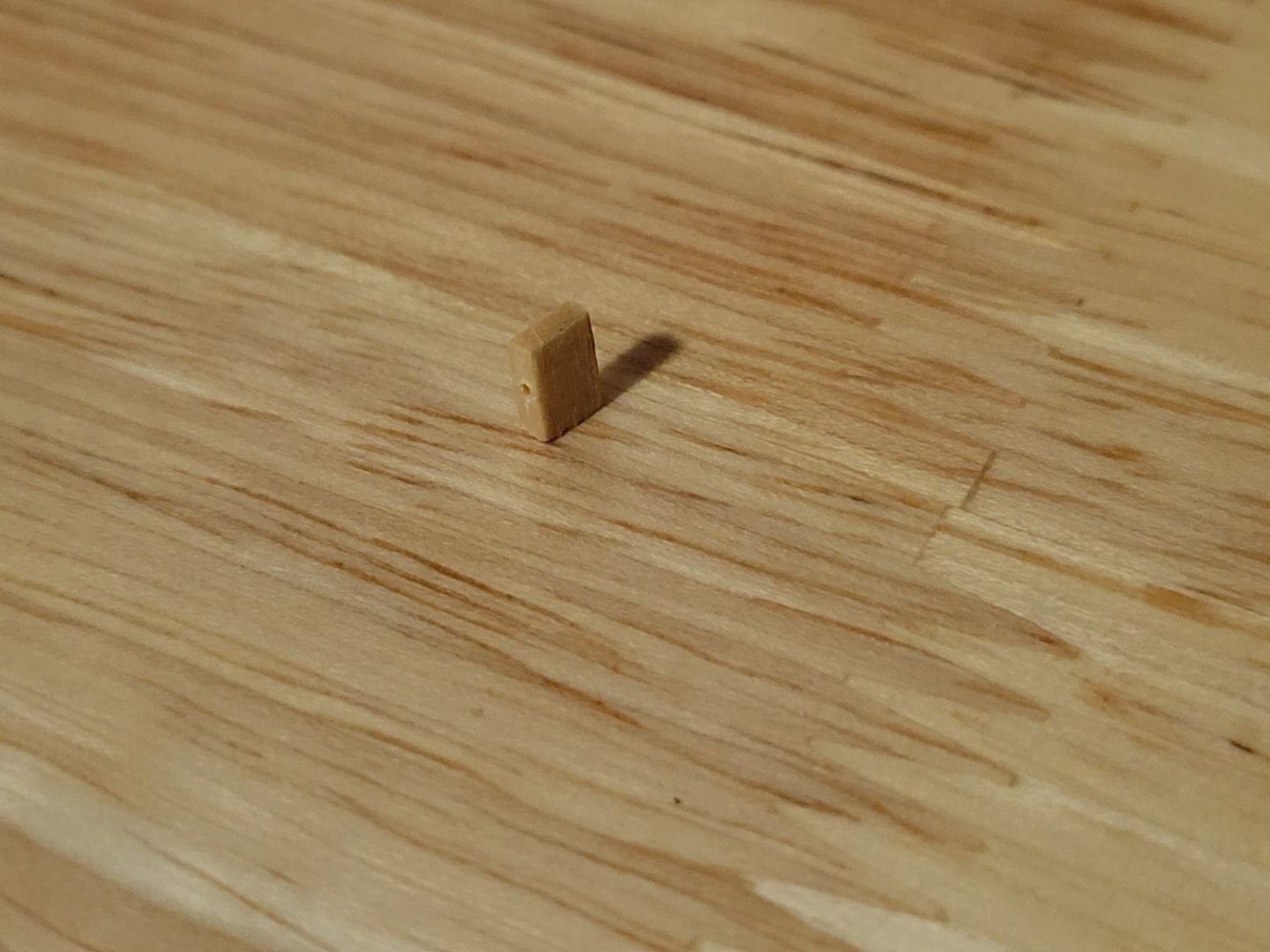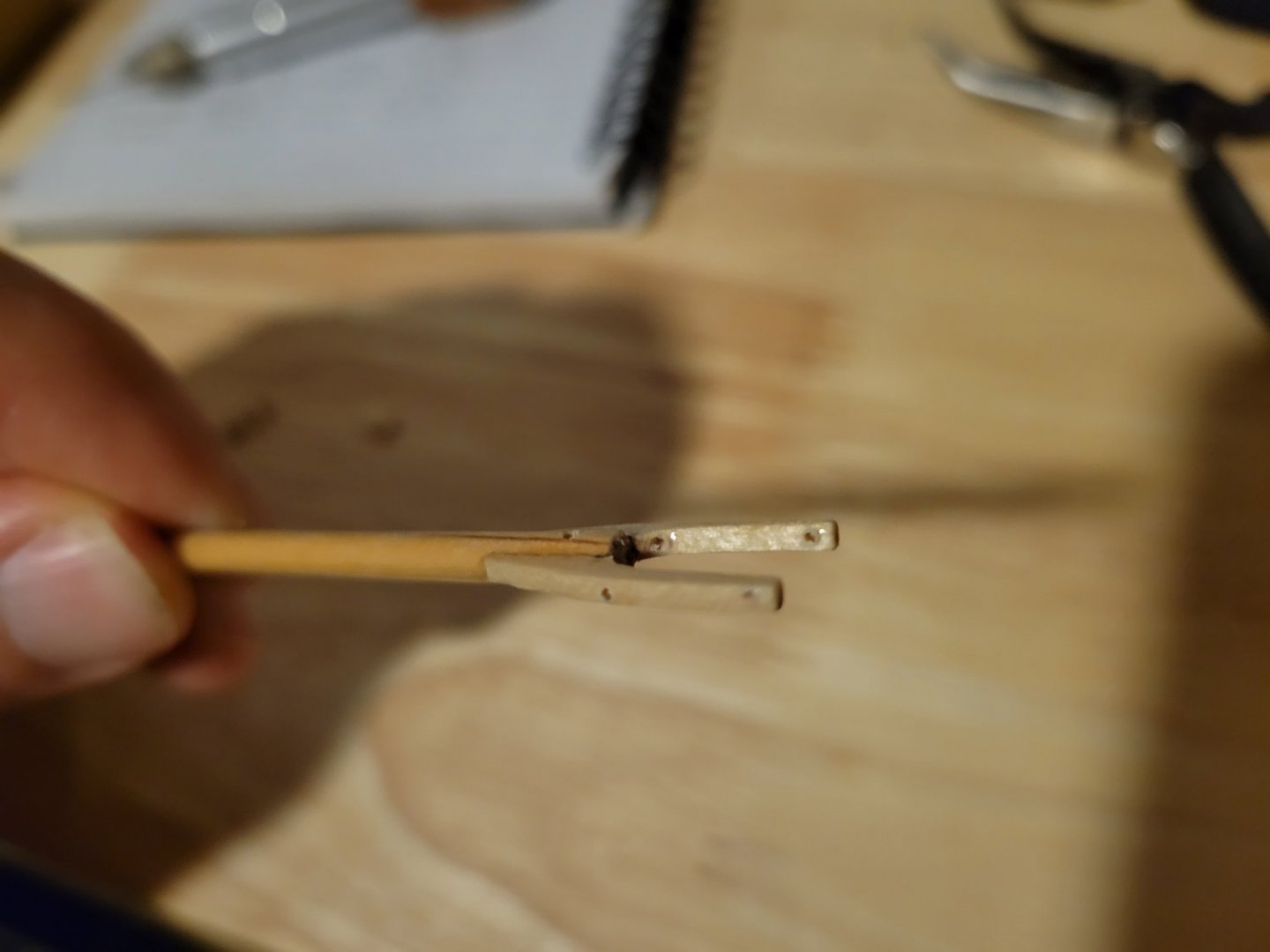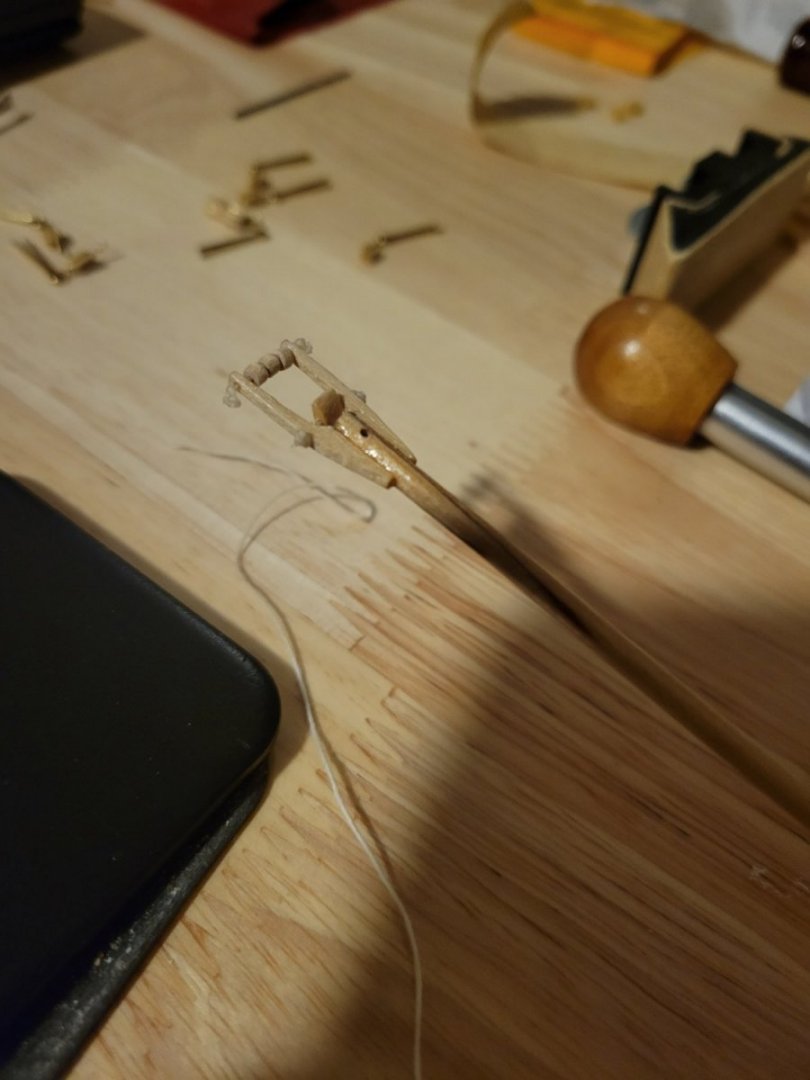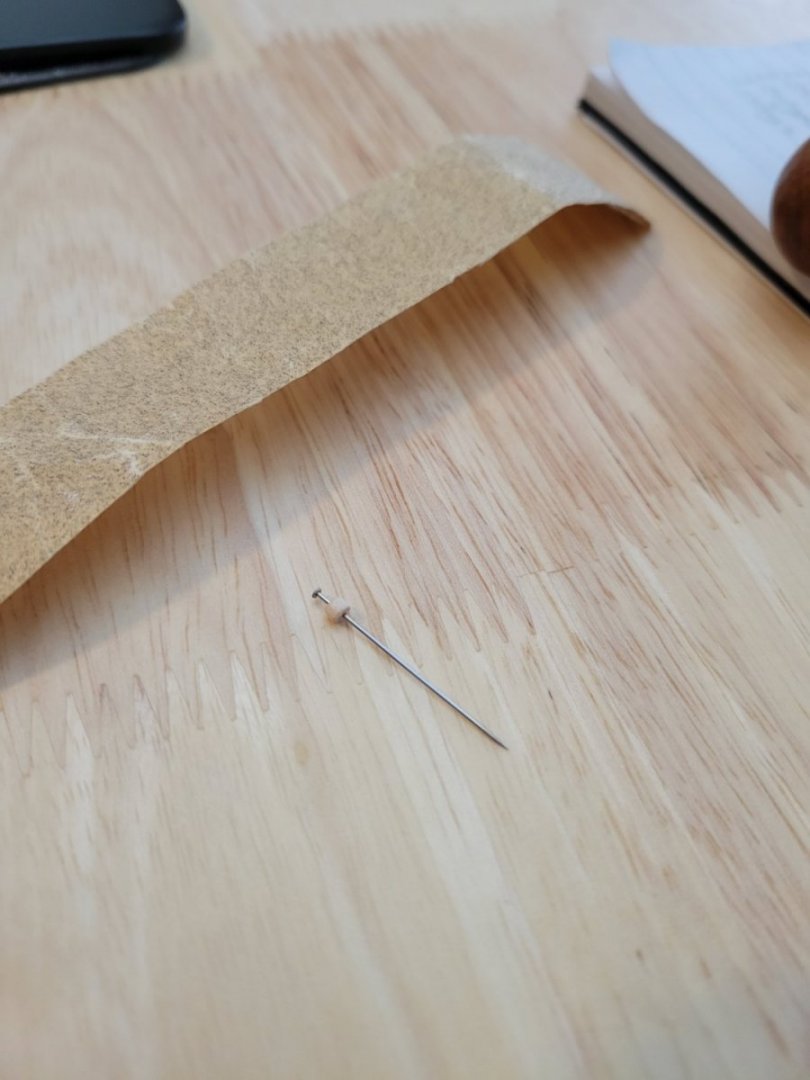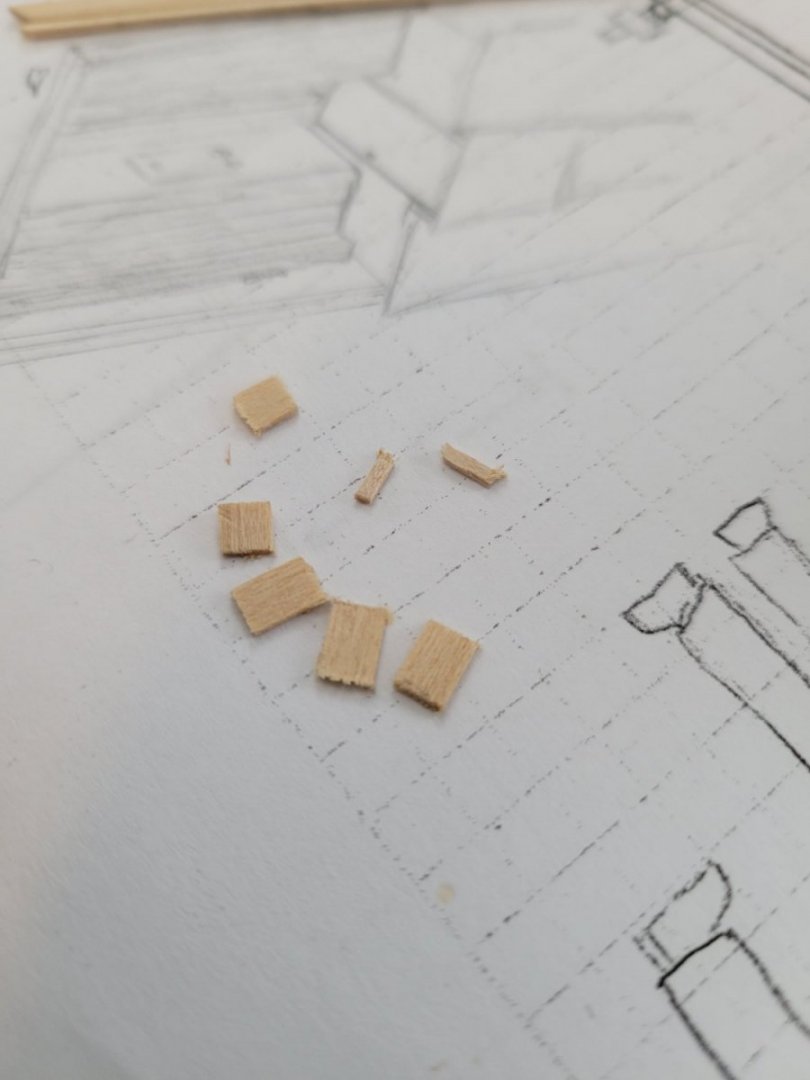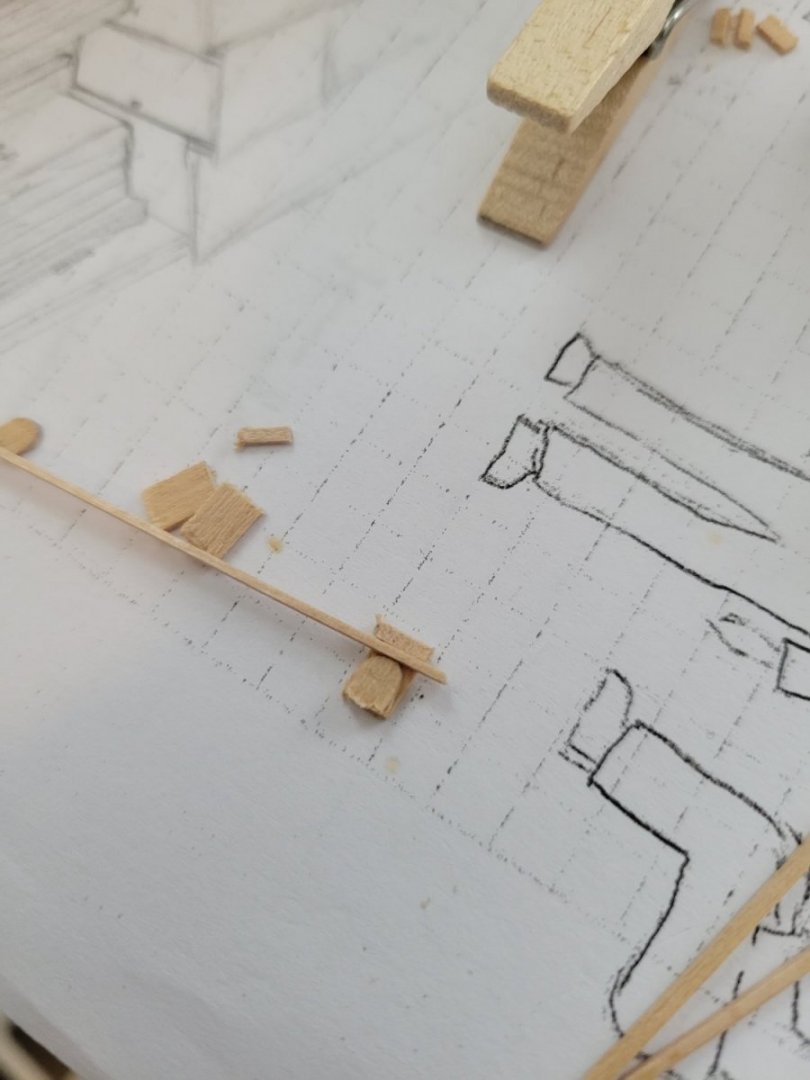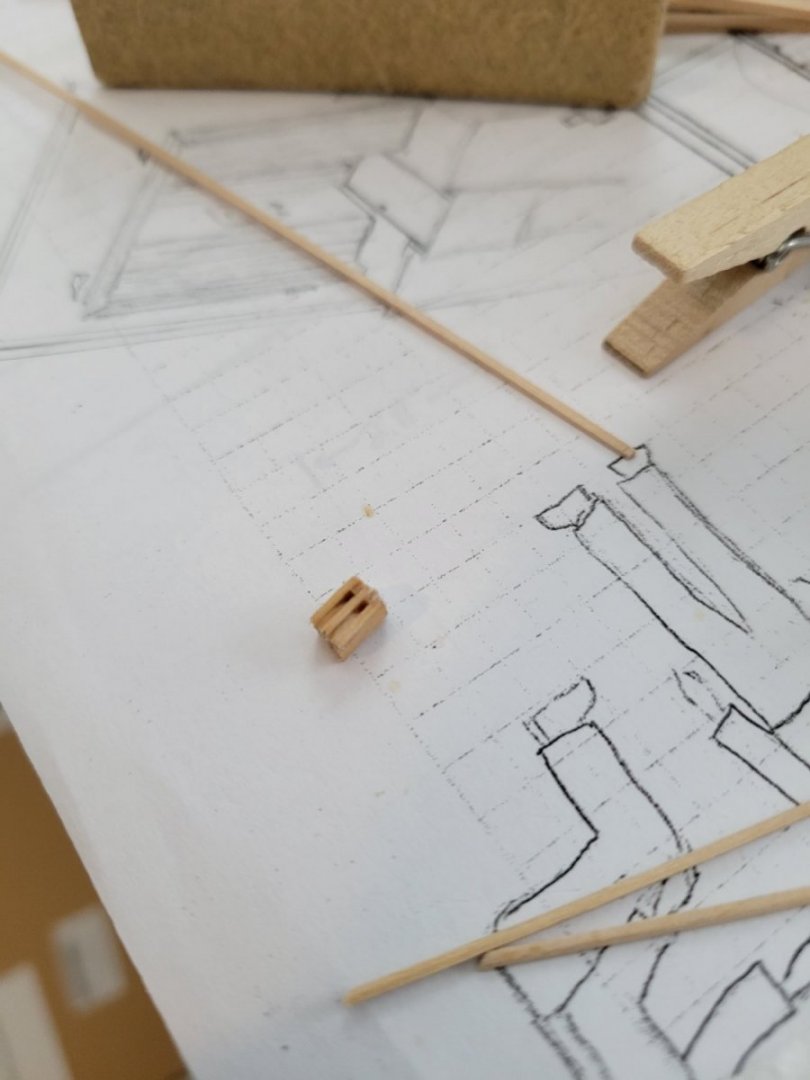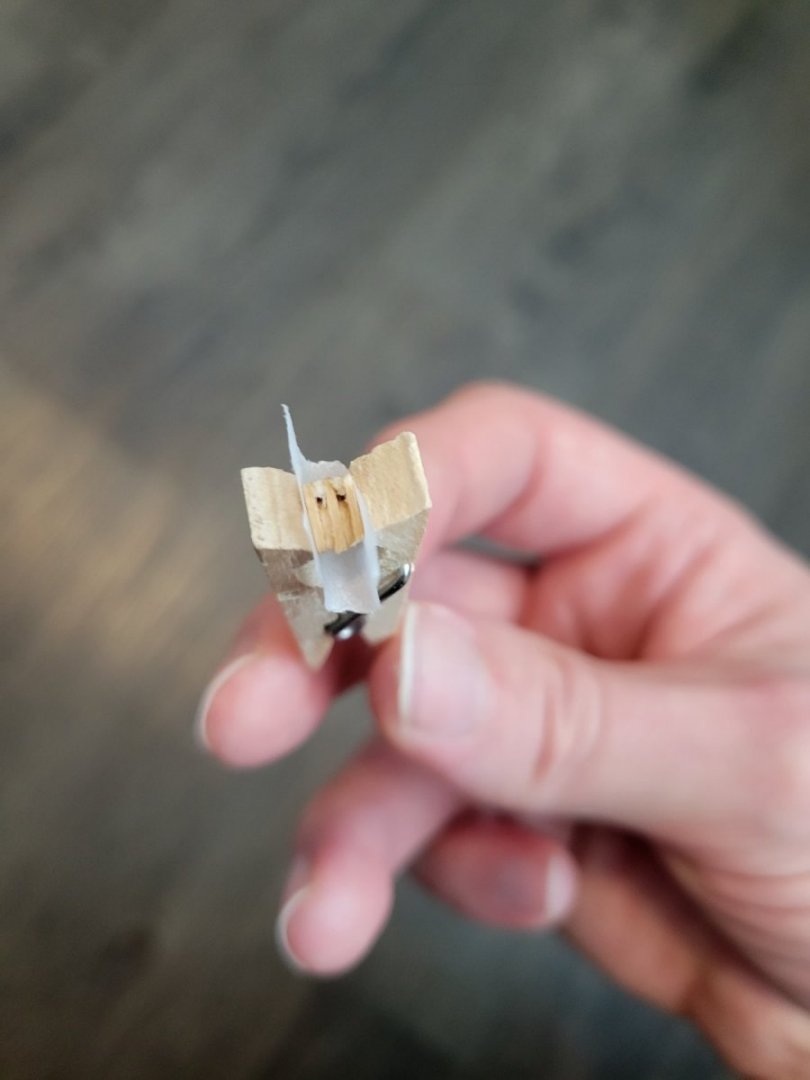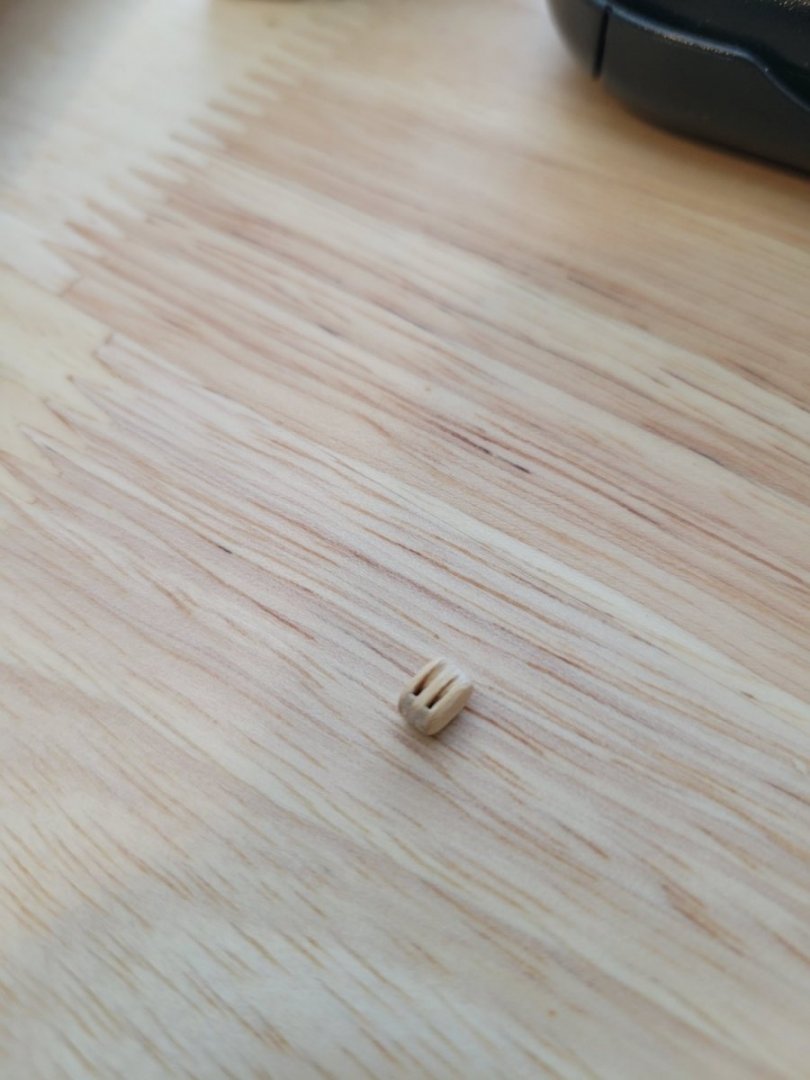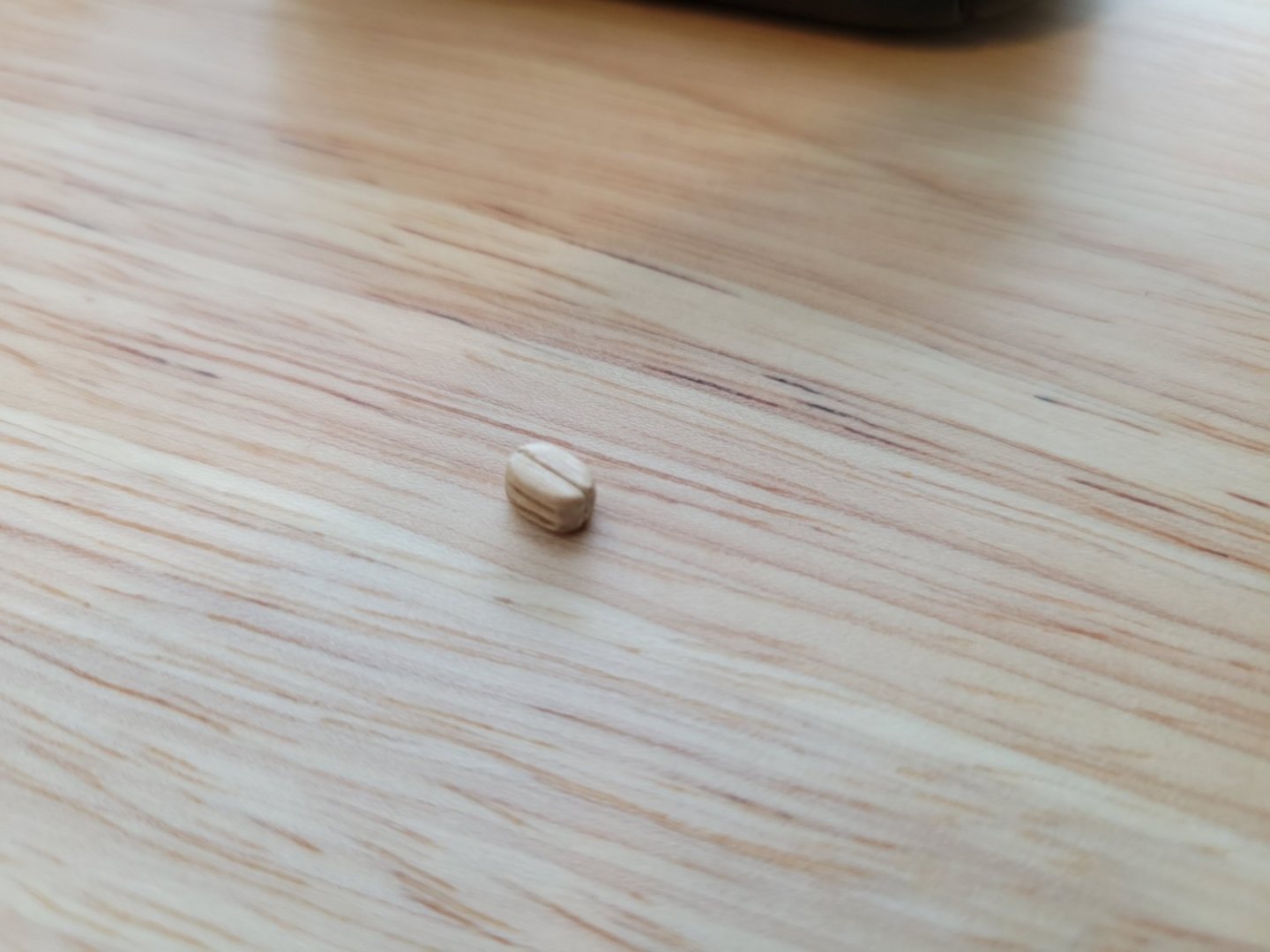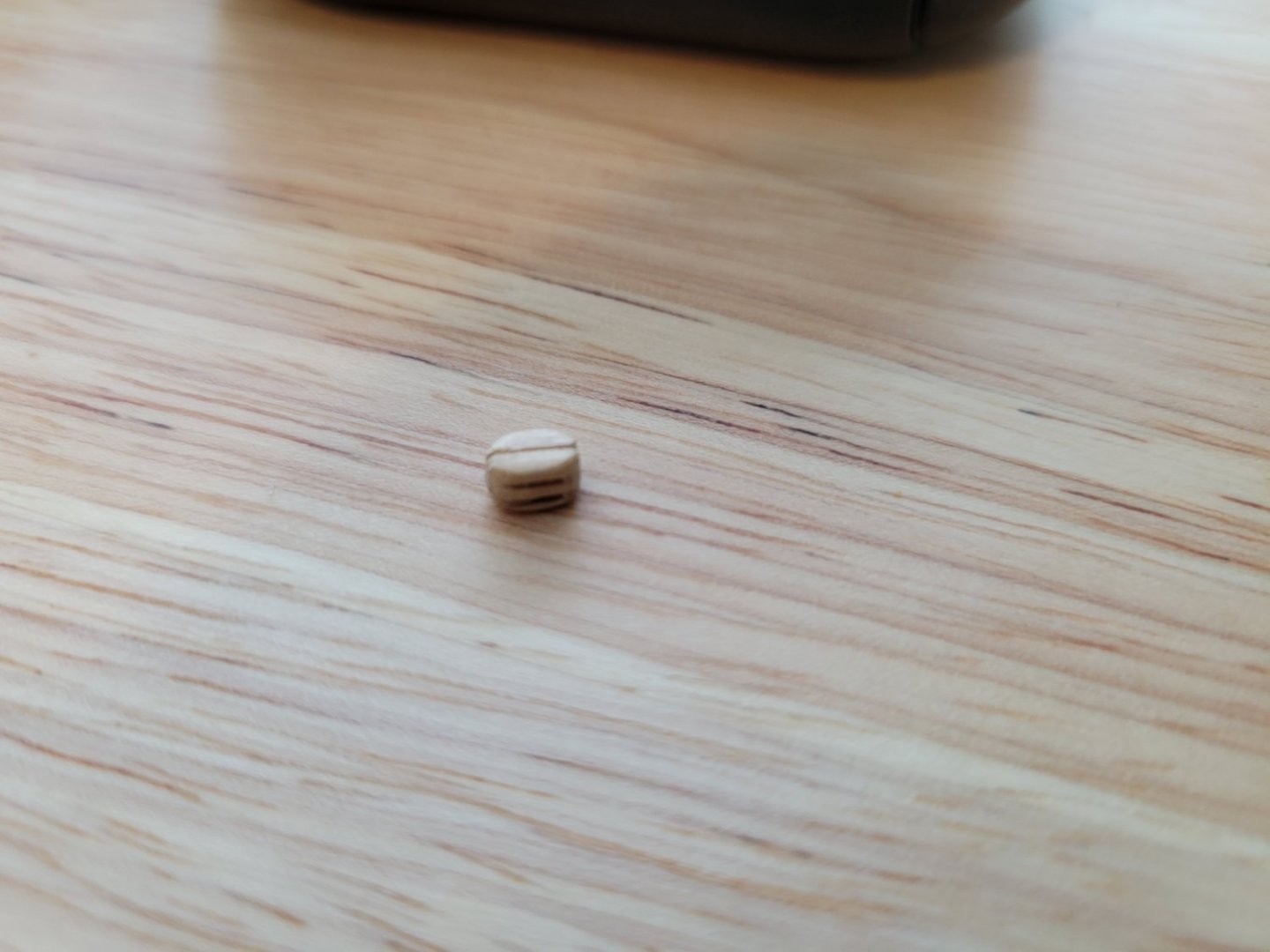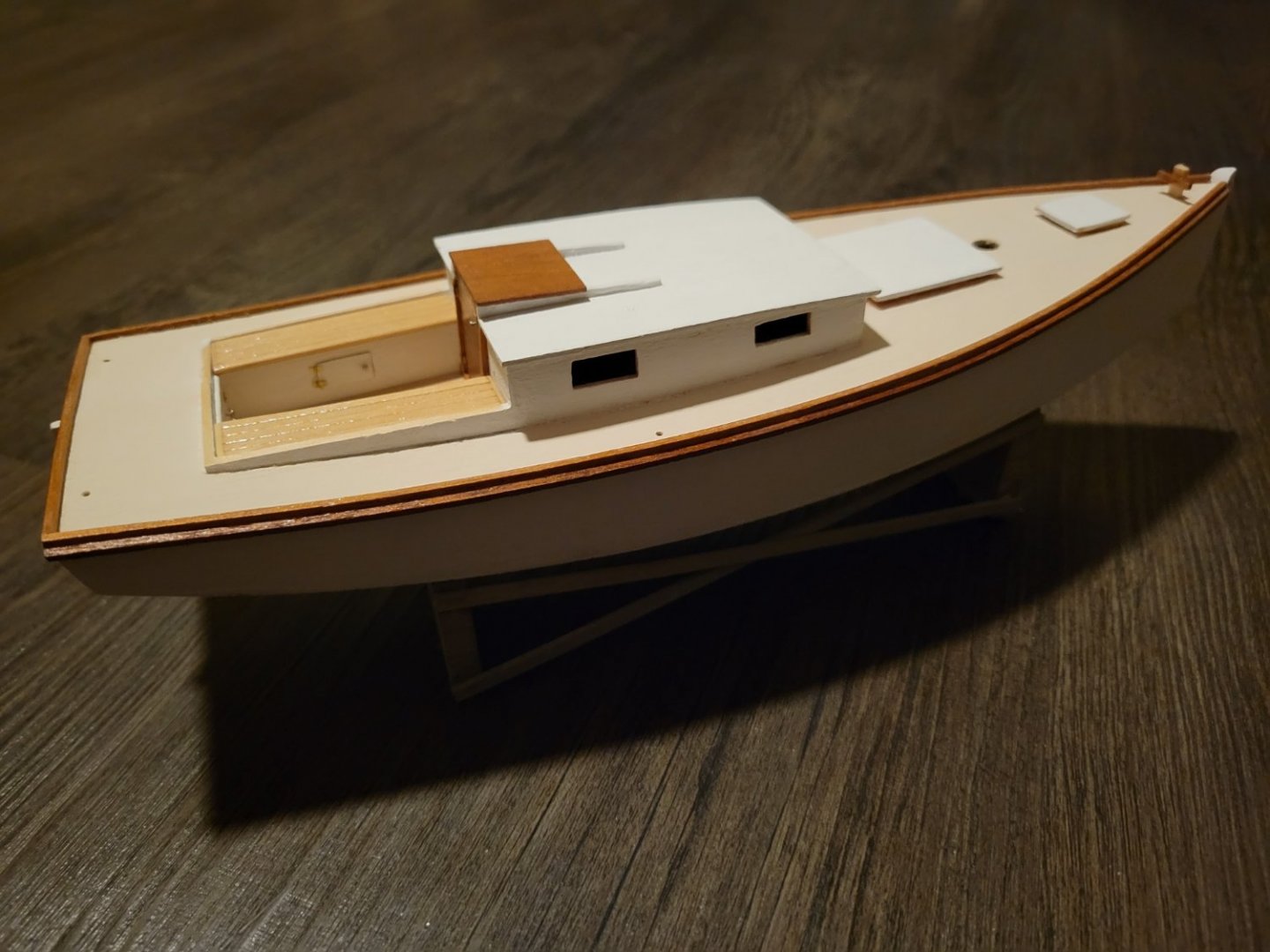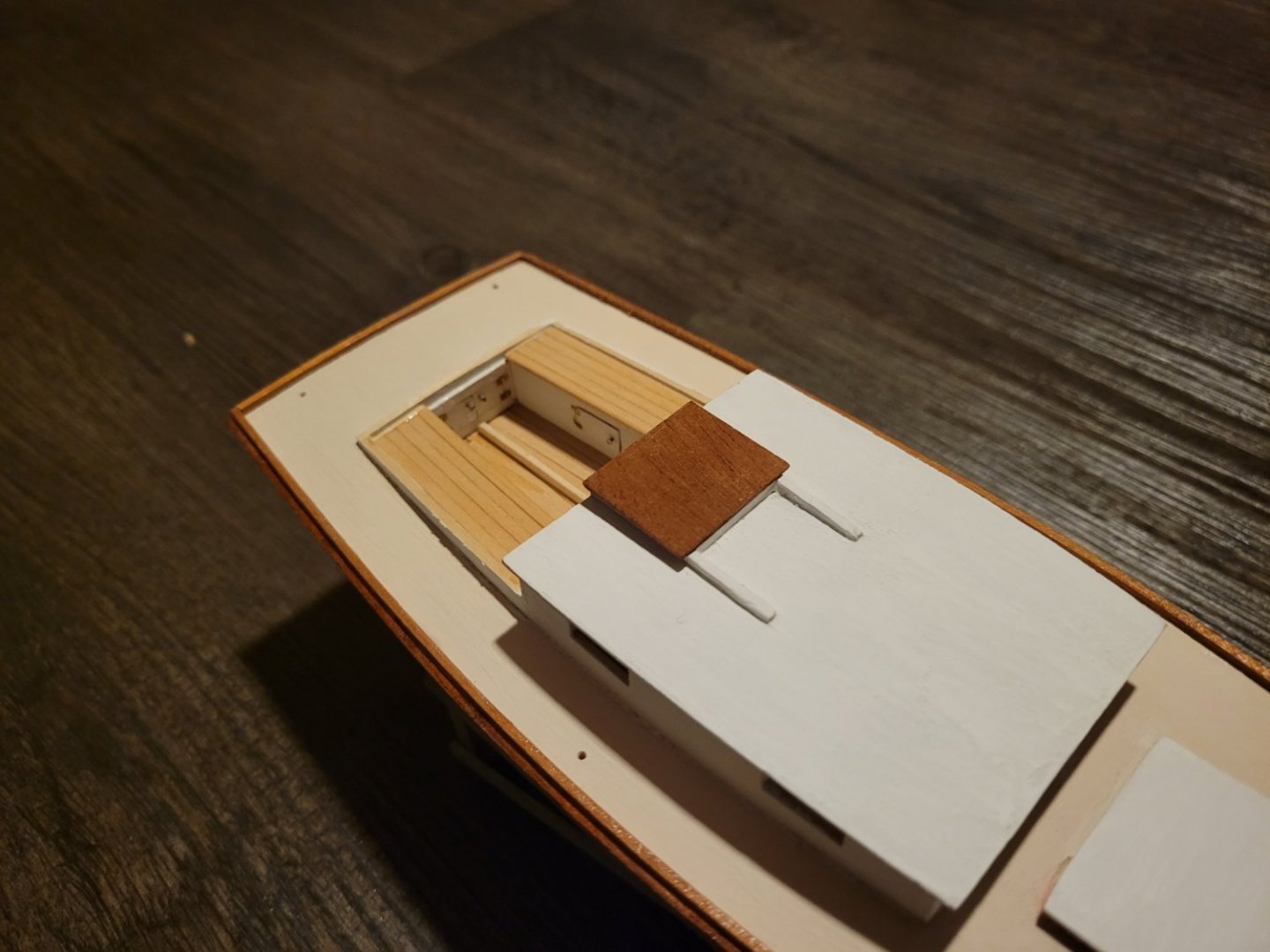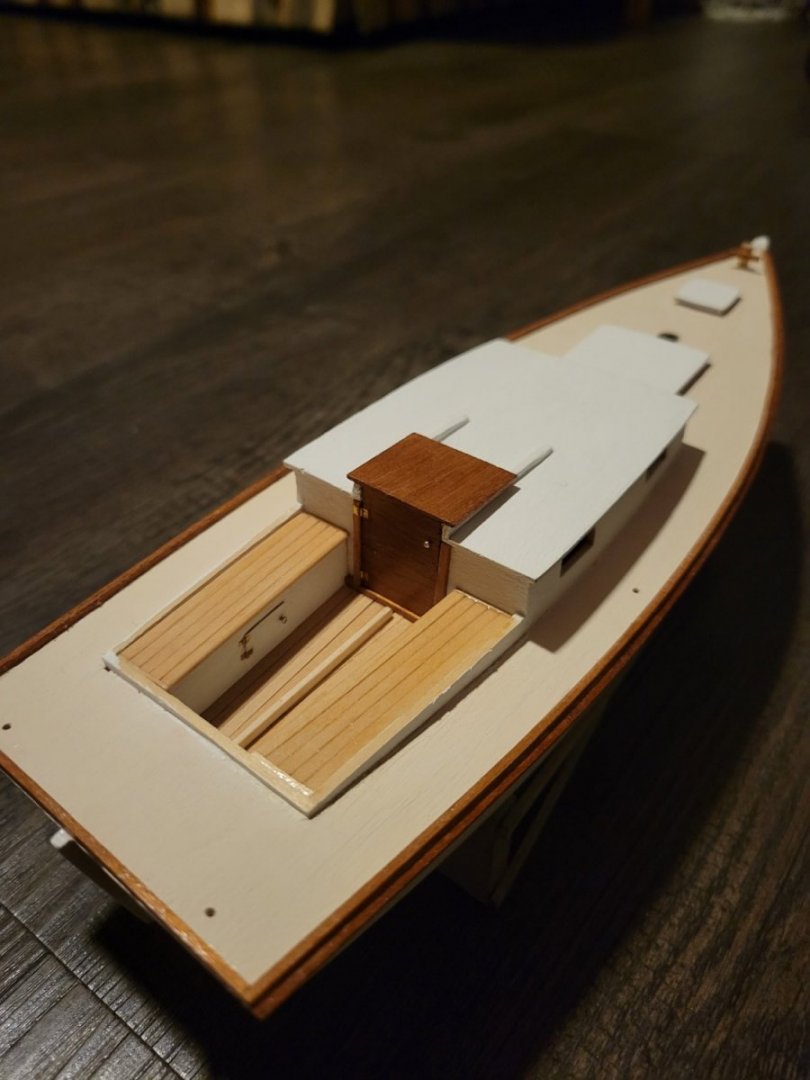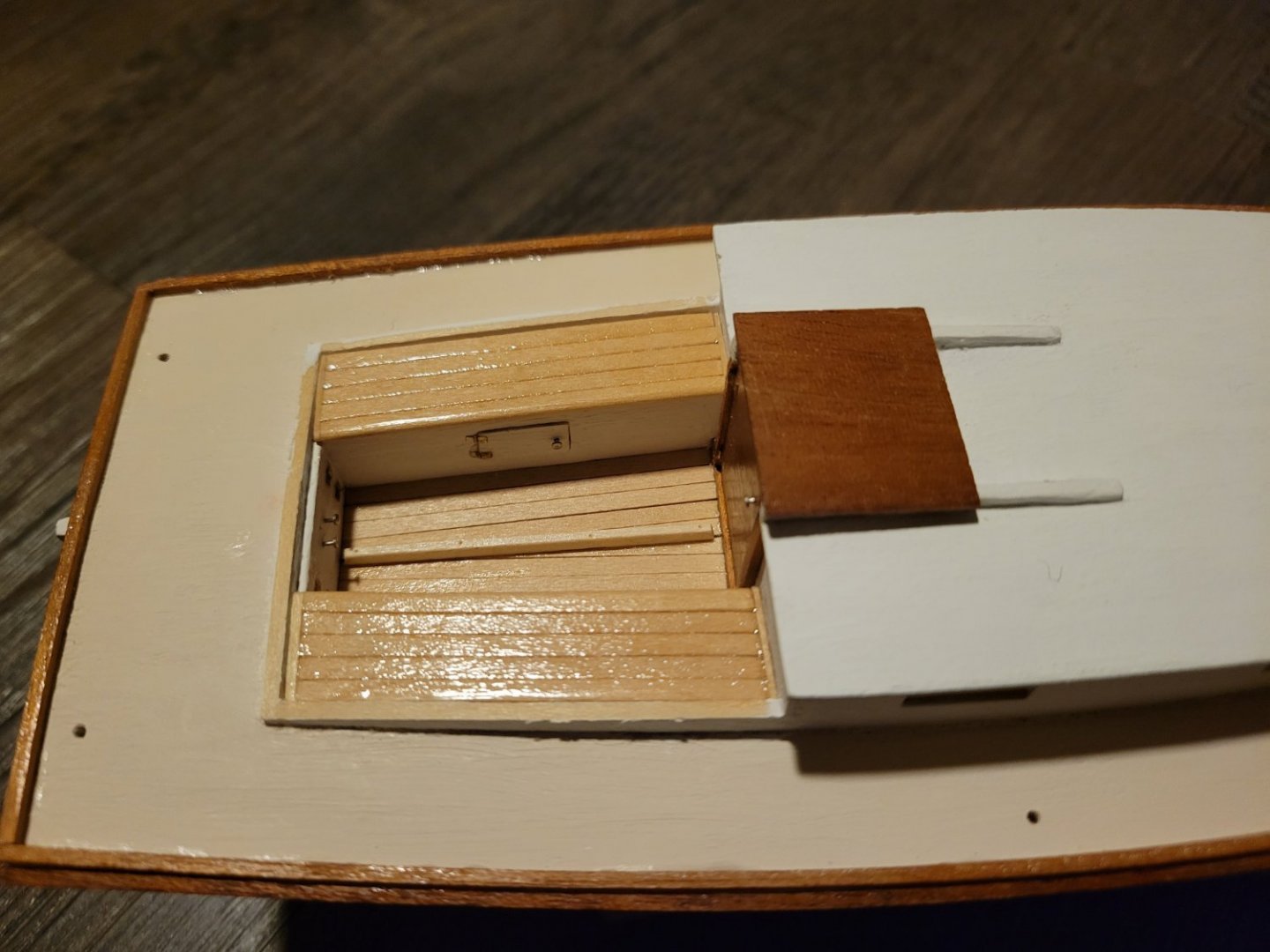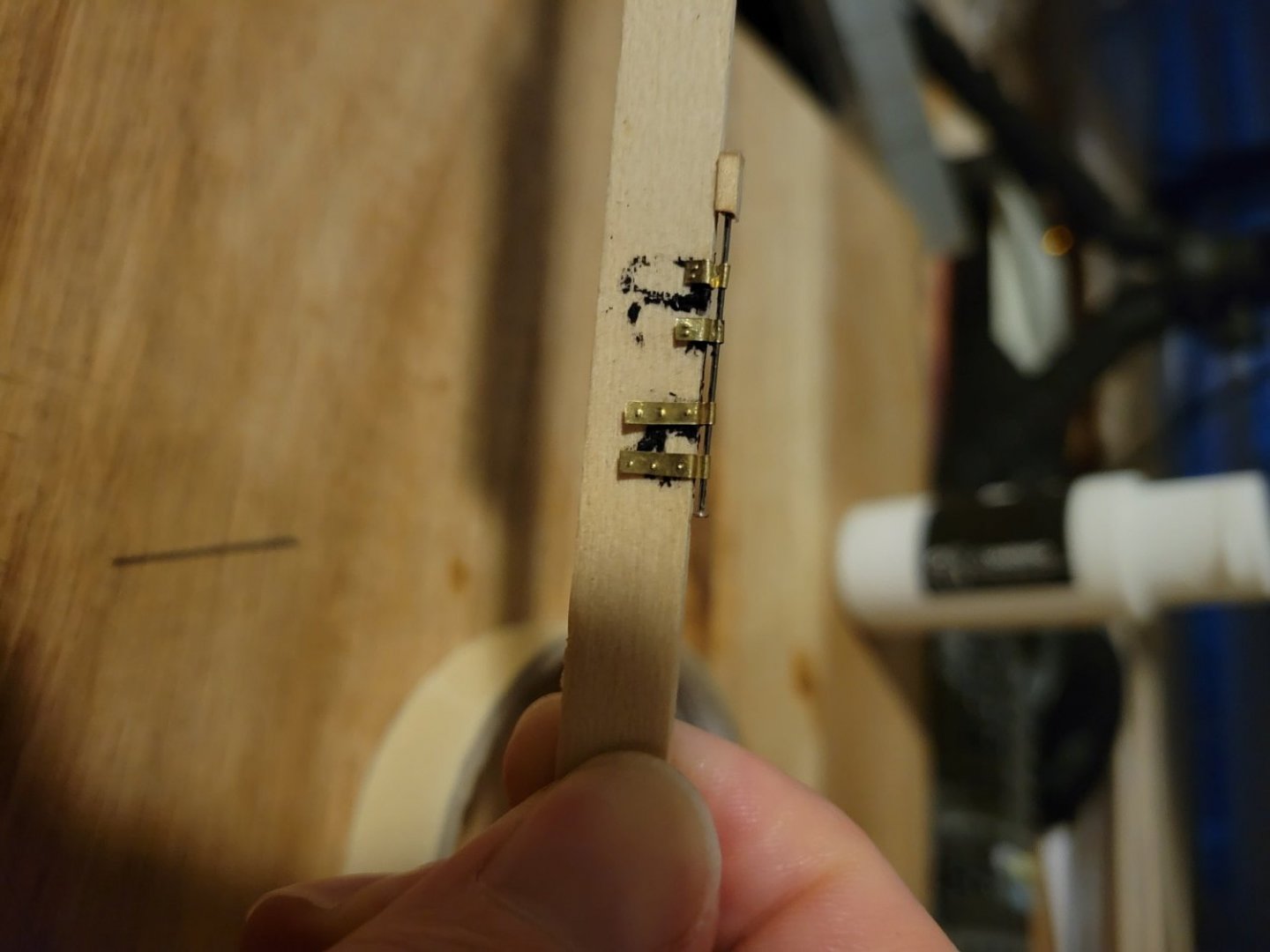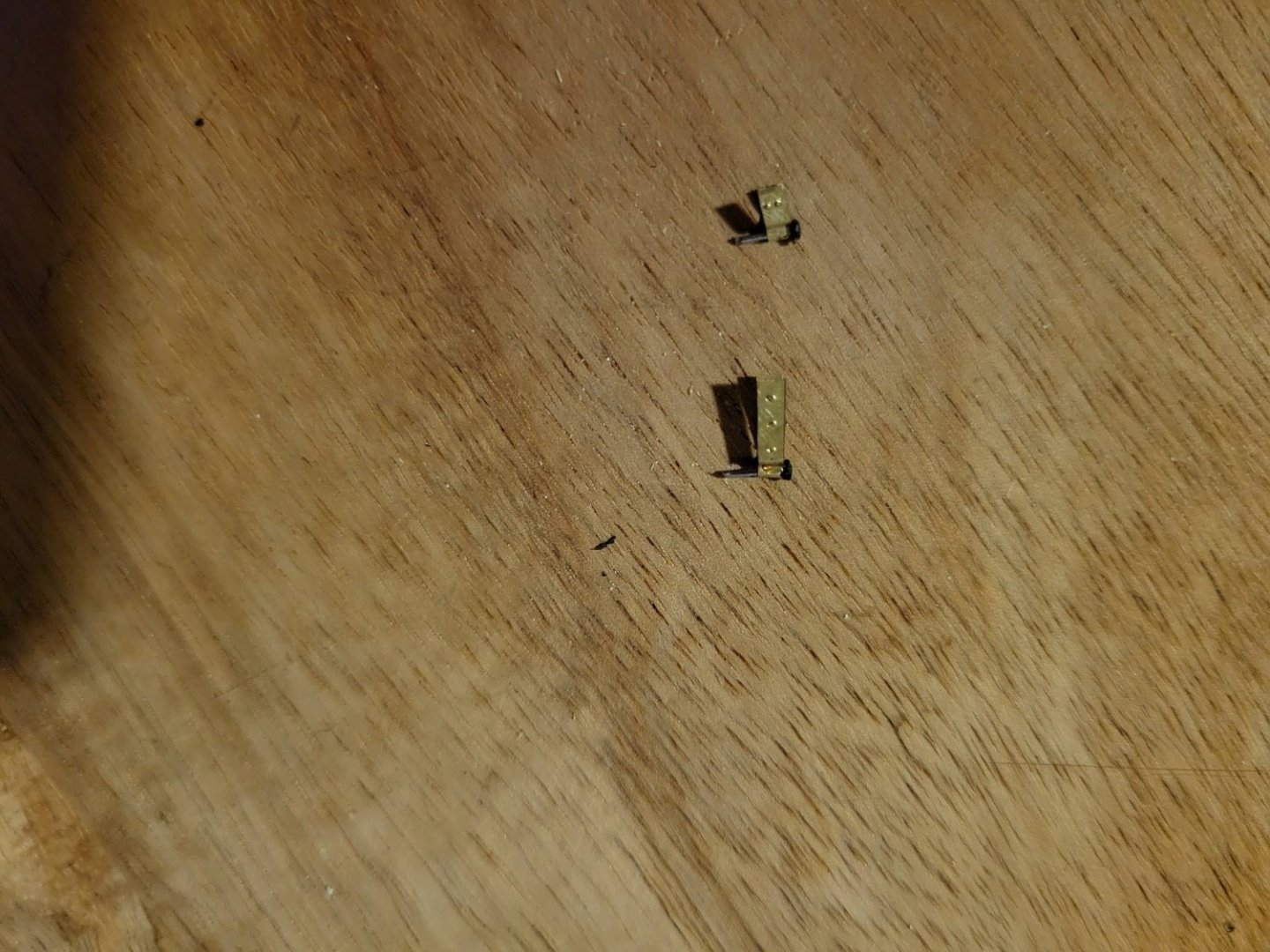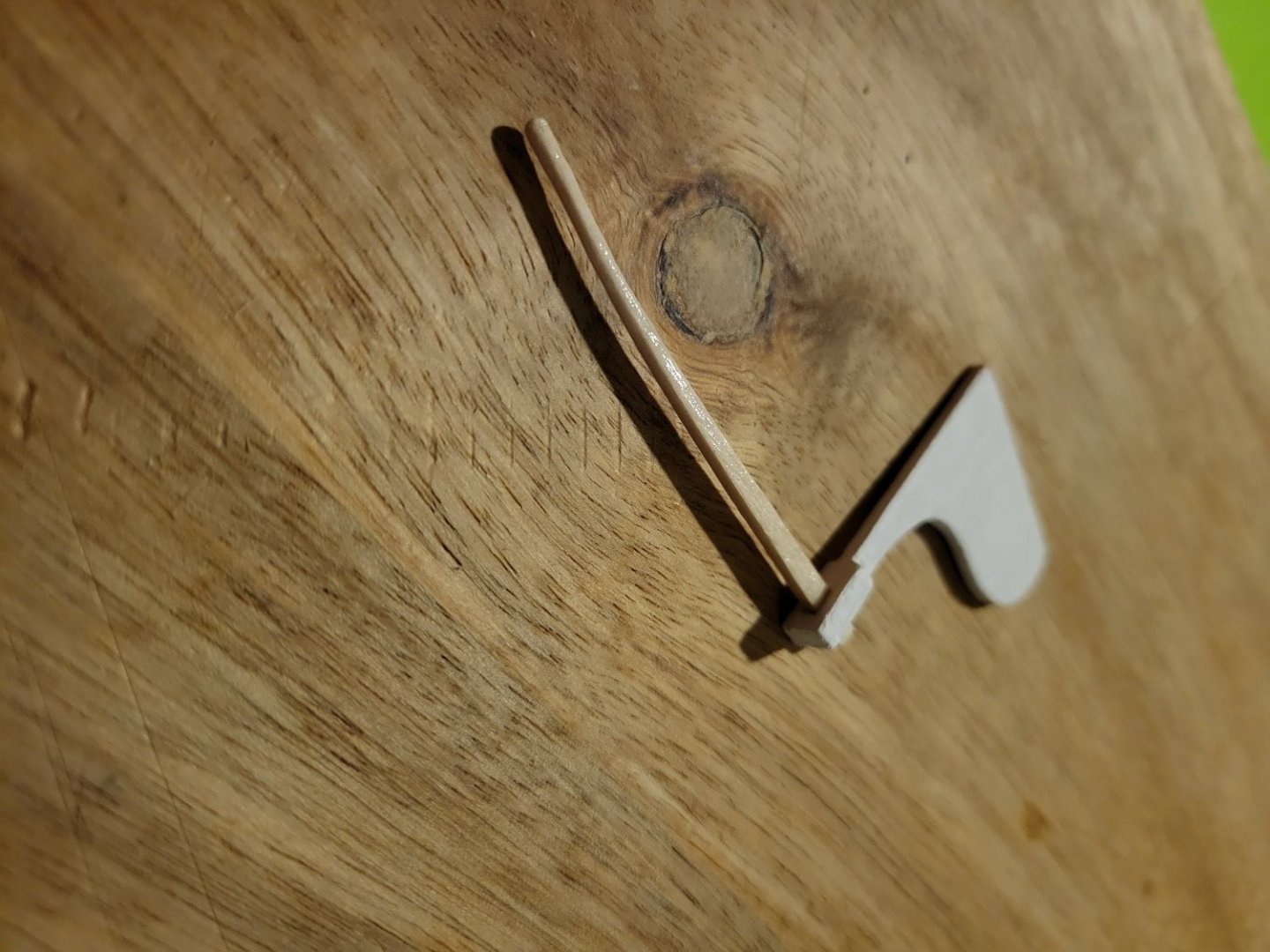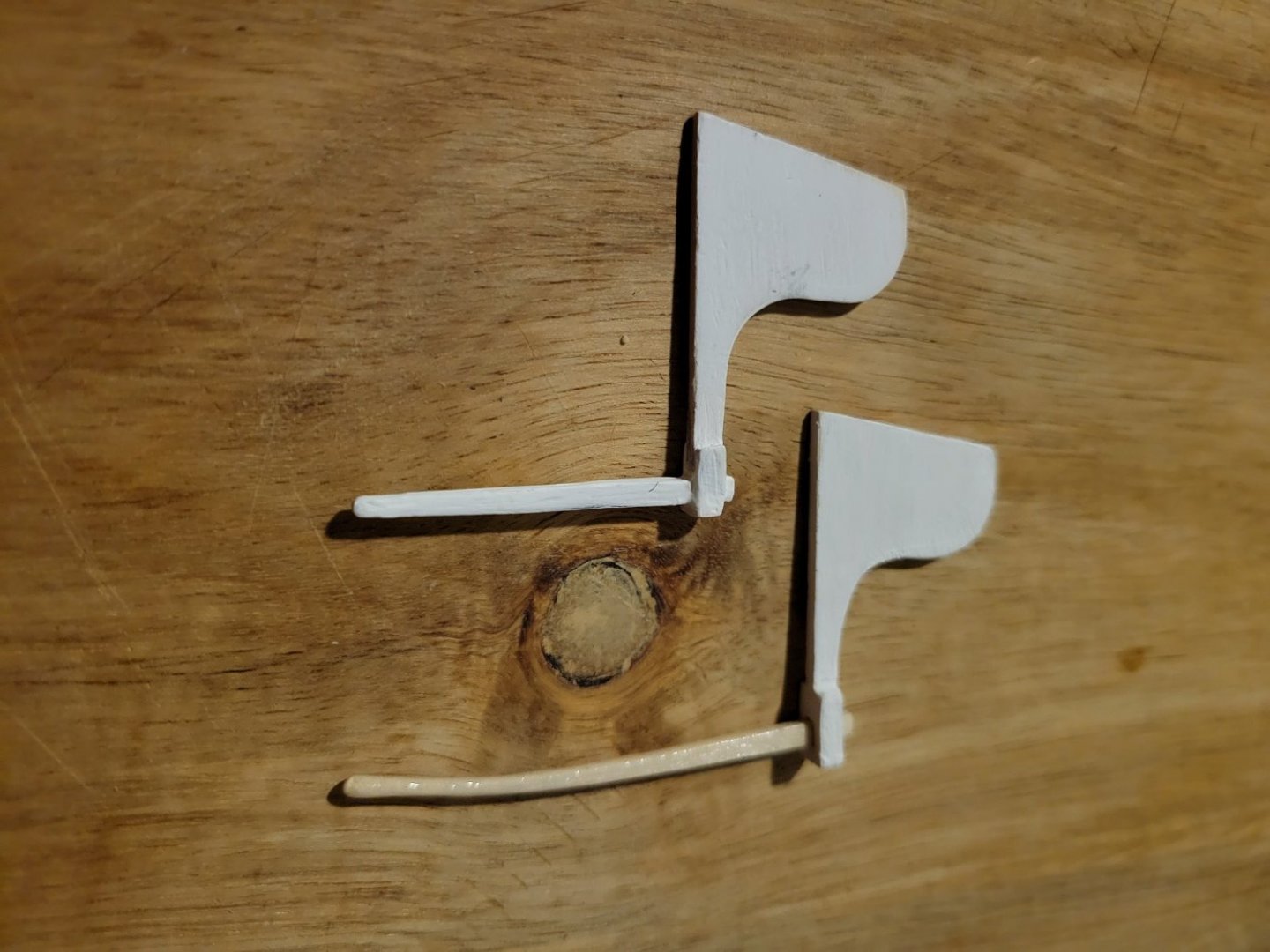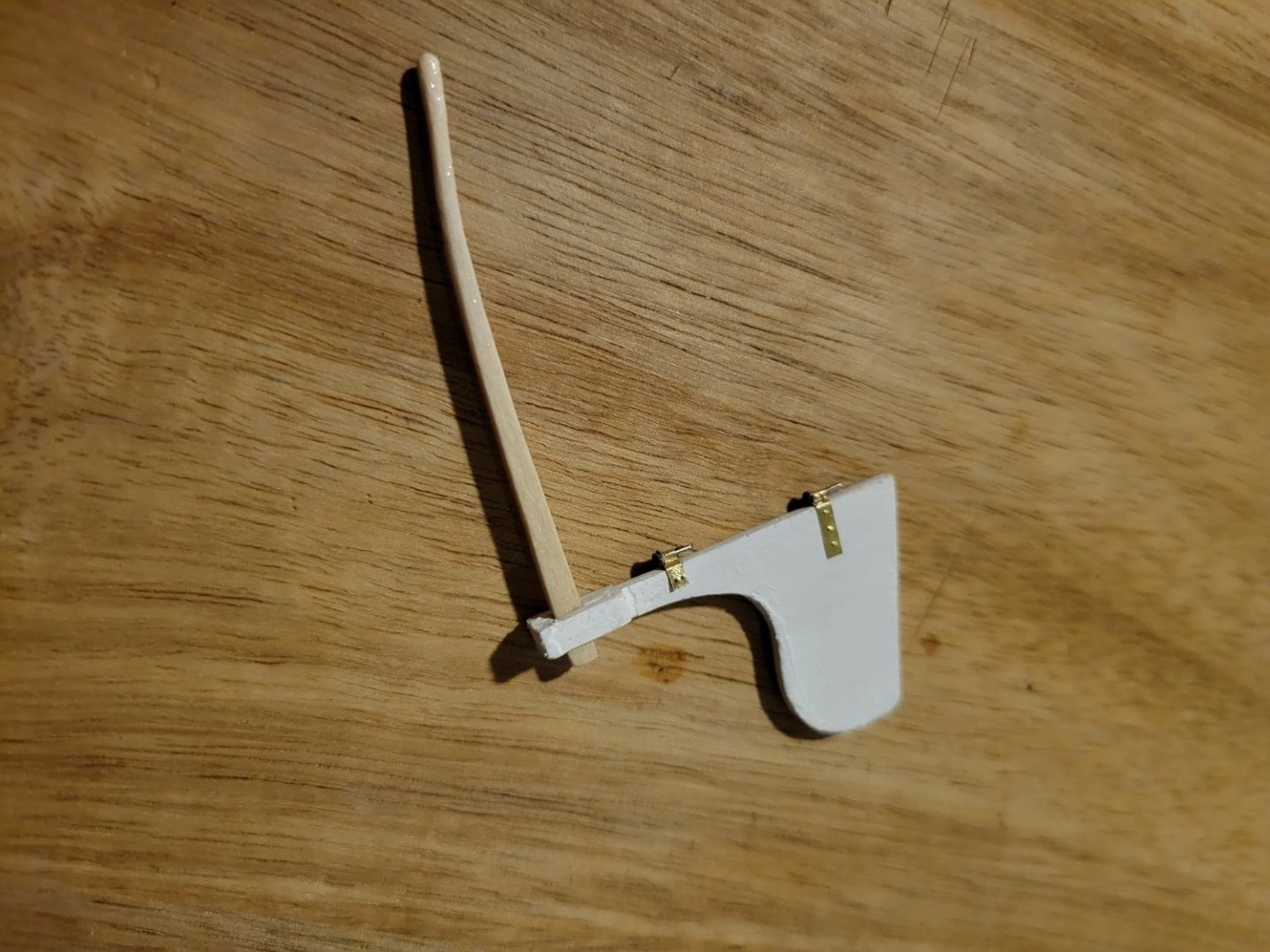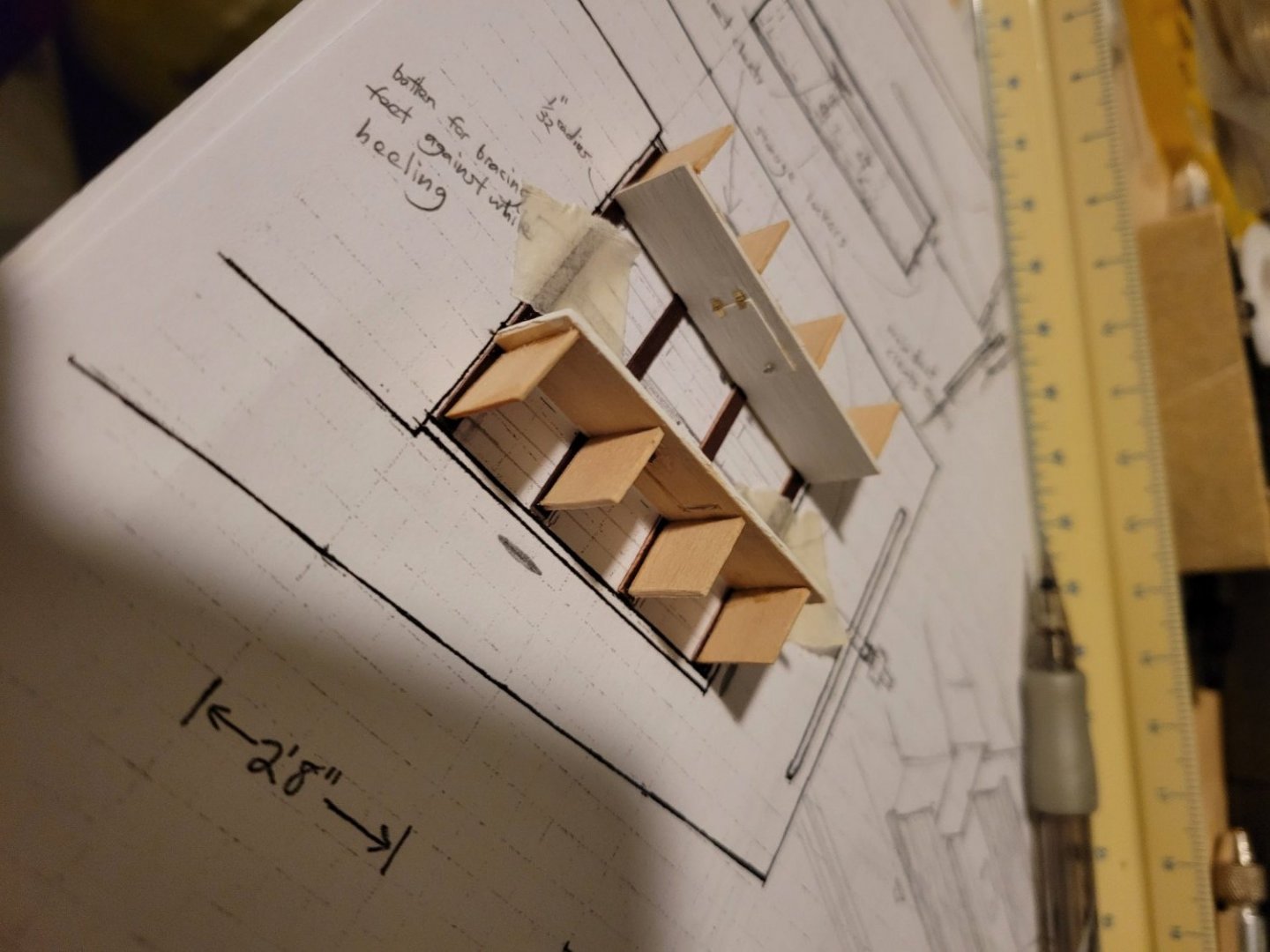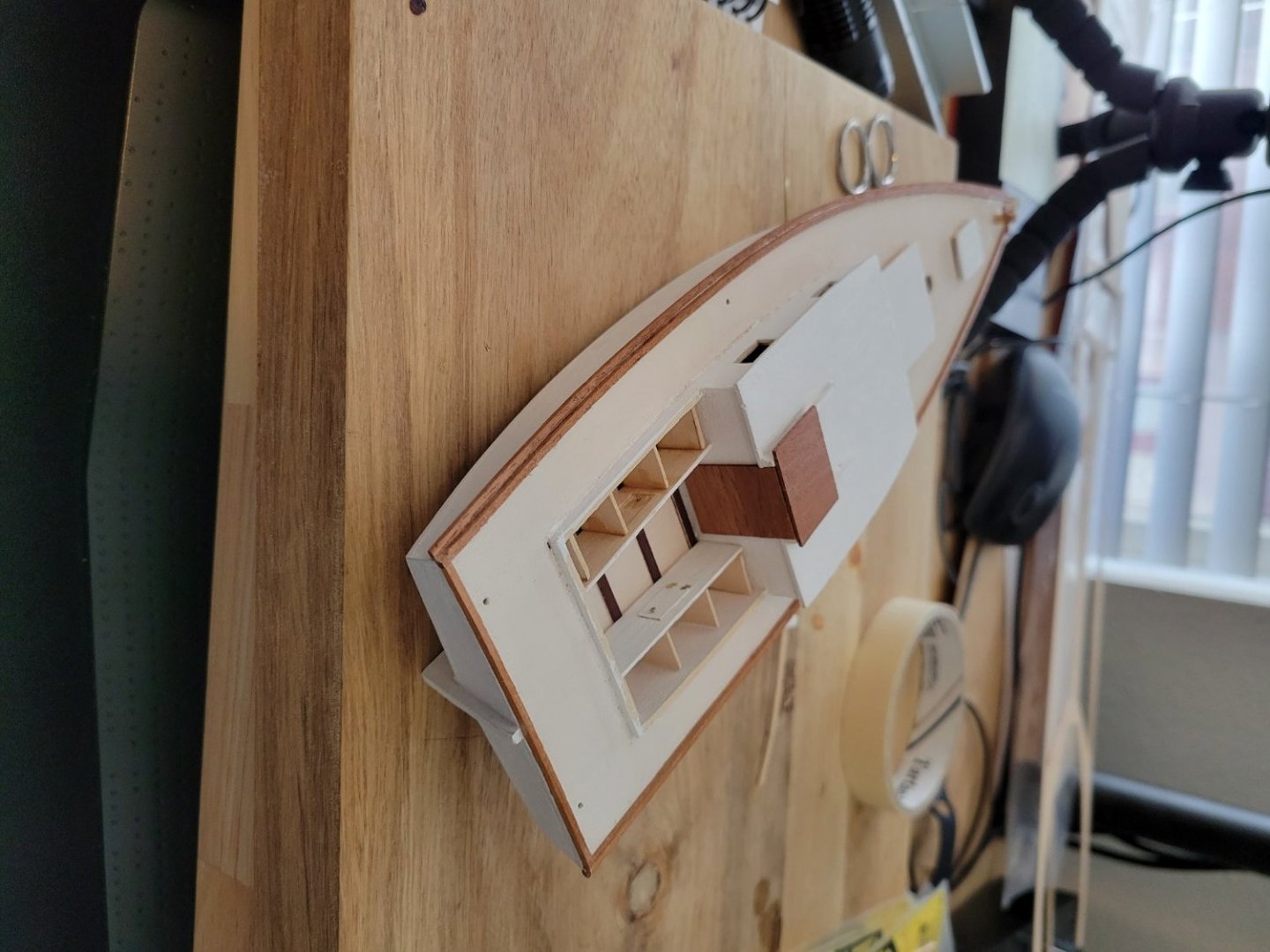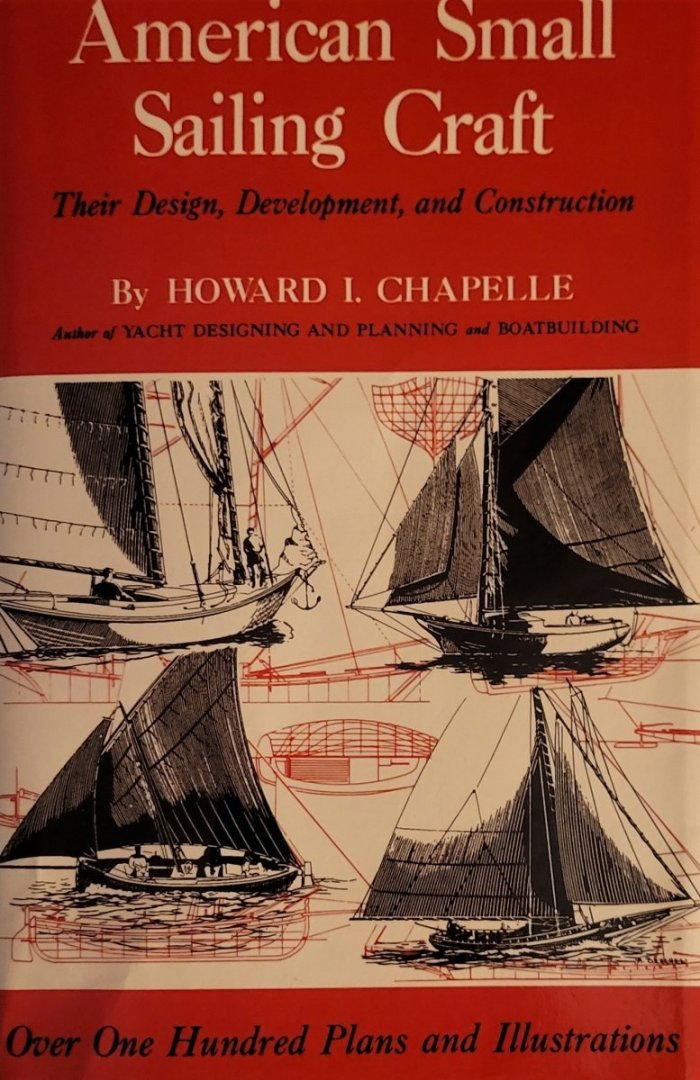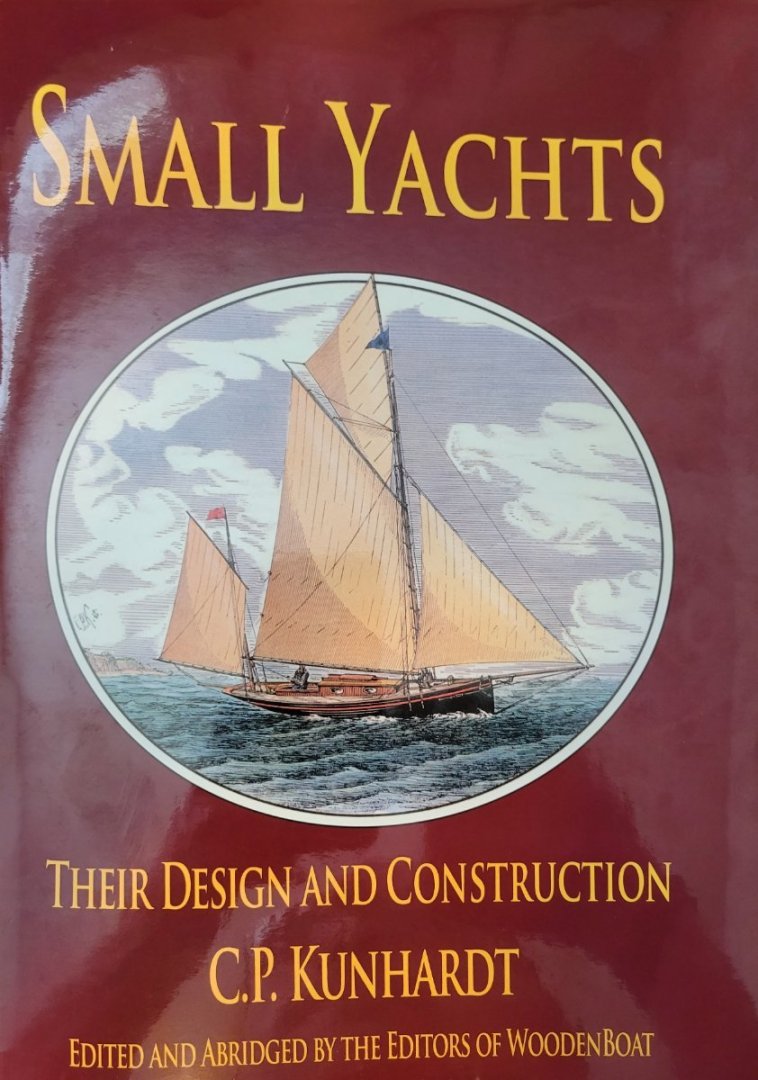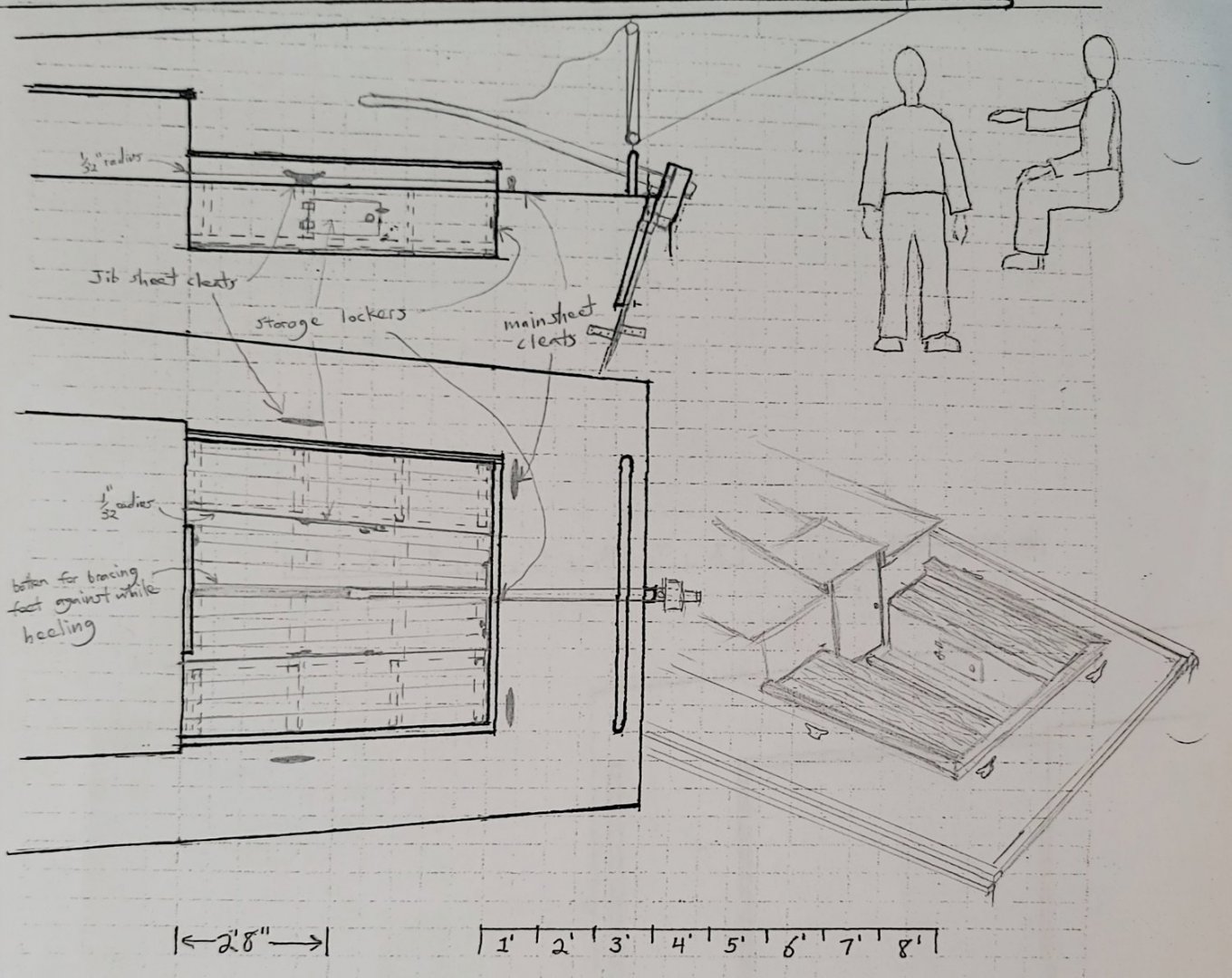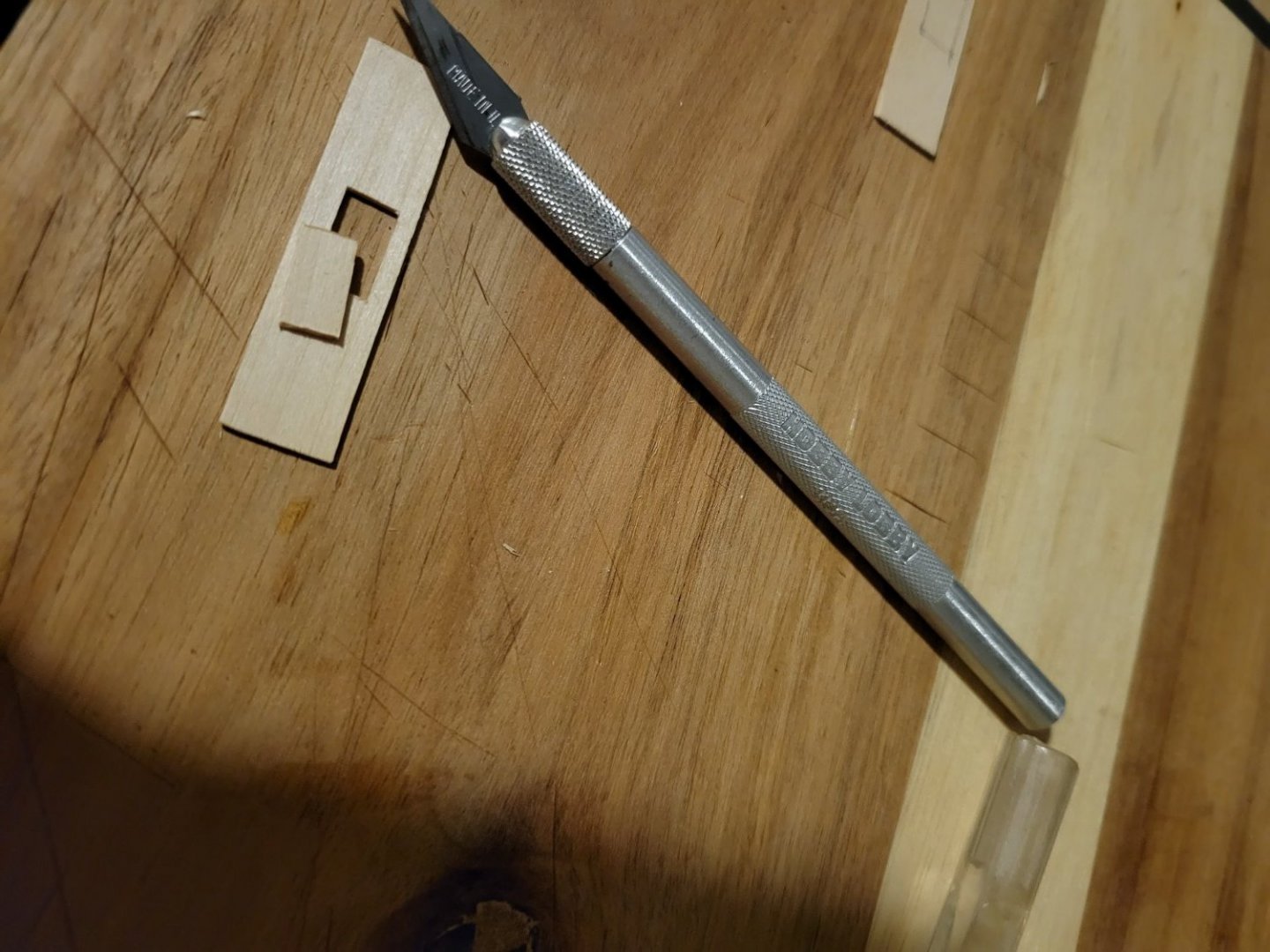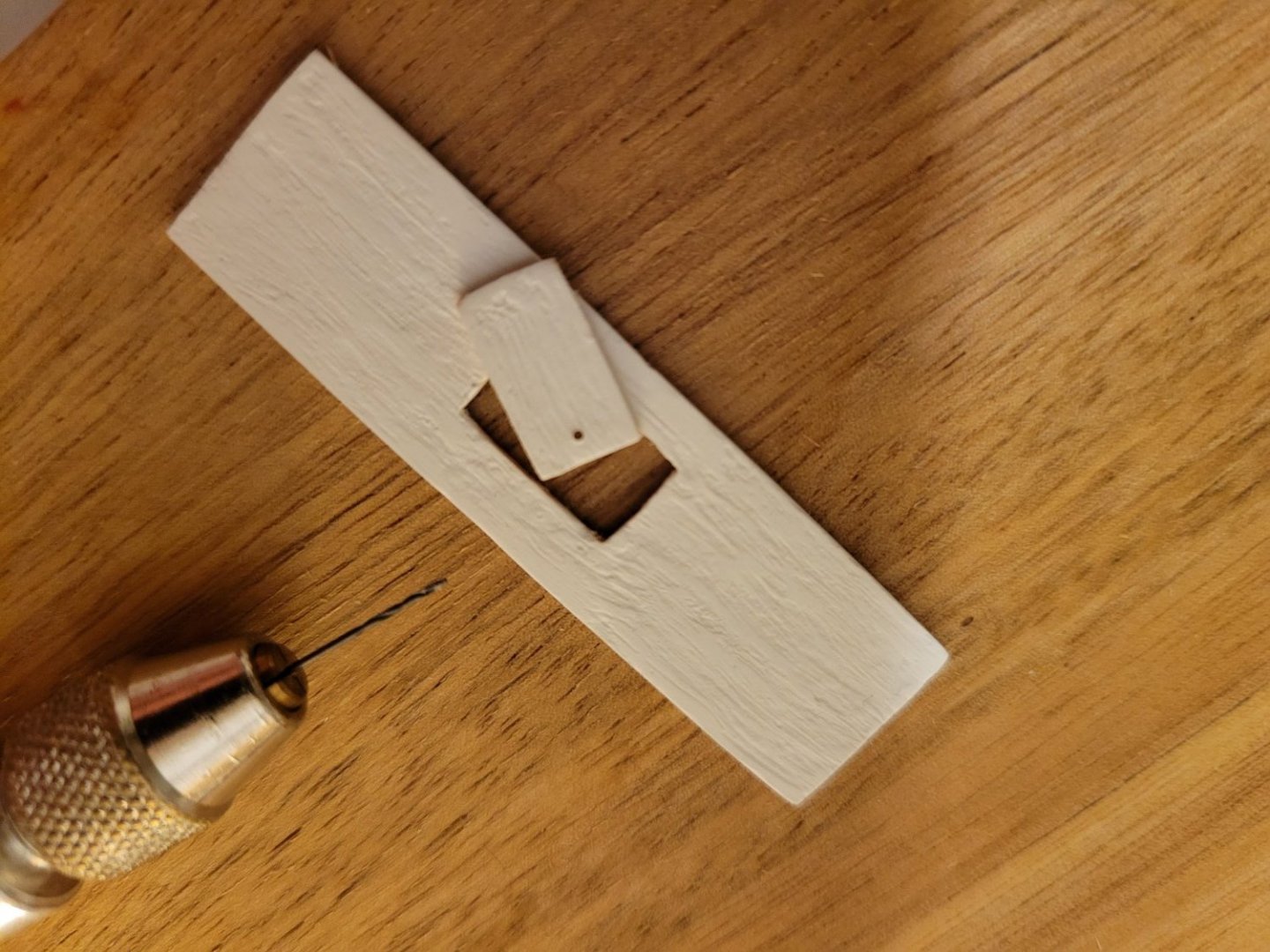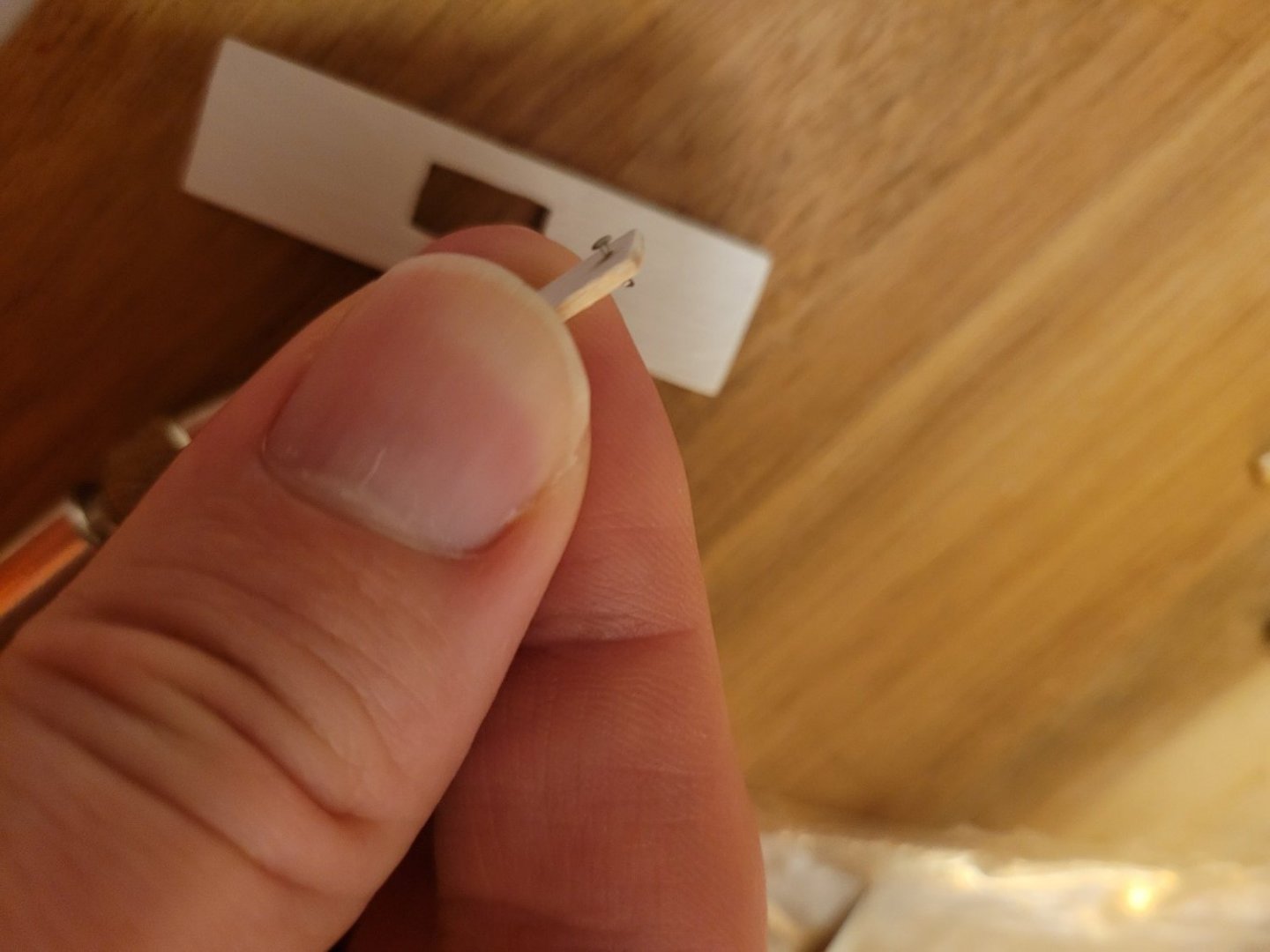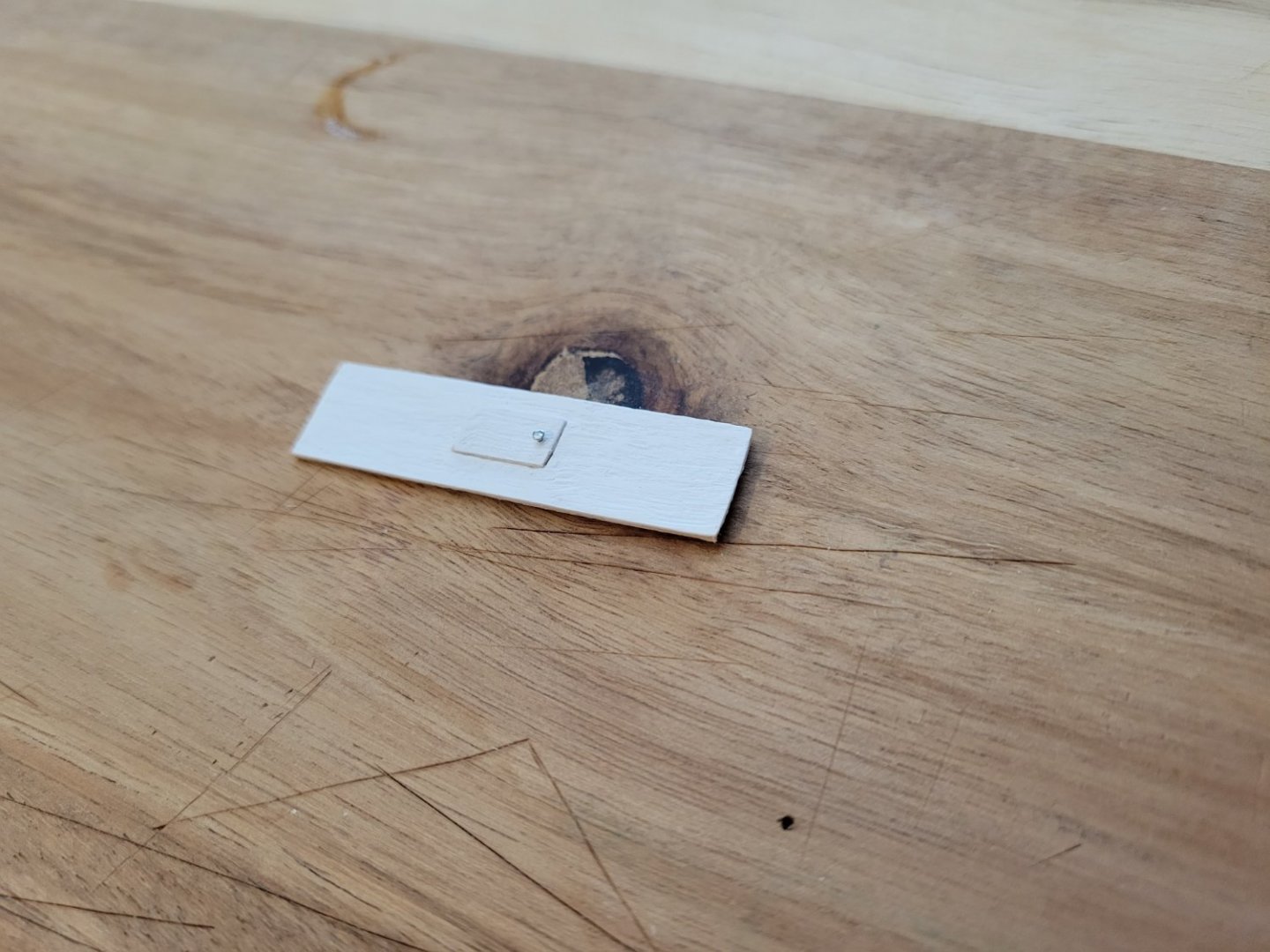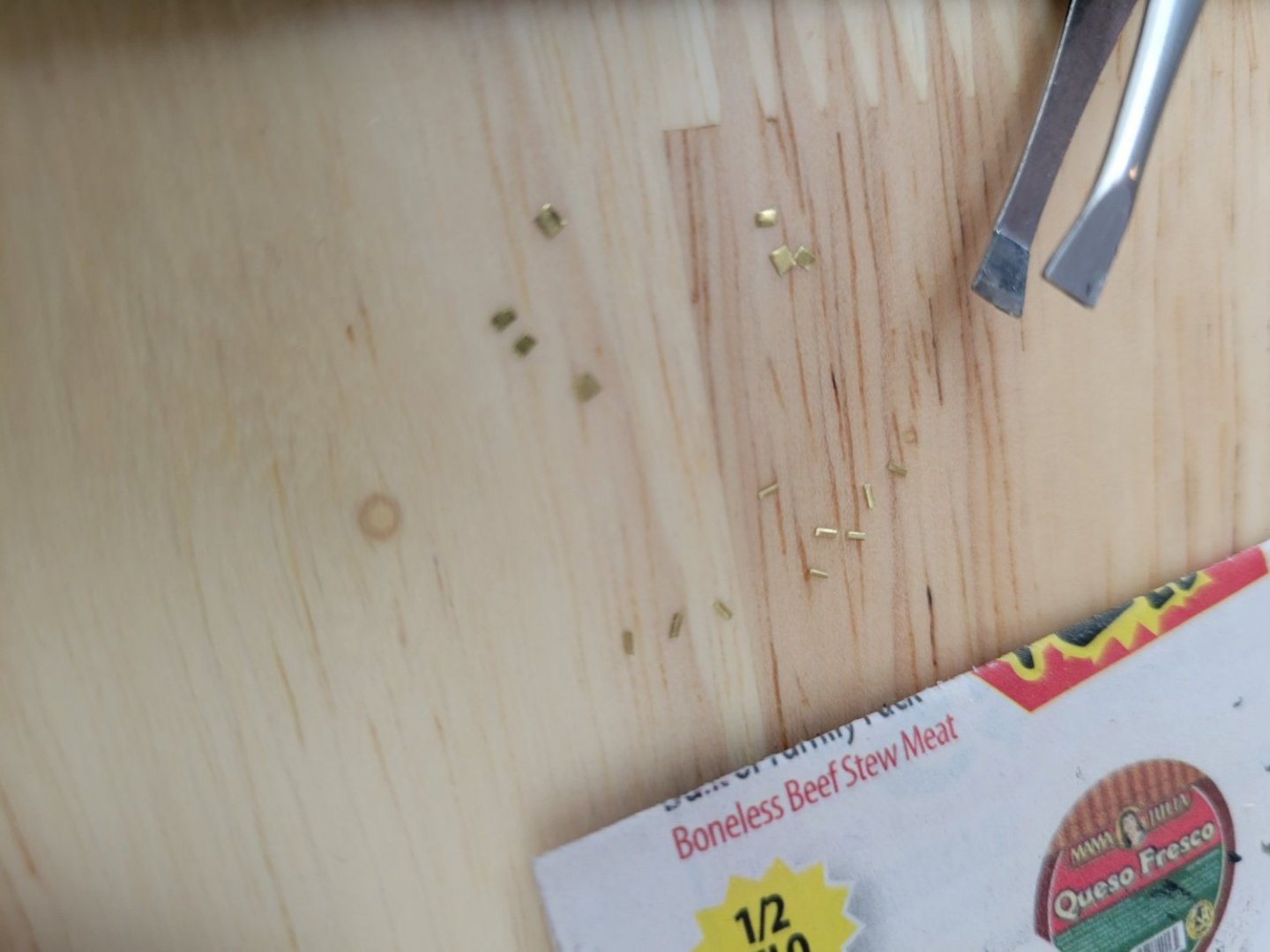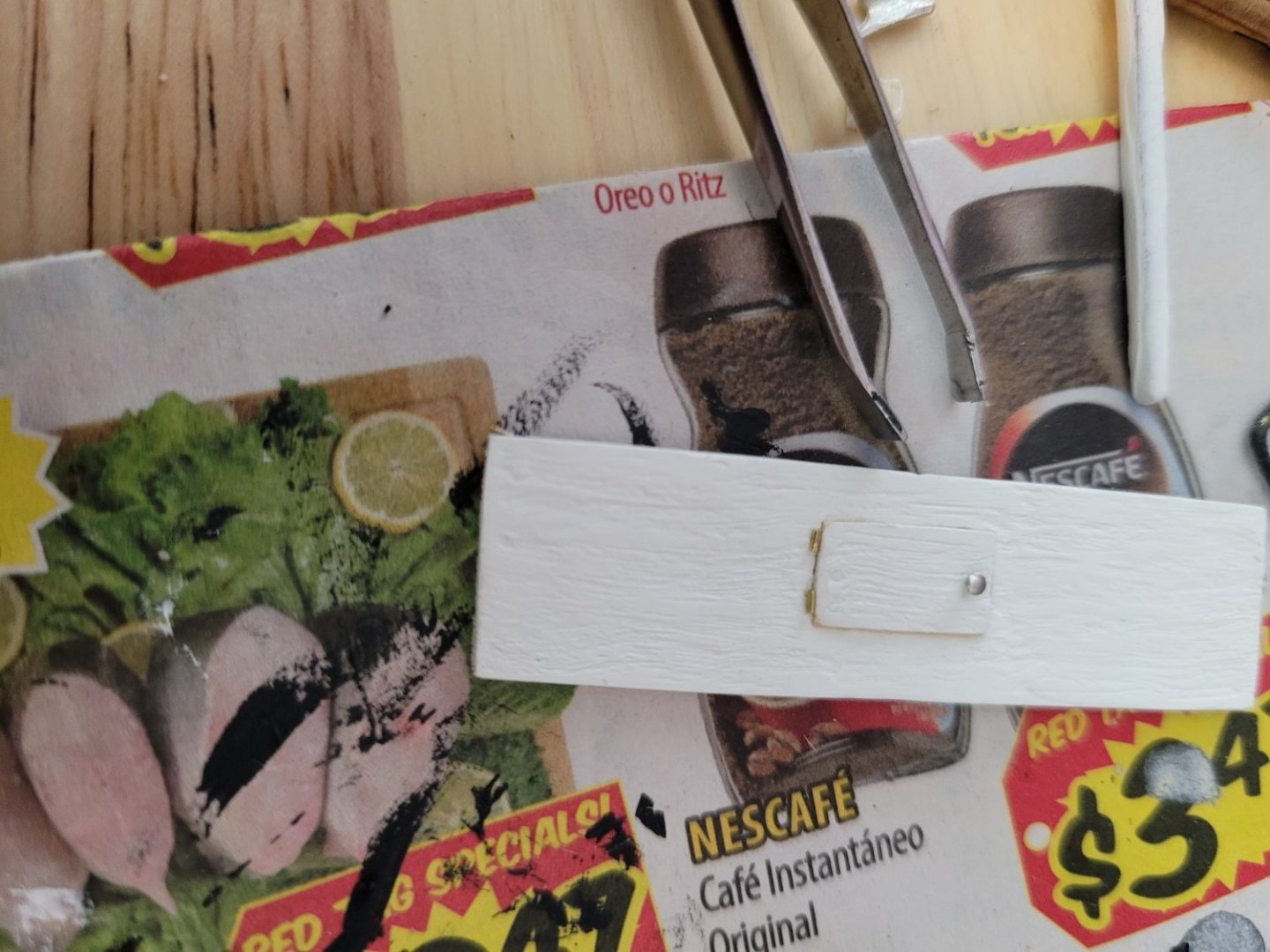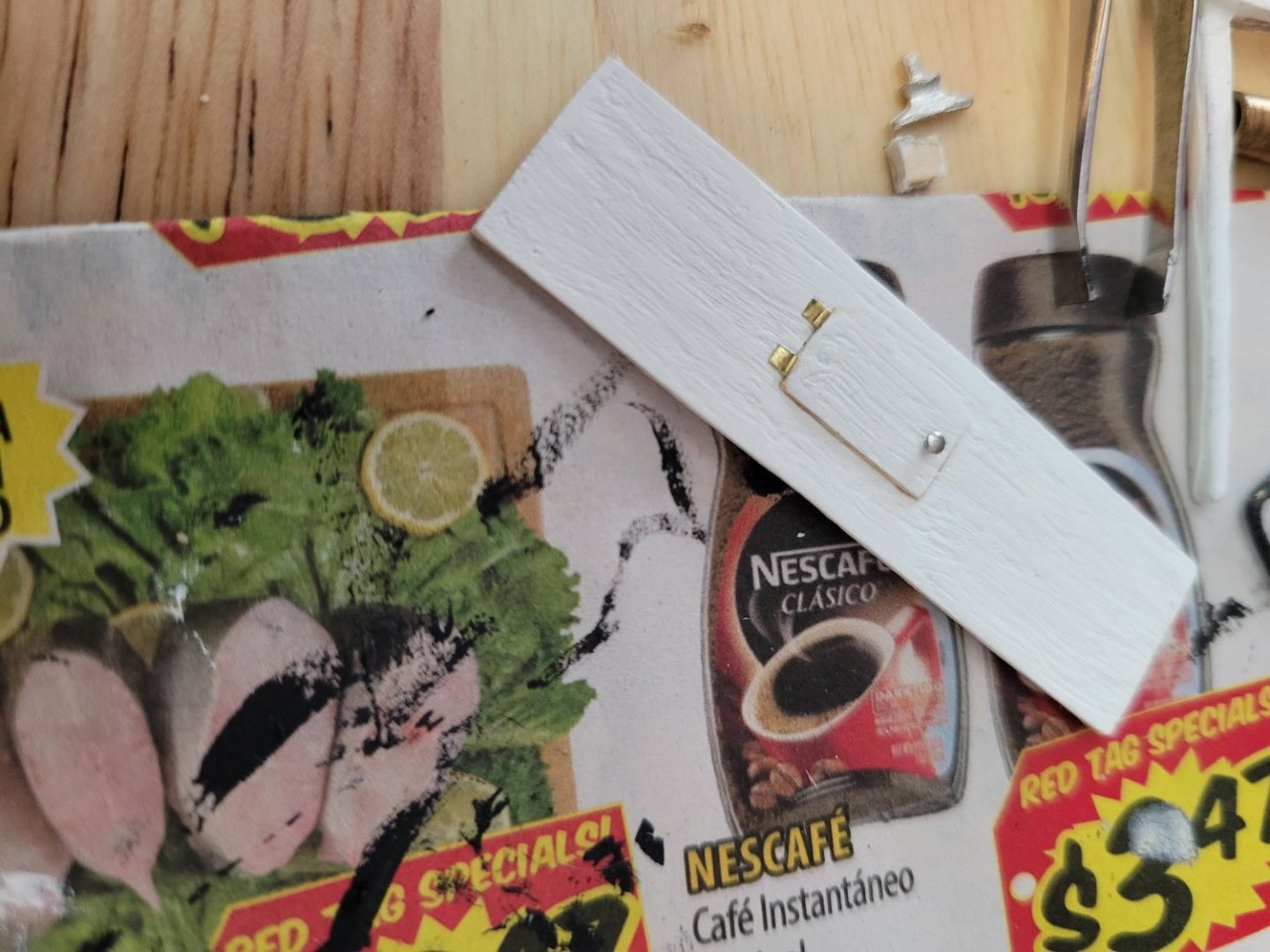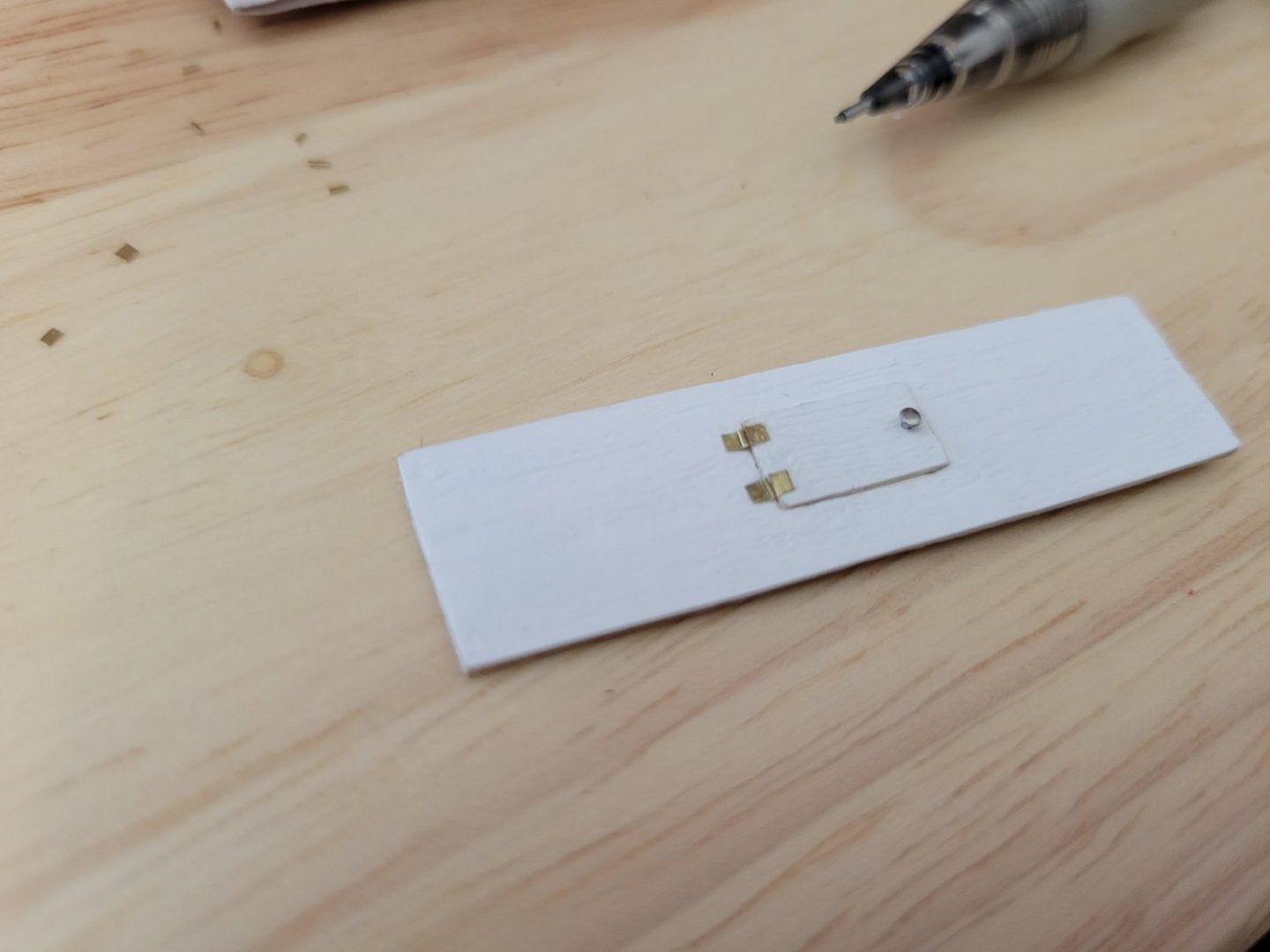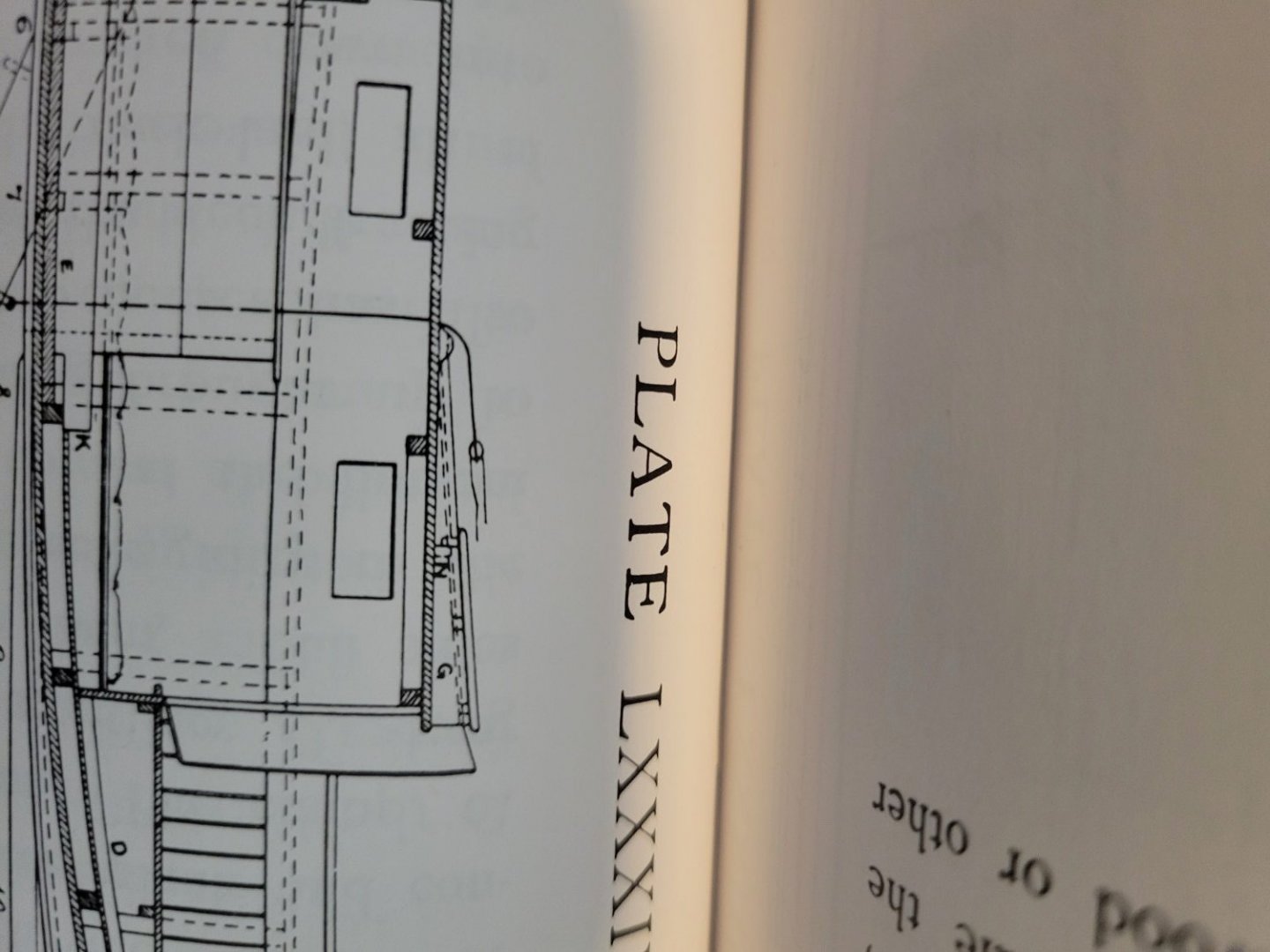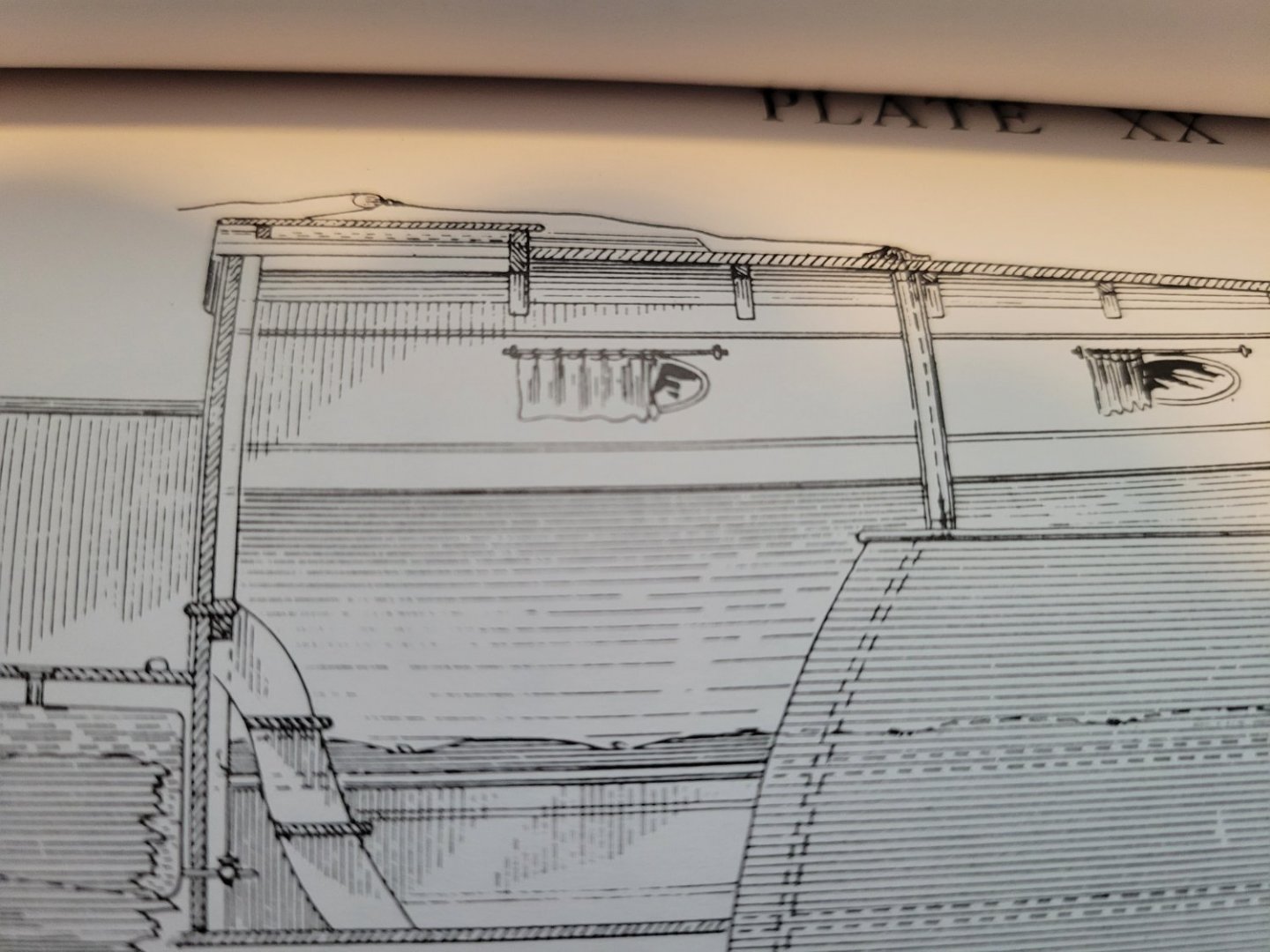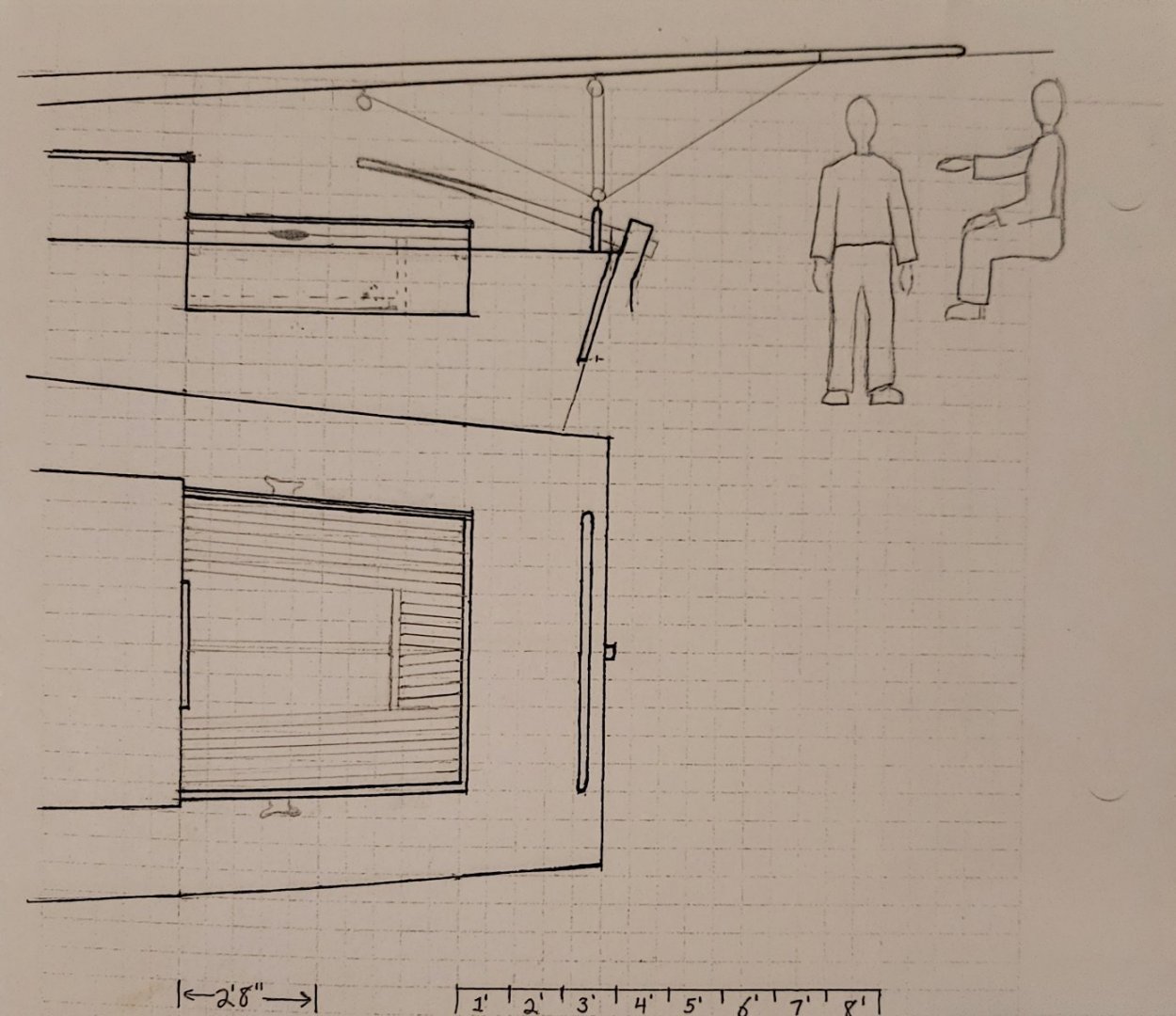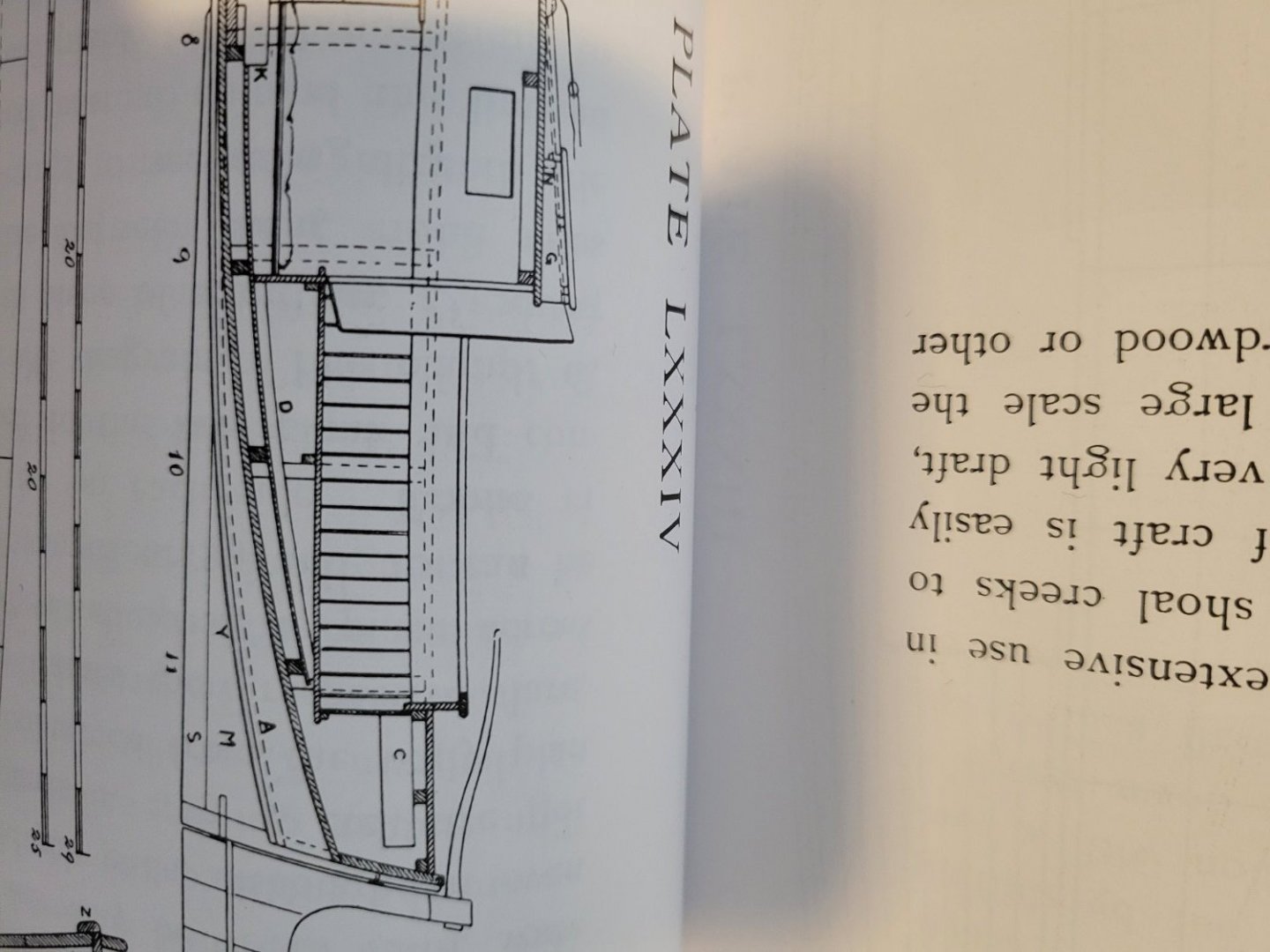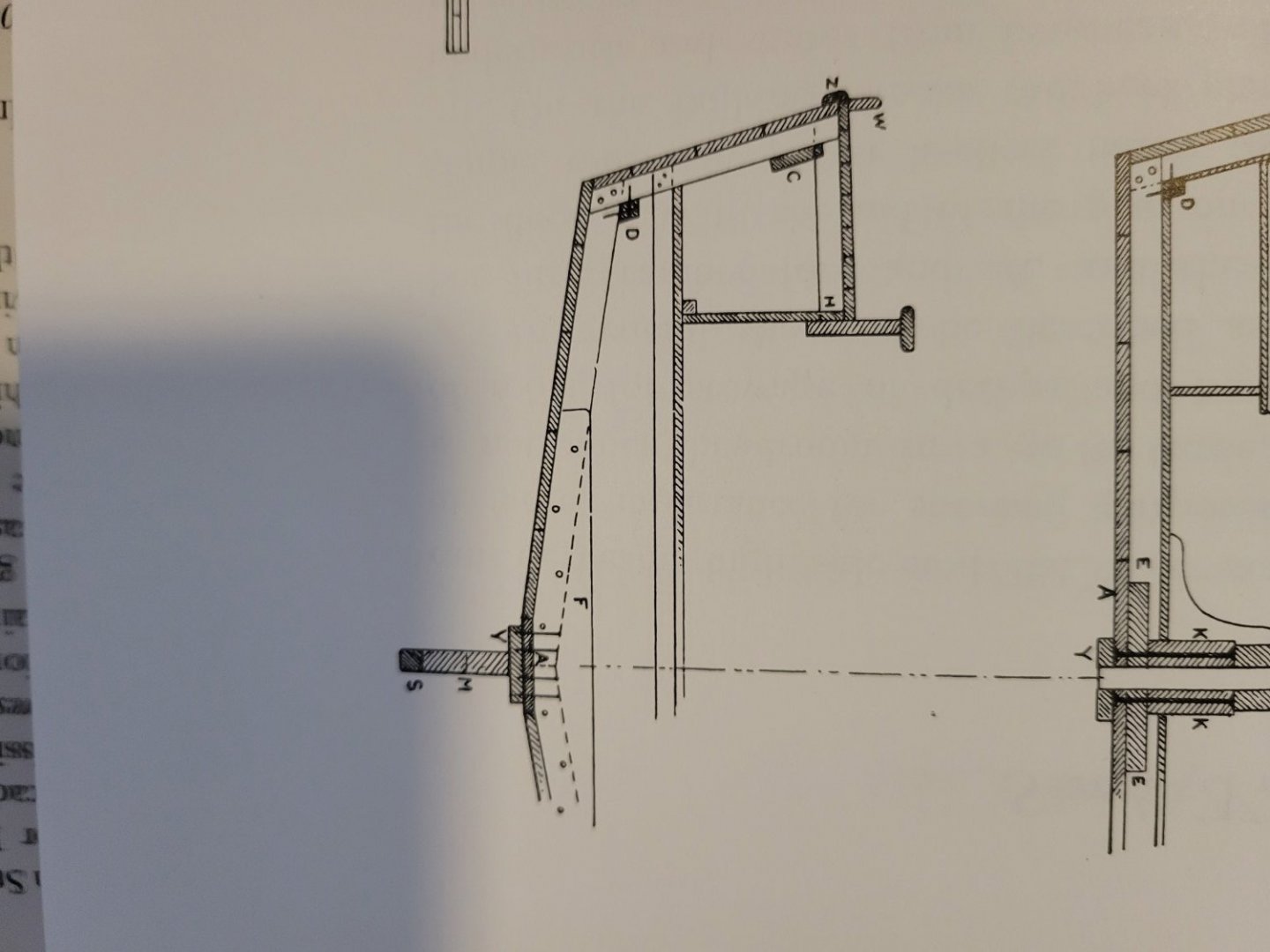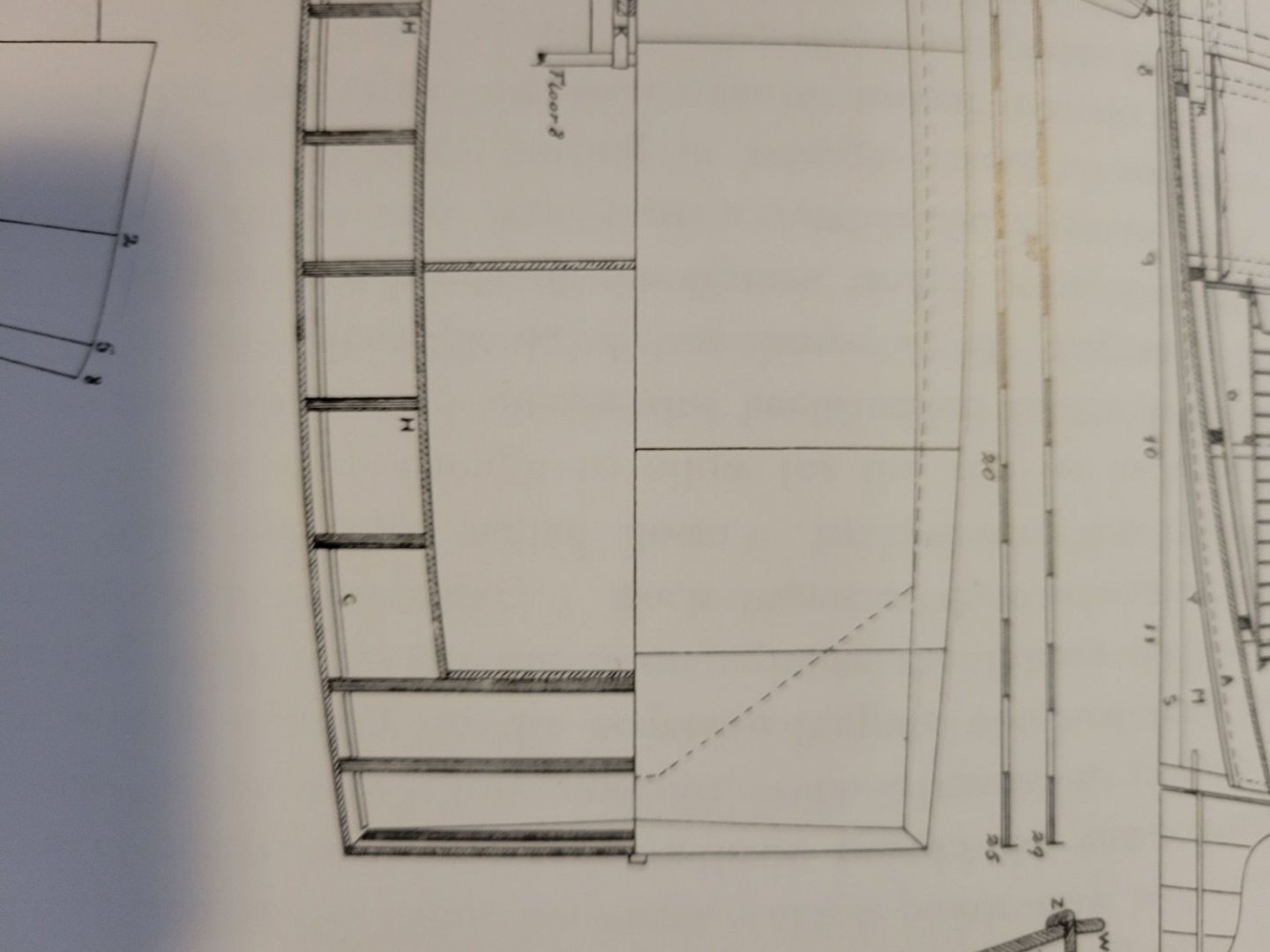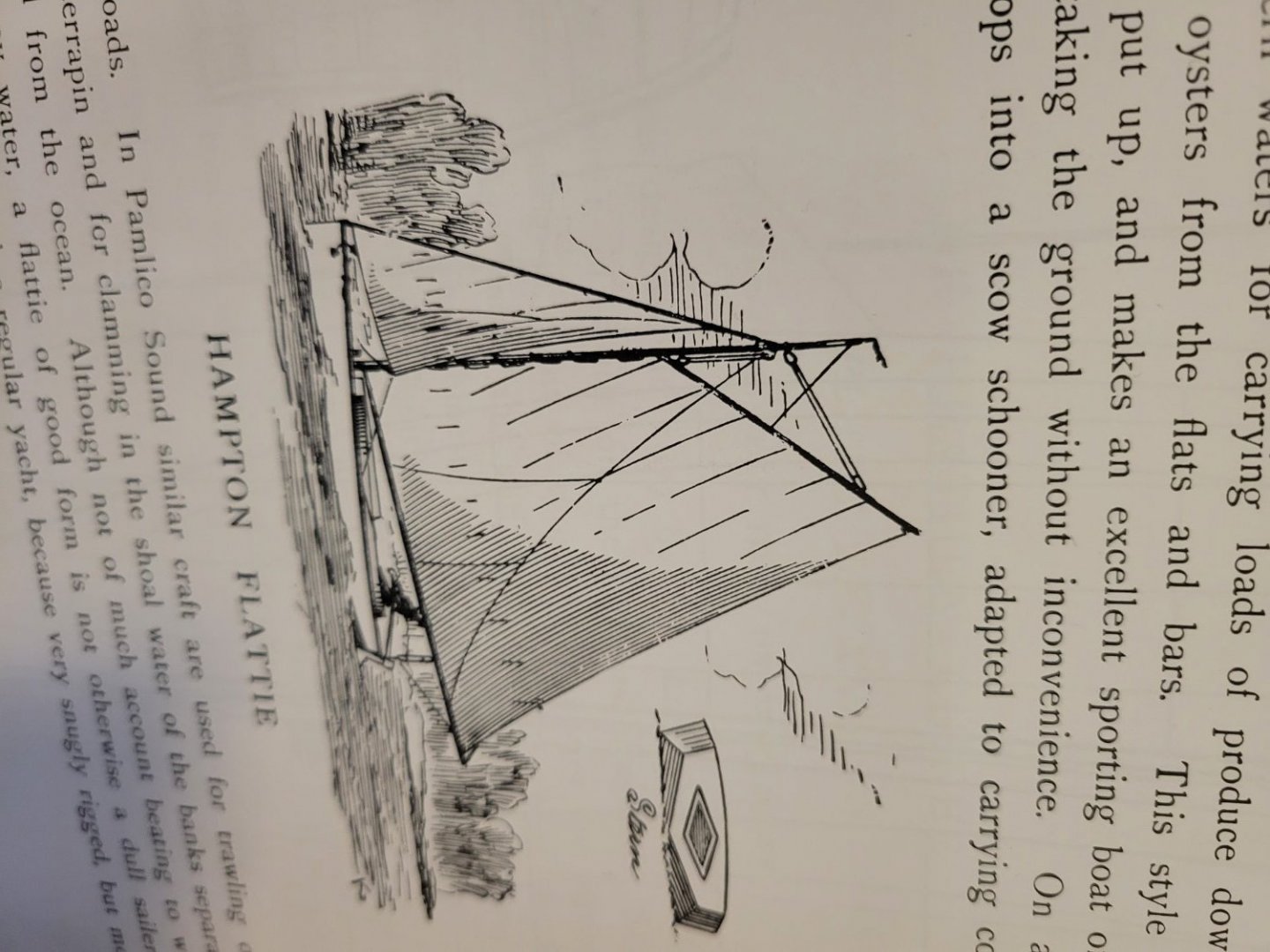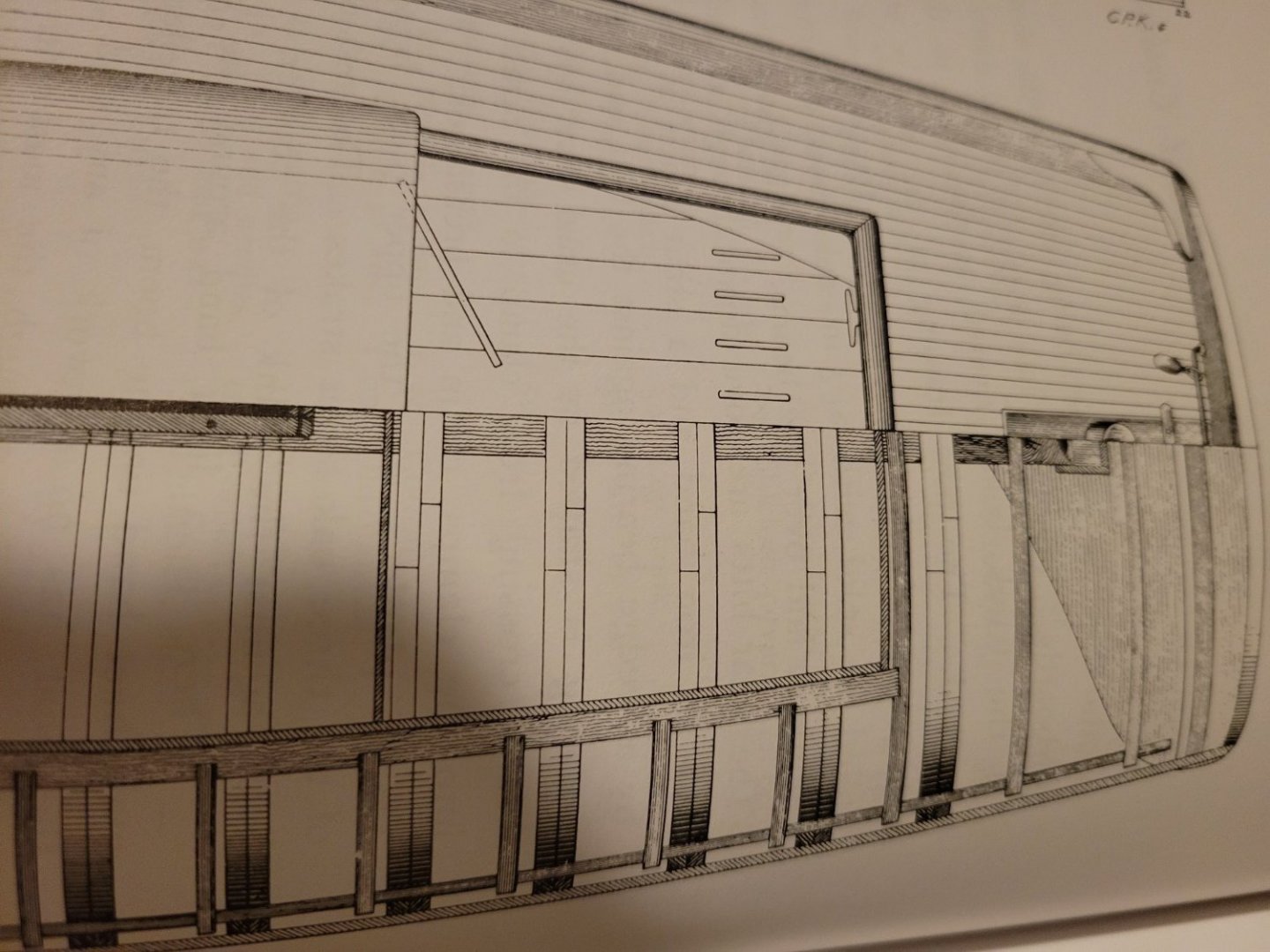
mark.bukovich
Members-
Posts
95 -
Joined
-
Last visited
Content Type
Profiles
Forums
Gallery
Events
Everything posted by mark.bukovich
-
It's been a while, but I just wanted to post in here to show the fruits of this discussion. She's almost finished, and this thread has been a huge help and influence. @mnl I'm thinking about how I want to finish the mainsheet. I'm thinking in this configuration, the boat is likely heeling to starboard, and the helmsman sitting on the port bench. If he needed to cleat the main, he would probably do that on the port cleat with the sheet crossing over the tiller, right? I'm guessing the remaining line would be coiled on the cockpit floor maybe? I'm also guessing all that extra coiled line for the centerboard lead on the cabin roof is unnecessary. I kind of like it though 😄
-
Update I'm just about done with everything except the rigging and a few fittings. deck trim My paint job greatly suffered around the cabin where it met the deck, and also around the hatches. I decided to add some extra trim to cover it up, and I think the result turned out very nice. I used the "English Oak" stain from Model Shipways. It turned out to be an almost perfect match for the mahogany pieces that came with the kit. It is more of a paint than a dye, but by applying and wiping it off several times, I think I got a decent result. The offending paint job: The results: I also decided to try to fix some white showing through between the toe rail and rub rail: I used a hobby knife to give a mechanical pencil a very sharp point: Here you can see a section with pencil next to the white showing through: rudder I glued on the gudgeons and hung the rudder. This allowed me to also glue in the traveler. The rudder swings pretty well, and I got a good result.
- 29 replies
-
- first build
- Chesapeake Bay Flattie
-
(and 2 more)
Tagged with:
-
Nice! I think rigging the sails is an exciting part of a build.
- 90 replies
-
- Model Shipways
- muscongus bay lobster smack
-
(and 1 more)
Tagged with:
-
I'm about finished with the model I've been working on (Midwest Chesapeake Bay Flattie) and beginning my next one. The Light Melonseed is a small skin-on-frame sailboat designed by Dave Gentry and based on Jersey Melonseed gunning skiffs. If you want to check it out, here is a link: http://gentrycustomboats.com/Melonseed.html I purchased the plans and intend to build the full-size boat once I have the space to do so. Until then, I will be building a scale model and posting the progress here. This will be my second boat/ship model and my first "scratch" build. The main difference with a kit here is that I need to plan and acquire all the materials and fittings as well as cut out my own frames and stuff like that. This will also be interesting in that it is a skin-on-frame design, so instead of being planked, it will be "skinned". I ordered my lumber from Model Expo. I will be able to match scale dimensions perfectly for most components of the boat by laminating pre-cut strips. I will be doing a good amount of laminating for this model. The lumber. Building a "strongback" that will facilitate accurate framing of the boat.
-
Cool. I like the reinforced portions of the sail. In addition to looks, this will probably help avoid damaging the sail while bending it to the spars and rigging everything up. Does the sail have rings/grommets at the holes, or just punched through the cloth? I just got done with sails for the kit I'm working on and used an acrylic varnish. It looks like the Model Shipways Lobster Smack is more involved and advanced in many ways. I'm definitely considering doing this kit at some point.
- 90 replies
-
- Model Shipways
- muscongus bay lobster smack
-
(and 1 more)
Tagged with:
-
Nice! In this kit, does the sail get any coating like clear-coat, Polyurethane, or diluted glue?
- 90 replies
-
- Model Shipways
- muscongus bay lobster smack
-
(and 1 more)
Tagged with:
-
Thanks! I agree and I'm finding that this community and hobby is filled with encouragement and tons of help. I have been working on the rigging and sails and having a lot of fun. It's not easy working with thread and tying tiny knots and such, but I'm enjoying it. Here is the progress: Boom bent to the main-sail and reefing lines attached: I really didn't like the idea of individually gluing the tip of each reefing line and holding it apart from the sail to let the glue dry one at a time. So before attaching the reefing lines, I used clothesline pins to hold each reefing line in order to glue the ends: I used a round turn and two half-hitches for most cases where line needed to be hitched to something. In "The Young Sea Officer's Sheet Anchor," this is called a "Rolling Hitch". Sail bent to both spars. Because I painted the mast hoops, I decided to attach them to the sail first before attaching it to the mast since I didn't want to bend the mast hoops wide and scratch the paint. If you decide to do this, I would recommend gluing the boom gooseneck to the mast before bending the boom to the sail (contrary to what the directions say). I wound up tearing the corner of my sail while fitting the gooseneck into the hole on the mast. I was able to fix the tear with glue luckily, but I would do it differently next time. A close up to show the glue "needle" technique suggested in the directions. I found that it worked really well. Just soak some CA glue on the end of the thread and, once dried, snip it at an angle. You can see the "needle" easily passing through a block in the lower part of this picture. I didn't like the kit's suggestion to just glue lazy jacks to the bottom of the boom, so I made some fittings from brass sheet and painted them with black primer:
- 29 replies
-
- first build
- Chesapeake Bay Flattie
-
(and 2 more)
Tagged with:
-
Awesome! I'm adding the Speel Jacht to my list of next models to build and definitely plan to add this Statenjacht afterwards as well. That cabin is just so cool! Is @*Hans* a representative from Kolderstok?
- 84 replies
-
- Statenjacht
- Kolderstok
-
(and 1 more)
Tagged with:
-
The kit I'm working on has the throat and peak halyards of a gaff sail stayed to the simple rod shown in the images. I can verify that this is how the plans are drawn for the real yacht the kit is based on (plans from Kunhardt's "Small Yachts" book). The instructions say to just wrap the line around the rod, but I highly doubt that's how it would have been done on the real deal. Would a hitch be tied to the rod, and the rest of the rope coiled on deck? Coiled on the rod? My current model (the cleat is for the jib halyard): Close up of the kit's example: From Kunhardt's plans:
-
Thanks! It was your build log that encouraged me to do more than just follow the instructions. I really liked the custom stuff you did on yours, and I'm finding it so much more fun
- 29 replies
-
- first build
- Chesapeake Bay Flattie
-
(and 2 more)
Tagged with:
-
I'm waiting on some supplies to arrive to finish working on the deck. In the meantime, I am going ahead and working on the rigging and sails. I'm pretty much just following the directions for the sails with one exception. Instead of using a pencil for the seams, I'm using a "GELLY ROLL" white gel pen. I got this idea from another Chesapeake Bay Flattie build log by @EricWilliamMarshall I know some like to make the sails look filled with wind by painting with diluted glue on a balloon or something. I will probably try this in a later build. For now, I'm just leaving them flat. After tracing the sails from the plan sheet to the sailcloth. Painted with clear acrylic and hung to dry. Next step for the sails will be cutting them out and bending them to the spars.
- 29 replies
-
- first build
- Chesapeake Bay Flattie
-
(and 2 more)
Tagged with:
-
Looks like an interesting craft. Also looks like you're getting a lot of good advice. I will follow along and see if I can learn something.
- 11 replies
-
And hi from yet another Texan (from the dfw area) I'm also a noob. I've been working on a Chesapeake Bay Flattie model from Midwest Products (no longer in production), and I've been loving it and having more fun than I thought I would. I found your build log and will follow.
-
This is very cool! I've always been interested in the 17th C Dutch vessels, but didn't know about Kolderstok. I might have to try one of their kits. I look forward to seeing your progress!
- 84 replies
-
- Statenjacht
- Kolderstok
-
(and 1 more)
Tagged with:
-
Fixing up the gaff I cut off three pieces from a small dowel and also a small 1/16" thick rectangle, and drilled through the middle. I then sanded these pieces to round the edges and smooth everything over. I found using a pin to hold the tiny beads very helpful. I just had to be mindful of where the sharp end of the pin was pointed. Then I drilled four little holes in the gaff jaws. Then I threaded some of the line included in the kit through everything and tied figure-8 knots to keep everything in place. I added a dab of CA glue to the knots to keep them from unraveling.
- 29 replies
-
- first build
- Chesapeake Bay Flattie
-
(and 2 more)
Tagged with:
-
I'm waiting for some supplies to arrive for staining the trim pieces and part of the sail preparation. While I wait, I decided to try my hand at making blocks. I tried the method from Milton Roth's "Ship Modeling from Stem to Stern" on pg 179. Basically laminate the block from small strips of wood. There will be two of these double blocks on my model to work with the main sheet. Other blocks will be the single blocks that came with the kit, but I will shape them with sandpaper so they look a little nicer. Here are the initial pieces: I rounded the top of the smaller strips and glued them to the the larger piece using a strip of wood to achieve proper spacing with the thin top piece. (I used normal white wood glue) A block "sandwich" glued together: I clamped it all together with a clothesline pin using a little torn piece of parchment paper to keep from accidentally gluing the block to the pin. After allowing the glue to cure for 24 hours (actually about 48 hours in this case), I used sandpaper to shape the block: Then I used a saw to lightly cut a shallow groove around the block for the strop:
- 29 replies
-
- first build
- Chesapeake Bay Flattie
-
(and 2 more)
Tagged with:
-
Just a quick update. I've finished the cockpit floors, lockers, benches, and companionway. Next step for the hull is the coaming rails and I will add some trim around the cabin, cockpit, and hatches that will cover some of the poor paint job. I'm also working on some of the fittings and rigging items and will post pictures of that soon (creating a couple of blocks).
- 29 replies
-
- first build
- Chesapeake Bay Flattie
-
(and 2 more)
Tagged with:
-
Update I have made pintles and gudgeons using a little temporary jig made from a pin and some scrap wood. I will paint these with some black primer before gluing on to the rudder and sternpost. My pintles are just gudgeons with a cut down pin glued: I have a new rudder assembly now. It needs a little more finishing, but I think looks much better than my previous one: This is the progress on the modified cockpit: Without gluing anything down, I test fit with the model:
- 29 replies
-
- first build
- Chesapeake Bay Flattie
-
(and 2 more)
Tagged with:
-
Thanks! I'm getting deeper into it than I originally anticipated, but I'm enjoying it. I think what made me decide to do modifications was two things: 1) when I put on the toe rails and rub rails, it totally changed the way I saw the boat and I wanted to give it some TLC. 2) @wefalck told me about regrets regarding not doing what you could have done. It seems especially true when the model is sitting on the shelf reminding you everyday. I'm doing the cockpit flooring a little different now with the cockpit modification I'm doing, but it will still look similar.
- 29 replies
-
- first build
- Chesapeake Bay Flattie
-
(and 2 more)
Tagged with:
-
Ok, time for an update! I've had a great discussion on the other thread I mentioned, and I've finally decided on a plan for the cockpit. As part of that discussion, I've been doing some research. There is a Chesapeake Bay Flattie in both Howard Chapelle's American Small Sailing Craft and Kunhardt's Small Yachts. It turns out that the flattie in Kunhardt's book is exactly what the Midwest kit is based on. Anyhow, this is a drawing of how I will configure the cockpit: And here are some pictures showing work on the panels that go below the cockpit benches: Painted white and drilled a tiny hole A pin glued into the hole and the needle snipped short. Panel glued back into the larger panel slightly protruding. The tiny little pieces used for the hinges: First, I glued the little snips of wire, then the lower part of the hinge, and the the upper part:
- 29 replies
-
- first build
- Chesapeake Bay Flattie
-
(and 2 more)
Tagged with:
-
Ok, this might be my final drawing. Let me know what you think. I also have one more question about the centerboard line and cleat if you guys are up for it. In the kit, the centerboard line comes out of the cabin roof and goes directly to a cleat, and that's it. In Kunhardt's drawing, the centerboard line is attached to a block that has a line going through. According to Kunhardt, the standing end of the line is attached to the cabin roof, and the working end is tied to a cleat on the cabin roof close to the cockpit. However, he doesn't explain or show how the standing end is fastened to the cabin roof. Would it be another cleat? How would you go about fastening such a line? Here is the centerboard line on Kunhardt's flattie, and following is another yacht in Kunhardt's book with a similar setup:
-
Yeah, it looks like for the guy sitting on the low side, the whole boat is in his way. If you imagine yourself piloting the boat in my drawing, and you could choose to remove the aft portion of the seat (in between the side benches), would you? Although it looks nice, seems like this rear seat is pretty much useless and in the way when a boat has a tiller. Also, assuming those cleats in my drawing outside the coaming are for the jib sheets, if you were piloting that boat and needed to sheet the main temporarily, where would you hope there was another cleat?
-
So basically, it's quite important for the cockpit to accommodate sitting on the high side while healing? Take a look at my updated drawing see if you think it would take care of that. Also, do you think the seating in the aft cockpit would be superfluous? (Note that I added a plank on the cockpit floor center to brace feet against.) I am basing the dimensions on this article: https://www.practical-sailor.com/sailboat-reviews/comfortable-sailboat-cockpit-seating And taking some inspiration from this Herreshoff yacht:
-
Another quick update. I saw this Herreshoff Newport 29 design: http://www.herreshoffdesigns.com/newport29.html Although this is a larger and more modern boat, the cockpit is similar in size (possibly a little bigger), so I think it's a good example of how to make it work. Basically, the coaming "rails" are true seats instead of just rails. I'll do another drawing and upload. Basically, I will replace the kit's coaming rails with seats set on top of the coamings (along with appropriate supporting structure) . The distance to the cockpit floor is a little higher than ideal, but I can raise the planked flooring or add cleats that act as foot rests and braces while heeled. Edit: looking closer at the brochure, I can see that coamings still rise slightly higher than the seats on the sides. It also has a wheel instead of a tiller.
-
Update (Let me know what you guys think about this) A copy of Kunhardt's "Small Yachts" arrived today, and it was a bullseye. The Midwest Chesapeake Bay Flattie kit is absolutely based on Kunhardt's plans. Based on the book, it also seems like Midwest wasn't far off. Kunhardt's plans do not show any seating in the cockpit or any cleats or rigging for this boat. In fact, the only running rigging shown is the line that controls the centerboard. Throughout the book, Kunhardt does show cockpit seating in some designs in the book, the cockpit is usually much deeper and narrower for those designs. Some designs also show cleat locations, both inside the coamings and without. The "Coot" has a similar but smaller cockpit with cleats inside the coamings similar to the Midwest kit. Kunhardt also shows a Hampton Flattie with the helmsman leaning against the aft coaming.
About us
Modelshipworld - Advancing Ship Modeling through Research
SSL Secured
Your security is important for us so this Website is SSL-Secured
NRG Mailing Address
Nautical Research Guild
237 South Lincoln Street
Westmont IL, 60559-1917
Model Ship World ® and the MSW logo are Registered Trademarks, and belong to the Nautical Research Guild (United States Patent and Trademark Office: No. 6,929,264 & No. 6,929,274, registered Dec. 20, 2022)
Helpful Links
About the NRG
If you enjoy building ship models that are historically accurate as well as beautiful, then The Nautical Research Guild (NRG) is just right for you.
The Guild is a non-profit educational organization whose mission is to “Advance Ship Modeling Through Research”. We provide support to our members in their efforts to raise the quality of their model ships.
The Nautical Research Guild has published our world-renowned quarterly magazine, The Nautical Research Journal, since 1955. The pages of the Journal are full of articles by accomplished ship modelers who show you how they create those exquisite details on their models, and by maritime historians who show you the correct details to build. The Journal is available in both print and digital editions. Go to the NRG web site (www.thenrg.org) to download a complimentary digital copy of the Journal. The NRG also publishes plan sets, books and compilations of back issues of the Journal and the former Ships in Scale and Model Ship Builder magazines.

